This class describes a grid3d mesh. More...
#include <EMM_Grid3D.h>
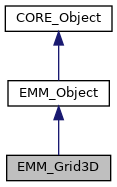
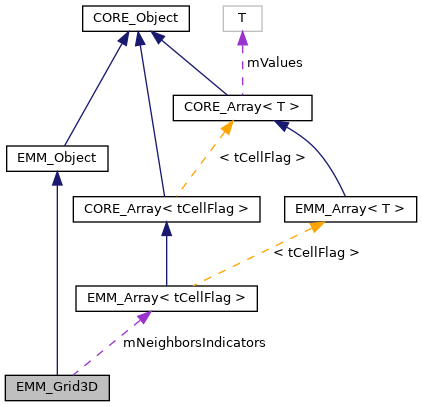
Public Member Functions | |
| void | updateMagnetizedElementsNumber () |
| compute the magnetized elements number form neighbors array the number of magnetized elements is returned by the method getMagnetizedElementsNumber() More... | |
| void | setSegmentsNumber (const tUInteger &nx, const tUInteger &ny, const tUInteger &nz) |
| set the segments number in all directions More... | |
| void | getSegmentsNumber (tUInteger &nx, tUInteger &ny, tUInteger &nz) const |
| get the segments number in all directions More... | |
| const tUInteger * | getSegmentsNumber () const |
| get the segments number in all directions More... | |
| const tUInteger & | getSegmentsNumber (const tUSInt &d) const |
| get the segments number in direction d More... | |
| tUIndex | getElementIndex (const tUIndex &i, const tUIndex &j, const tUIndex &k) const |
| return the element index of the element located at (i,j,k) coordinates on segments number More... | |
| void | getElementSegmentIndices (const tUIndex &index, tUIndex &i, tUIndex &j, tUIndex &k) const |
| return the element coordinates on segments number More... | |
| tUIndex | getElementSegmentIndex (const tUIndex &index, const tUSInt &d) const |
| return the element coordinates on segment number on d direction More... | |
| tUIndex | getElementsNumber () const |
| get the elements number of the grid More... | |
| tUIndex | getVerticesNumber () const |
| get the vertices number of the grid More... | |
| void | setStepsSize (const tReal &lx, const tReal &ly, const tReal &lz) |
| set the step size in the direction x,y,z : length of segment in each direction More... | |
| void | setStepSize (const tReal &l) |
| set the step size in the direction x,y,z when it's the same for the 3 directions More... | |
| const tReal * | getStepsSize () const |
| get the step size in all directions More... | |
| const tReal & | getStepSize (const tUSInt &d) const |
| get the step size in the direction d More... | |
| tReal | getMinStepSize () const |
| get the min step size More... | |
| tReal | getMaxStepSize () const |
| get the max step size More... | |
| const tReal * | getAdimensionizedSegmentsSize () const |
| return the adimensionized segments size More... | |
| const tReal & | getReferenceLength () const |
| get the reference length More... | |
| const tReal & | getMaxElementSize () const |
| get the max length of the cell More... | |
| const tReal & | getMinElementSize () const |
| get the min length of the cell More... | |
| const tReal * | getSegmentsSize () const |
| return the segments size More... | |
| tBoolean | isCubicVolume () const |
| return true if the element is cubic More... | |
| tReal | adimensionize () |
| compute the adimensionized constants More... | |
| const tReal & | getAdimensionizedVolume () const |
| get the adimensionized element volume <=1 More... | |
| void | computeNormalFaceAdimensionizedLength (tReal *L2) const |
| build the adimensionized length for each face in its normal direction More... | |
| void | setIsPeriodic (const tBoolean v[3]) |
| set if the mesh is periodic on all directions More... | |
| void | setIsDirectionPeriodic (const tUSInt &k, const tBoolean &v) |
| set if the mesh is periodic on all directions More... | |
| const tBoolean * | isDirectionPeriodic () const |
| get if the mesh is periodic More... | |
| const tBoolean & | isDirectionPeriodic (const tFlag &d) const |
| get if the mesh is periodic on direction d More... | |
| const tBoolean & | isPeriodic () const |
| get if the mesh is periodic in one direction More... | |
| tCellFlag | getPeriodicIndicator () const |
get the periodic indicator by face  with with  if face f is periodic More... if face f is periodic More... | |
| const tUIndex & | getMagnetizedElementsNumber () const |
| get the number of magnetized elements More... | |
| tBoolean | isElementMagnetized (const tUIndex &index) const |
| tBoolean | isInMagnetizedDomainInterior (const tUIndex &index) const |
| void | buildMagnetizedElements (const EMM_MatterField &matters, CORE_BooleanMorseArray &magnetizedElements) const |
| build the magnetized element morse array More... | |
| tBoolean | hasNeighborToFace (const tUIndex &iElement, const tUSInt &iFace) const |
| return true if the element at index iElement have a magnetized neighbor with common face iFace in [0,FACES_NUMBEr_PER_ELEMENT[ false otherwise More... | |
| tUIndex | getNeighborElement (const tUIndex &index, const tUCInt &iFace) const |
| return the index of the element which is next to the element iElement with iFace in common More... | |
| tUIndex | getNeighborElement (const tUIndex &iCell, const tCellFlag &N, const tBoolean isPeriodic[3], const tUCInt &f) const |
| return the index of the element which is next to the element iElement with iFace in common More... | |
| SPC::EMM_CellFlagArray | getNeighborsIndicatorsByReference () const |
| get the neighbor elements for reading More... | |
| const EMM_CellFlagArray & | getNeighborsIndicators () const |
| get the neighbors indicator for each element for reading More... | |
| EMM_CellFlagArray & | getNeighborsIndicators () |
| get the neighbor elements for writing More... | |
| const tCellFlag & | getNeighborIndicator (const tUIndex &index) const |
| get the neighbor indicator of the element at index More... | |
| void | buildNeighborsIndices (const EMM_MatterField &matters, CORE_UIndexMorseArray &neighbors) const |
| build the neighbors index: for each element i build all the (magnetized or not) neighbors of element i More... | |
| void | buildMagnetizedNeighborsIndices (const EMM_MatterField &matters, CORE_UIndexMorseArray &neighbors) const |
| build the neighbors : for each element i build all the magnetized neighbors of element i More... | |
| void | updateLimitConditionOnPoints (EMM_LimitConditionArray &lc) const |
| update the limit condition of each point. More... | |
| tBoolean | loadFromFile (const tString &fileName) |
| load from a file More... | |
| tBoolean | saveToFile (const tString &fileName) const |
| save to a file More... | |
| virtual tString | toString () const |
| turn the mesh into string More... | |
| void | getSharedPointer (SP::CORE_Object &p) |
| get the shared pointer of this class into p More... | |
| void | getSharedPointer (SPC::CORE_Object &p) const |
| get the shared pointer of this class into p More... | |
| tString | getClassName () const |
| return the class name of the object More... | |
| tString | getIdentityString () const |
| return the identity string of the object of the form className_at_address More... | |
| tString | getPointerAddress () const |
| return the identity string of the object More... | |
| template<class T > | |
| tBoolean | isInstanceOf () const |
| test if the clas T is an instance of this class More... | |
| tBoolean | isInstanceOf (const tString &name) const |
| test if the object is an instance of className More... | |
Static Public Member Functions | |
| static SP::EMM_Grid3D | New () |
| create a Grid3D object More... | |
| static tCellFlag | getPeriodicIndicator (const tBoolean periodicity[]) |
get the periodic indicator by face  with with  if face f is periodic More... if face f is periodic More... | |
| static tBoolean | IS_ELEMENT_MAGNETIZED (const tCellFlag &v) |
| test if the element woth neighbor indicator v is magnetized More... | |
| static tBoolean | isFaceOnDirichletBoundary (const tCellFlag &periodicity, const tUInteger &xCell, const tUInteger &yCell, const tUInteger &zCell, const tUCInt &f, const tUInteger &nPx, const tUInteger &nPy, const tUInteger &nPz, const tLimitCondition *dirichletPoints) |
| return tue if the face f of the magnetized cell (xCell,yCell,zCell) is on Dirichlet boundary More... | |
| static tBoolean | isFaceOnNeumannBoundary (const tCellFlag &periodicity, const tUInteger &xCell, const tUInteger &yCell, const tUInteger &zCell, const tUCInt &f, const tUInteger &nPx, const tUInteger &nPy, const tUInteger &nPz, const tLimitCondition *dirichletPoints) |
| return tue if the face f of the magnetized cell (xCell,yCell,zCell) is on Neumann boundary More... | |
| static tBoolean | GET_MASTER_PERIODIC_POINT (const tCellFlag &periodicity, const tUIndex &Nx, const tUIndex &Ny, const tUIndex &Nz, tUIndex &iQ, tUIndex &jQ, tUIndex &kQ) |
| get the index of master point in [0,pointsNumber[. The master point is the point in pair face in the periodical direction k corresponding to the point in face unpair in the periodical direction k. More... | |
| static tBoolean | IS_POINT_IN_BOUNDARY (const tBoolean x[], const tCellFlag &N, const tBoolean periodicity[]) |
| test if the local point is in magnetized boundary. More... | |
| static tBoolean | IS_POINT_IN_BOUNDARY (const tCellFlag &X, const tCellFlag &N, const tCellFlag &P) |
| test if the local point is in magnetized boundary More... | |
| static tBoolean | IS_POINT_IN_PERIODIC_BOUNDARY (const tBoolean x[], const tCellFlag &N, const tBoolean periodicity[]) |
| test if the local point is in a periodical boundary More... | |
| static tBoolean | IS_POINT_IN_PERIODIC_BOUNDARY (const tCellFlag &X, const tCellFlag &N, const tCellFlag &P) |
| test if the local point is in periodical boundary More... | |
| static tBoolean | IS_POINT_IN_SLAVE_PERIODIC_BOUNDARY (const tBoolean x[], const tCellFlag &N, const tBoolean periodicity[]) |
| test if the local point is in slave periodical boundary More... | |
| static tBoolean | IS_POINT_IN_SLAVE_PERIODIC_BOUNDARY (const tCellFlag &X, const tCellFlag &N, const tCellFlag &P) |
| test if the local point is in slave periodical boundary More... | |
| static void | setIsMemoryChecked (const tBoolean &v) |
| set if the memory checking is used More... | |
| static void | setOut (SP::CORE_Out out) |
| set the output stream More... | |
| static void | resetOut () |
| reset the output stream More... | |
| static void | setThread (SP::CORE_Thread thread) |
| set the thread More... | |
| static void | resetThread () |
| reset the output stream More... | |
| static CORE_Out & | out () |
| get the output More... | |
| static SP::CORE_Out | getOut () |
| get the output More... | |
| static CORE_Thread & | getThread () |
| get the profilier More... | |
| static const tBoolean & | isMemoryChecked () |
| get if the memory checking is used More... | |
| static tString | getClassName (const tString &identityString) |
| return the class name of the object More... | |
| template<class T > | |
| static tString | getTypeName () |
| get type name More... | |
| static tBoolean | is64Architecture () |
| return true if the machine is a 64 bits machine More... | |
| static tBoolean | is32Architecture () |
| return true if the machine is a 32 bits machine More... | |
| static tString | pointer2String (const void *obj) |
| return the string representation of a pointer More... | |
| static void | printObjectsInMemory (ostream &f) |
| print object in memory More... | |
| static void | printObjectsInMemory () |
| print object in memory in the standart output More... | |
| static tChar | getMaxChar () |
| get the max value for tChar type More... | |
| static tChar | getMinChar () |
| get the min value for tChar type More... | |
| static tUChar | getMaxUChar () |
| get the max value for tUChar type More... | |
| static tUChar | getMinUChar () |
| get the min value for tUChar type More... | |
| static tSInt | getMaxSInt () |
| get the max value for tSInt type More... | |
| static tSInt | getMinSInt () |
| get the min value for tSInt type More... | |
| static tUSInt | getMaxUSInt () |
| get the max value for tUSInt type More... | |
| static tUSInt | getMinUSInt () |
| get the min value for tUSInt type More... | |
| static tInt | getMaxInt () |
| get the max value for tInt type More... | |
| static tInt | getMinInt () |
| get the min value for tInt type More... | |
| static tUInt | getMaxUInt () |
| get the max value for tUInt type More... | |
| static tUInt | getMinUInt () |
| get the min value for tUInt type More... | |
| static tLInt | getMaxLInt () |
| get the max value for tLInt type More... | |
| static tLInt | getMinLInt () |
| get the min value for tLInt type More... | |
| static tULInt | getMaxULInt () |
| get the max value for tULInt type More... | |
| static tULInt | getMinULInt () |
| get the min value for tULInt type More... | |
| static tLLInt | getMaxLLInt () |
| get the max value for tULInt type More... | |
| static tLLInt | getMinLLInt () |
| get the min value for tLLInt type More... | |
| static tULLInt | getMaxULLInt () |
| get the max value for tULLInt type More... | |
| static tULLInt | getMinULLInt () |
| get the min value for tULLInt type More... | |
| static tFloat | getMaxFloat () |
| get the max value for tFloat type More... | |
| static tFloat | getMinFloat () |
| get the min value for tFloat type More... | |
| template<class T > | |
| static T | getEpsilon () |
| get the epsilon value for T type More... | |
| template<class T > | |
| static T | getInfinity () |
| get the infinity for T type More... | |
| static tFloat | getFloatEpsilon () |
| get the epsilon value for tFloat type More... | |
| static tFloat | getFloatInfinity () |
| get the infinity value for tFloat type More... | |
| static tDouble | getMaxDouble () |
| get the max value for tDouble type More... | |
| static tDouble | getMinDouble () |
| get the min value for tDouble type More... | |
| static tDouble | getDoubleInfinity () |
| get the infinity value for tFloat type More... | |
| static tDouble | getDoubleEpsilon () |
| get the epsilon value for tDouble type More... | |
| static tLDouble | getMinLDouble () |
| get the min value for tLDouble type More... | |
| static tLDouble | getMaxLDouble () |
| get the max value for tLDouble type More... | |
| static tLDouble | getLDoubleEpsilon () |
| get the epsilon value for tLDouble type More... | |
| static tDouble | getLDoubleInfinity () |
| get the infinity value for tDouble type More... | |
| static tIndex | getMaxIndex () |
| get the max value for the array/vector indexing type More... | |
| static tIndex | getMinIndex () |
| get the min value for the array/vector indexing type More... | |
| static tUIndex | getMaxUIndex () |
| get the max value for difference the array/vector indexing type More... | |
| static tUIndex | getMinUIndex () |
| get the min value for difference the array/vector indexing type More... | |
| static tFlag | getMaxFlag () |
| get the max value for the tFlag type More... | |
| static tFlag | getMinFlag () |
| get the min value for the tFlag type More... | |
| static tUInteger | getMaxUInteger () |
| get the max value for the unsigned integer type More... | |
| static tUInteger | getMinUInteger () |
| get the min value for the unsigned integer type More... | |
| static tInteger | getMaxInteger () |
| get the max value for the integer type More... | |
| static tInteger | getMinInteger () |
| get the min value for the integer type More... | |
| static tReal | getMaxReal () |
| get the max value for the real type More... | |
| static tReal | getMinReal () |
| get the min value for the real type More... | |
| static tReal | getRealEpsilon () |
| get the eps which is the difference between 1 and the least value greater than 1 that is representable. More... | |
| static tReal | getRealInfinity () |
| get the infinity value More... | |
| template<class T > | |
| static T | computeEpsilon () |
| compute epsilon More... | |
Static Public Attributes | |
| static const tUIndex | UNMAGNETIZED_ELEMENT =CORE_Object::getMaxIndex() |
| return the index of the unmagnetized element More... | |
| static const tLimitCondition | DIRICHLET_LIMIT_CONDITION =1 |
| static const tLimitCondition | NEUMANN_LIMIT_CONDITION =0 |
| static const tLimitCondition | NO_LIMIT_CONDITION =2 |
| static const tLimitCondition | SLAVE_LIMIT_CONDITION =3 |
| static const tFlag | POINT =0 |
| static const tFlag | ELEMENT =1 |
| static const tCellFlag | MAGNETIZED_DOMAIN_INTERIOR_INDICATOR =127 |
| static const tCellFlag | MAGNETIZED_ELEMENT_MIN_INDICATOR =64 |
| static const tUCInt | FACES_NUMBER_PER_ELEMENT =6 |
| static const tUCInt | POINTS_NUMBER_PER_ELEMENT =8 |
| static const tUCInt | POINTS_NUMBER_PER_FACE =4 |
| static const tBoolean | ELEMENT_POINTS [] |
| points coordinate of elements get the local coodinates of the points in {0,1} : ELEMENT_POINTS[i*3] is the 3D coordinates of the locat point at index i More... | |
| static const tUCInt | FACE_POINTS [] |
| points index of elements get the local index of the points in face : FACE_POINTS[f*POINTS_NUMBER_PER_FACE+p] is the index of the p-th point in the face f in [0,POINTS_NUMBER_PER_ELEMENT[ f in [0,FACES_NUMBER_PER_ELEMENT More... | |
| static const tCInt | EDGE_POINTS [] |
| points index of edge get the local index of the points in edge between face l & r (r>l, r,l in [0,6[ is EDGE_POINTS[2*(r+l*(l+1)/2)] and EDGE_POINTS[2*(r+l*(l+1)/2)+1] More... | |
| static const tReal | Mu0 =4*M_PI*1e-07 |
| static const tReal | Gamma =-1.7e11 |
| static const tDimension | X =0 |
| static const tDimension | Y =1 |
| static const tDimension | Z =2 |
| static const tReal | NULL_VALUE [] ={0,0,0} |
Protected Member Functions | |
| EMM_Grid3D (void) | |
| create a grid 3D More... | |
| virtual | ~EMM_Grid3D (void) |
| destroy a Grid3D More... | |
| virtual void | toDoAfterThisSetting () |
| method called after the setting of the shared pointer this method can only be called once. More... | |
| void | setThis (SP::CORE_Object p) |
| set this weak shared pointer called toDoAfterThis setting method More... | |
Private Member Functions | |
| SP_OBJECT (EMM_Grid3D) | |
| void | updateElementTranslations () |
| update the values of private arrays depending on the discretization of the domain : More... | |
| tBoolean | loadFromGEOFile (const tString &fileName) |
| load from a geo file More... | |
| tBoolean | saveToGEOFile (const tString &fileName) const |
| save to a geo file More... | |
| tBoolean | loadHeaderFromGEOStream (ifstream &f, tUInteger &nReadLines, tUInteger &nReadProperties) |
| load header from geo stream More... | |
| tBoolean | loadFromGEOStream (ifstream &f, tUInteger &nReadLines) |
| load the neighbors from geo stream More... | |
| tBoolean | loadFooterFromGEOStream (ifstream &f, tUInteger &nReadLines, tUInteger &nReadProperties) |
| load header from geo stream More... | |
Private Attributes | |
| tBoolean | mIsDirectionPeriodic [3] |
| priodicity of direction the mesh More... | |
| tBoolean | mIsPeriodic |
| true if the mesh is periodic in one direction More... | |
| tUInteger | mSegmentsNumber [3] |
| segments number More... | |
| tReal | mSegmentsSize [3] |
| segments size More... | |
| tReal | mAdimensionizedSegmentsSize [3] |
| adimensionized segments size More... | |
| tReal | mAdimensionizedVolume |
| the adimensionized volume More... | |
| tReal | mLmin |
| min size of the cell More... | |
| tReal | mLmax |
| max size of the cell More... | |
| tReal | mL |
| reference length More... | |
| tUIndex | mBoundElement [FACES_NUMBER_PER_ELEMENT] |
| get the index in [0,mSegmentsNumber[k][ of the 2 bound elements at each direction More... | |
| tIndex | mNextElementTranslation [FACES_NUMBER_PER_ELEMENT] |
| get the index translation in each direction to have the previous or next element More... | |
| tIndex | mPeriodicElementTranslation [FACES_NUMBER_PER_ELEMENT] |
| get the index translation in each direction to have the periodic element More... | |
| SP::EMM_CellFlagArray | mNeighborsIndicators |
| mNeigbor indicator for each element More... | |
| tUIndex | mMagnetizedElementsNumber |
| number of magnetized element More... | |
| tUIndex | mElementsNumber |
| number of elements More... | |
| tUIndex | mWorkIndex |
Static Private Attributes | |
| static const tCellFlag | TWO_POWER_FACES [] ={1,2,4,8,16,32,64,128} |
Detailed Description
This class describes a grid3d mesh.
A grid3d mesh is a grid bounding box meshed by parallelepiped elements.
A grid is defined by number of segments in each direction:  ,
,  ,
,  ,. The number of elements is
,. The number of elements is  . The element at index
. The element at index  is located at the segment index
is located at the segment index  on x-direction,
on x-direction,  on y-direction,
on y-direction,  on z-direction with the relation
on z-direction with the relation  .
.
A grid is defined by a vector of size N whose integer value at index l gives if there is a neighbor of the element next to its face f. This arrau can be gotten by the method EMM_Grid3D::getNeighbors()
![$ neighbors[l]=\sum_{f=0}^{f=FACES_NUMBER_PER_ELEMENT} v_f 2^f, $](form_1615.png) where in a parallepiped mesh
where in a parallepiped mesh
- f=0 is the cubic face x=0
- f=1 is the cubic face x=1
- f=2 is the cubic face y=0
- f=3 is the cubic face y=1
- f=4 is the cubic face z=0
- f=5 is the cubic face z=1
- f=6 is the element index
 if there is no magnetized element next to element l with face f in common
if there is no magnetized element next to element l with face f in common 
 if there is a magnetized element next to element l with face f in common.
if there is a magnetized element next to element l with face f in common.  * -
* -  if the element l is not a magnetized element
if the element l is not a magnetized element if the element l is a magnetized element
if the element l is a magnetized element
The method EMM_Grid3D::hasNeighbor(l,f) get if there is a magnetized element next to element at index l with face f in common.
The method EMM_Grid3D::isMagnetized(l) return true if the element at index l is magnetized
The number of magnetized element is given by the method EMM_Grid3D::getMagnetizedElements();
A Grid 3D mesh may also be considered to be periodic in each direction given by the method EMM_Grid3D::isPeriodic()
To have the index of the element next to the element l with the face f in common , call the method EMM_Grid3D::getNeighborElement()
- Version
- 1.0
Constructor & Destructor Documentation
◆ EMM_Grid3D()
|
protected |
create a grid 3D
References mAdimensionizedSegmentsSize, mAdimensionizedVolume, mElementsNumber, mIsDirectionPeriodic, mIsPeriodic, mL, mLmax, mLmin, mMagnetizedElementsNumber, mNeighborsIndicators, mSegmentsNumber, mSegmentsSize, EMM_Array< tCellFlag >::New(), tDimension, and updateElementTranslations().
Referenced by New().


◆ ~EMM_Grid3D()
|
protectedvirtual |
destroy a Grid3D
Member Function Documentation
◆ adimensionize()
|
inline |
◆ buildMagnetizedElements()
| void EMM_Grid3D::buildMagnetizedElements | ( | const EMM_MatterField & | matters, |
| CORE_BooleanMorseArray & | magnetizedElements | ||
| ) | const |
build the magnetized element morse array
- Parameters
-
matters : matters distribution of the grid magnetizedElements : built magnetized elements morse array of size <=1 for each element
References CORE_MorseArray< T >::begin(), getElementsNumber(), EMM_MatterField::getMatterIndices(), getNeighborsIndicators(), CORE_Array< T >::getSize(), MAGNETIZED_ELEMENT_MIN_INDICATOR, CORE_MorseArray< T >::merge(), mNeighborsIndicators, EMM_MatterField::NO_MATTER, OMP_GET_THREAD_ID, OMP_GET_THREADS_NUMBER, OMP_PARALLEL_PRIVATE_SHARED, OMP_PARALLEL_SHARED, CORE_MorseArray< T >::reset(), CORE_MorseArrayIterator< T >::setSize(), CORE_MorseArray< T >::setSize(), tBoolean, tCellFlag, tUIndex, tUInteger, tUSInt, and CORE_MorseArrayIterator< T >::values().
Referenced by isInMagnetizedDomainInterior().
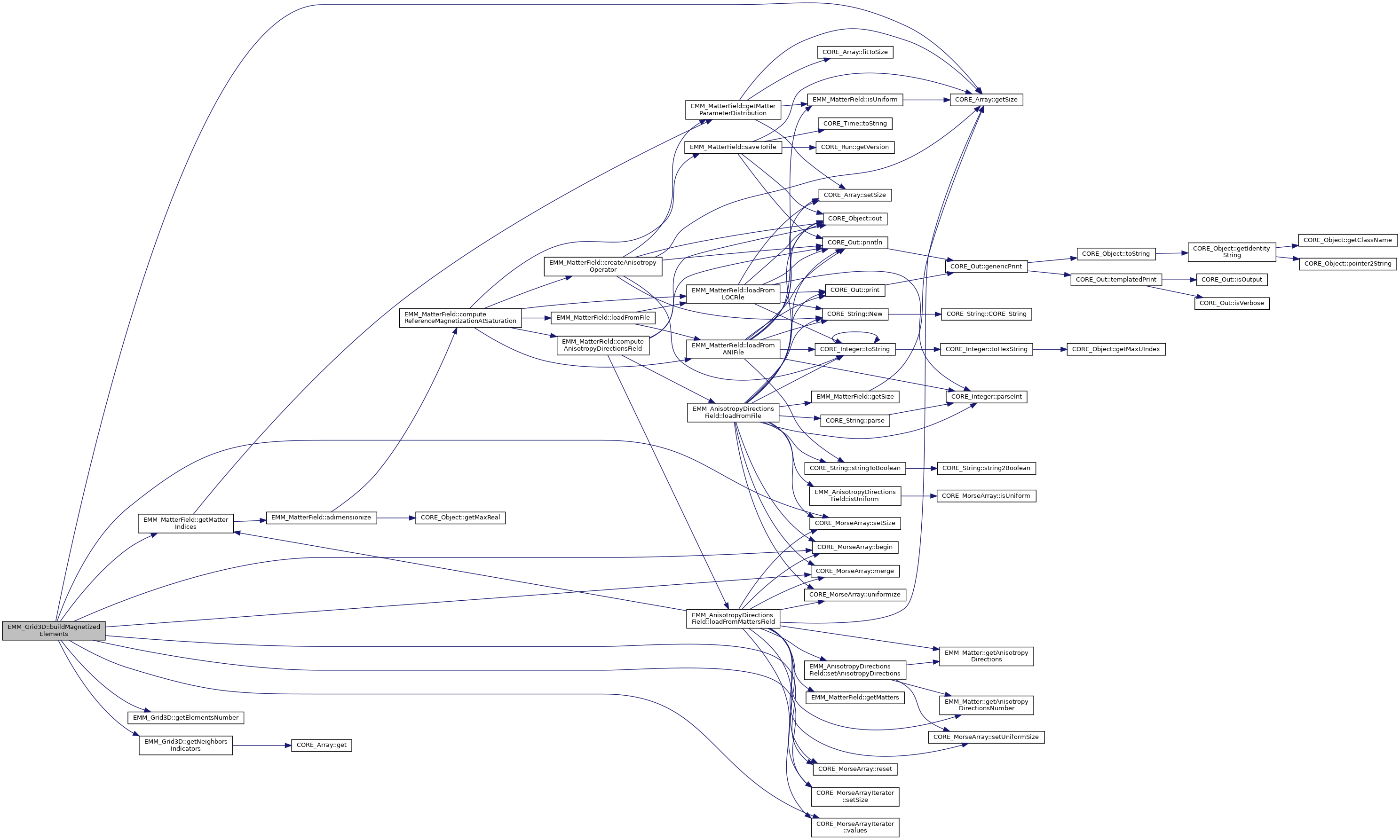

◆ buildMagnetizedNeighborsIndices()
| void EMM_Grid3D::buildMagnetizedNeighborsIndices | ( | const EMM_MatterField & | matters, |
| CORE_UIndexMorseArray & | neighbors | ||
| ) | const |
build the neighbors : for each element i build all the magnetized neighbors of element i
- Parameters
-
matters : matters distribution of the grid neighbors : built magnetized neighbors morse array of size <=FACES_NUMBER_PER_ELEMENT for each magnetized element
References CORE_MorseArray< T >::begin(), FACES_NUMBER_PER_ELEMENT, getElementsNumber(), EMM_MatterField::getMatterIndices(), getNeighborElement(), CORE_Array< T >::getSize(), CORE_MorseArray< T >::merge(), EMM_MatterField::NO_MATTER, OMP_GET_THREAD_ID, OMP_GET_THREADS_NUMBER, OMP_PARALLEL_PRIVATE_SHARED, OMP_PARALLEL_SHARED, CORE_MorseArray< T >::reset(), CORE_MorseArrayIterator< T >::setSize(), CORE_MorseArray< T >::setSize(), tBoolean, tUCInt, tUIndex, tUInteger, UNMAGNETIZED_ELEMENT, and CORE_MorseArrayIterator< T >::values().
Referenced by EMM_MinimalExchangeOperator::discretize(), and getNeighborIndicator().


◆ buildNeighborsIndices()
| void EMM_Grid3D::buildNeighborsIndices | ( | const EMM_MatterField & | matters, |
| CORE_UIndexMorseArray & | neighbors | ||
| ) | const |
build the neighbors index: for each element i build all the (magnetized or not) neighbors of element i
- Parameters
-
matters : matters distribution of the grid neighbors : built neighbors morse array of size FACES_NUMBER_PER_ELEMENT for each magnetized element. neighbors[i][f] gives the index of the element which is next to the element i with face f
Note that the values at index i of the morse array is null if and only if the element at index i is not magnetized.
References CORE_MorseArray< T >::begin(), FACES_NUMBER_PER_ELEMENT, getElementsNumber(), EMM_MatterField::getMatterIndices(), getNeighborElement(), CORE_Array< T >::getSize(), CORE_MorseArray< T >::merge(), EMM_MatterField::NO_MATTER, OMP_GET_THREAD_ID, OMP_GET_THREADS_NUMBER, OMP_PARALLEL_PRIVATE_SHARED, OMP_PARALLEL_SHARED, CORE_MorseArray< T >::reset(), CORE_MorseArrayIterator< T >::setSize(), CORE_MorseArray< T >::setSize(), tBoolean, tUCInt, tUIndex, tUInteger, and CORE_MorseArrayIterator< T >::values().
Referenced by EMM_MinimalExchangeOperator::discretize(), EMM_DisplacementFVMOperator::discretize(), and getNeighborIndicator().
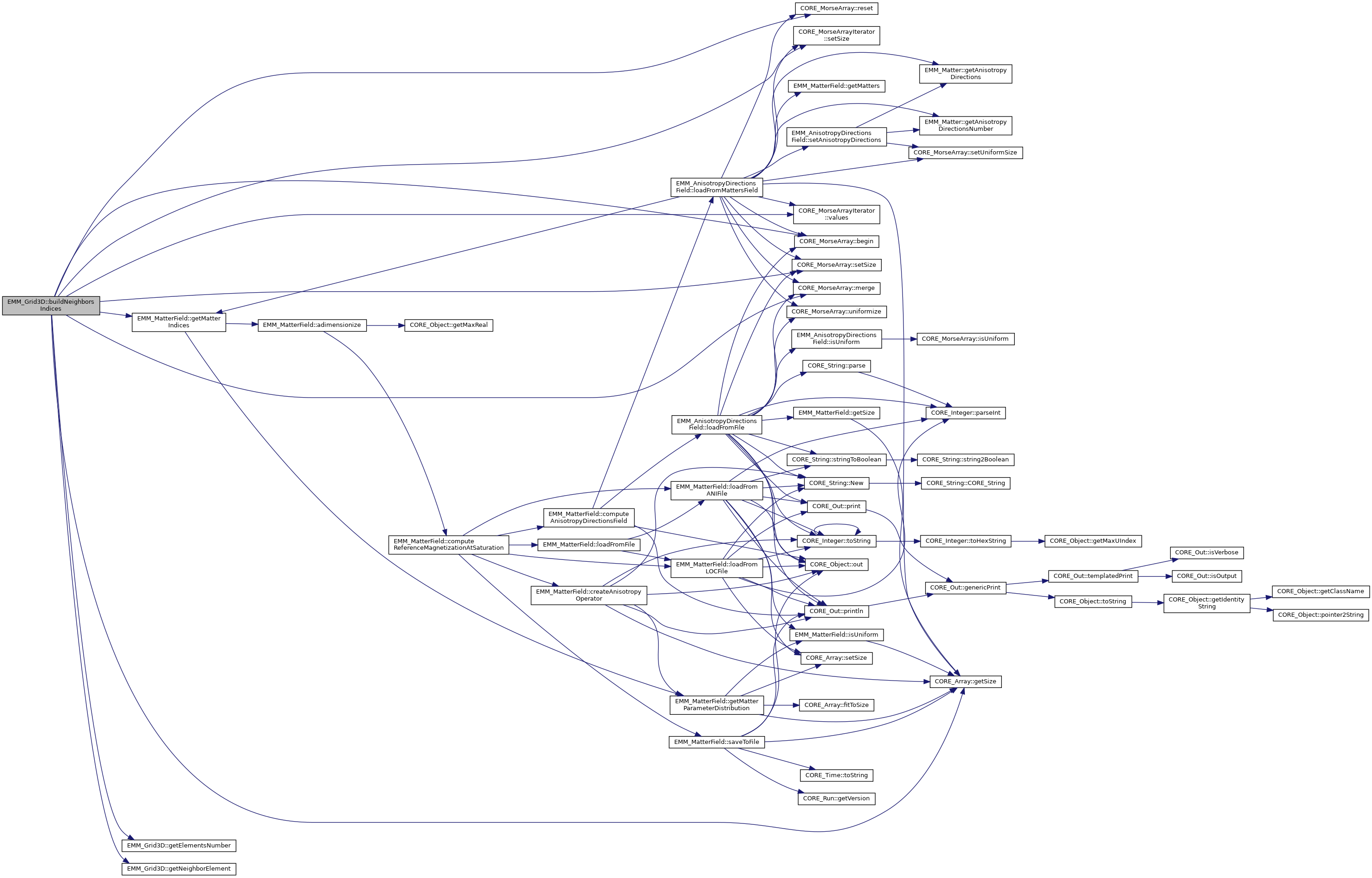

◆ computeEpsilon()
|
inlinestaticinherited |
compute epsilon
- Returns
- the epsilon value eps=10^{-p/3} where p is defined by getEpsilon()=10^{-p}
◆ computeNormalFaceAdimensionizedLength()
| void EMM_Grid3D::computeNormalFaceAdimensionizedLength | ( | tReal * | L2 | ) | const |
build the adimensionized length for each face in its normal direction
- Parameters
-
[out] L2 : is the squared adimensionized dimension in each direction of the element of size 6
It commputes L2[2k+d]=L[k].L[k] for all k in [0,3[ and d in [0,2[
References getAdimensionizedSegmentsSize(), tDimension, and tReal.
Referenced by EMM_MinimalExchangeOperator::discretize(), and getAdimensionizedVolume().


◆ GET_MASTER_PERIODIC_POINT()
|
inlinestatic |
get the index of master point in [0,pointsNumber[. The master point is the point in pair face in the periodical direction k corresponding to the point in face unpair in the periodical direction k.
- Parameters
-
[in] periodicity periodical indicator of the directions [in] Nx number of segments in the direction x [in] Ny number of segments in the direction y [in] Nz number of segments in the direction z [in,out] iQ input : index of the point in the x-direction, return the index of the periodcial point in the x-direction [in,out] jQ input : index of the point in the y-direction, return the index of the periodcial point in the y-direction [in,out] kQ input : index of the point in the z-direction, return the index of the periodcial point in the z-direction
- Returns
- true if the periodical point is not the same
References tBoolean.
Referenced by EMM_DisplacementFEMOperator::buildDataOnNeumannBoundaryFaces(), EMM_DisplacementFVM_Interpolator::cellMean(), EMM_DisplacementFEMOperator::computeElasticStress(), EMM_DisplacementFVM_VOGGROperator::computeGradUAtCellByOstrogradskiGreenIntegration(), EMM_DisplacementFVM_SSGROperator::computeGradUAtFaceByStokesIntegration(), EMM_DisplacementFVM_Interpolator::edgeMean(), EMM_DisplacementFVM_Interpolator::faceMean(), EMM_DisplacementFVM_Interpolator::interpolateUAtFace(), EMM_DisplacementFVM_Interpolator::interpolateUAtVertex(), isFaceOnDirichletBoundary(), isFaceOnNeumannBoundary(), EMM_DisplacementOperator::periodicProjection(), EMM_CanonicalMassMatrix::product(), and EMM_BlockMassMatrix::product().
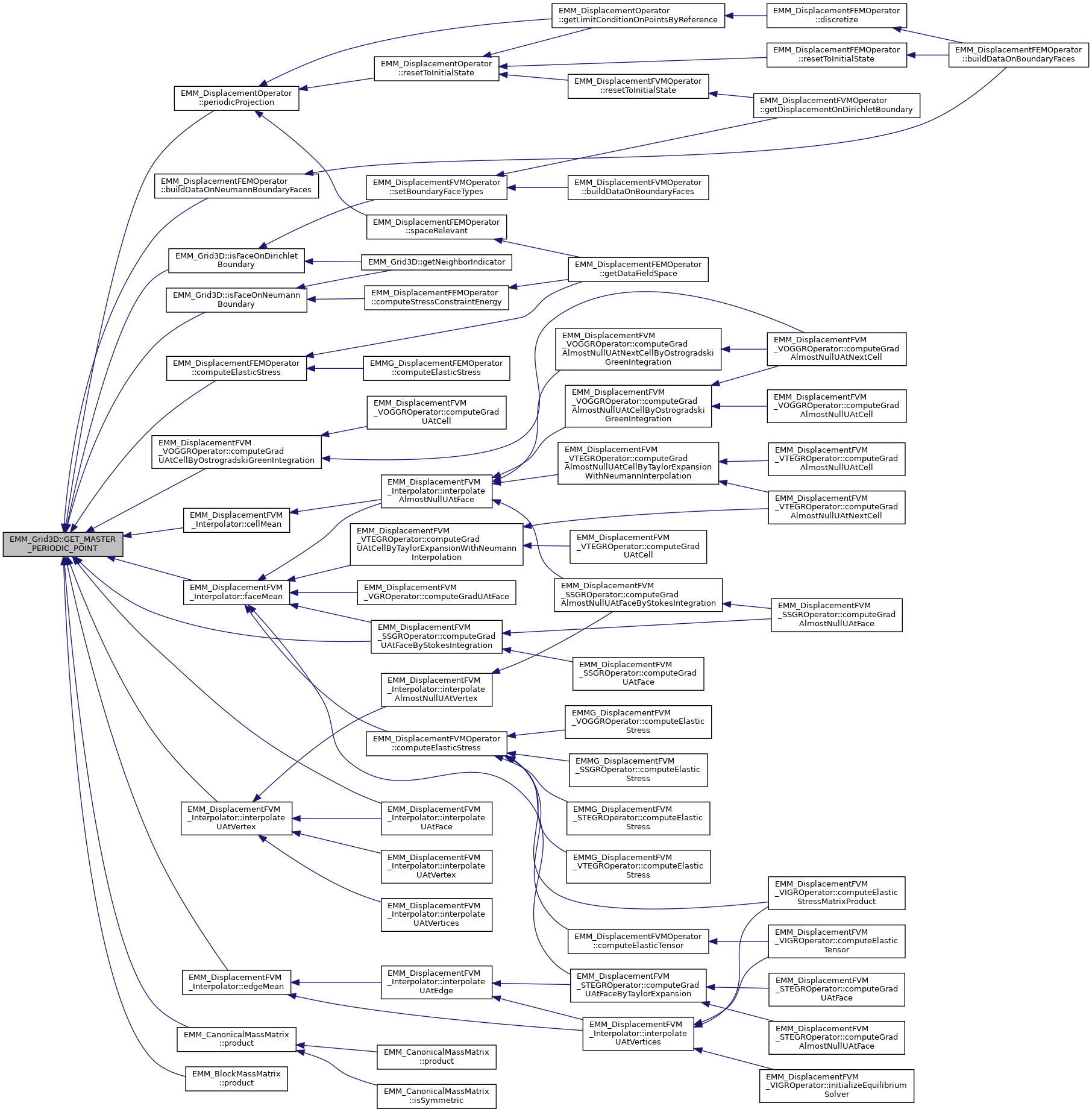
◆ getAdimensionizedSegmentsSize()
|
inline |
return the adimensionized segments size
- Returns
- the adimensionized size of segments in each direction
References mAdimensionizedSegmentsSize.
Referenced by computeNormalFaceAdimensionizedLength(), EMM_DisplacementOperator::discretize(), and EMM_Output::saveVTI().

◆ getAdimensionizedVolume()
|
inline |
get the adimensionized element volume <=1
- Returns
- the adimensionized volume
References computeNormalFaceAdimensionizedLength(), mAdimensionizedVolume, and tReal.
Referenced by EMM_GradGaussLegendreRelaxation::computeEnergyTimeDerivatives(), EMM_GradGaussLegendreRelaxation::computeEnergyTimeDerivativesAtTime(), EMM_Operator::discretize(), EMM_MassMatrix::discretize(), EMM_LandauLifschitzODE_RKd::integrateMagnetizationFieldAtTime(), and EMM_LandauLifschitzODE_RK::integrateMagnetizationFieldAtTime().


◆ getClassName() [1/2]
|
inherited |
return the class name of the object
- Returns
- the class name of the object
References tString.
Referenced by CORE_Object::getIdentityString(), EMM_Operator::getName(), and CORE_Object::isMemoryChecked().

◆ getClassName() [2/2]
return the class name of the object
- Parameters
-
identityString the identity string of the object
- Returns
- the class name
◆ getDoubleEpsilon()
|
inlinestaticinherited |
get the epsilon value for tDouble type
- Returns
- the epsilon value for tDouble type
Referenced by CORE_Test::testType().
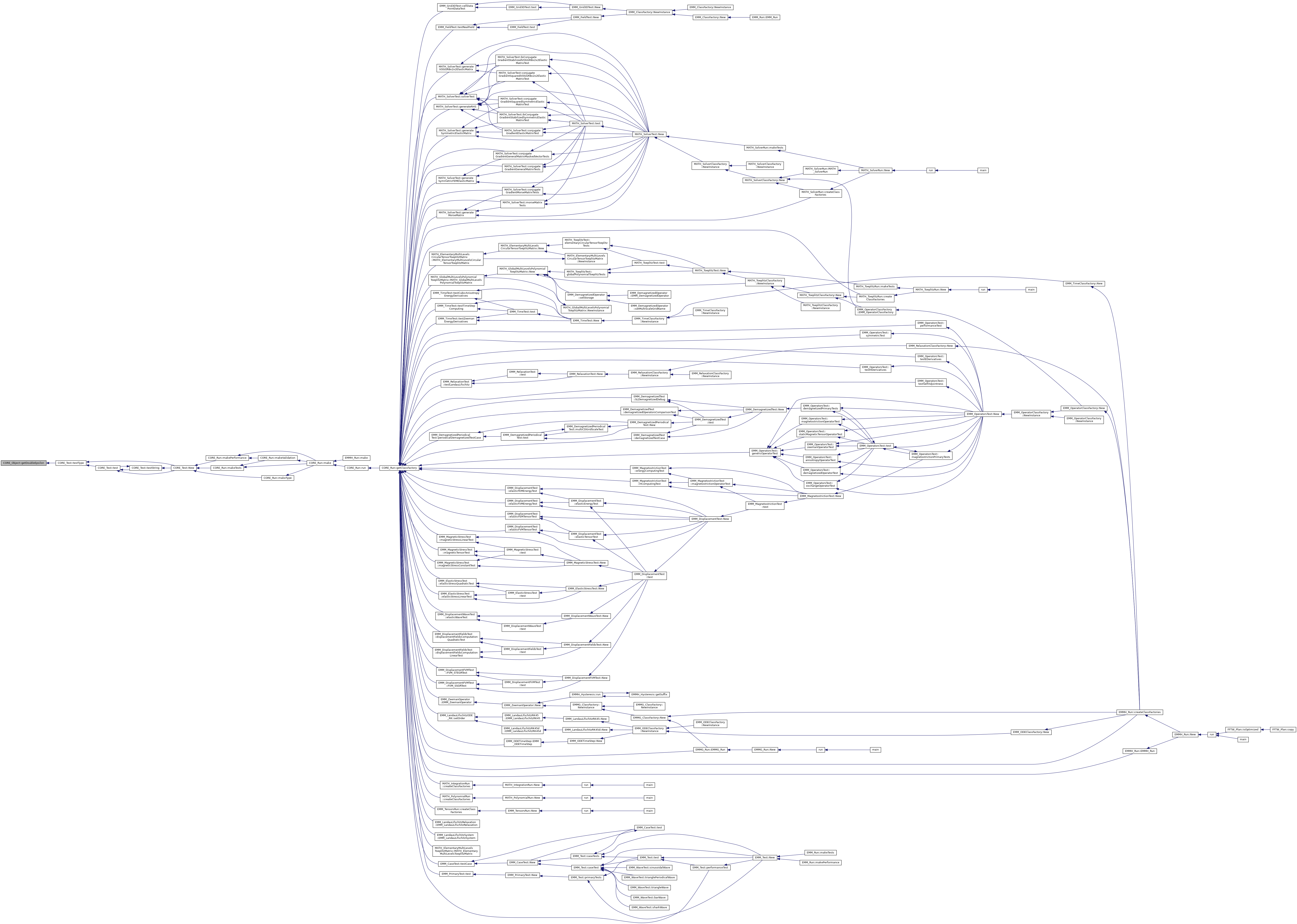
◆ getDoubleInfinity()
|
inlinestaticinherited |
get the infinity value for tFloat type
- Returns
- the intinity value for tFloat type
◆ getElementIndex()
|
inline |
return the element index of the element located at (i,j,k) coordinates on segments number
- Parameters
-
[in] i index of the segment in x-direction in [0,getSegementsNumber[0][ [in] j index of the segment in y-direction in [0,getSegementsNumber[1][ [in] k index of the segment in z-direction in [0,getSegementsNumber[2][
- Returns
- the element index of the element located at (i,j,k) coordinates on segment number :

◆ getElementSegmentIndex()
return the element coordinates on segment number on d direction
- Parameters
-
index index of the element in [0,getElementsNumber()[ d direction in [0,3[
- Returns
- the element coordinates on segment number on d direction
◆ getElementSegmentIndices()
|
inline |
return the element coordinates on segments number
- Parameters
-
[in] index index of the element [out] i output index of the segment in x-direction in [0,getSegementsNumber[0][ [out] j output index of the segment in y-direction in [0,getSegementsNumber[1][ [out] k output index of the segment in z-direction in [0,getSegementsNumber[2][ 
◆ getElementsNumber()
|
inline |
get the elements number of the grid
- Returns
- the number of element of the grid
Referenced by buildMagnetizedElements(), buildMagnetizedNeighborsIndices(), buildNeighborsIndices(), EMMG_RealField::cellDataToPointData(), EMM_StaticMagneticTensorOperator::discretize(), EMM_LinearAnisotropyOperator::discretize(), EMM_StaticMagnetostrictionOperator::discretize(), EMM_AnisotropyOperator::discretize(), EMM_DisplacementFVMOperator::discretize(), EMMG_SLDemagnetizedOperator::discretize(), EMM_ZeemanOperator::discretize(), EMM_LandauLifschitzSystem::discretize(), EMM_DisplacementOperator::discretize(), EMMG_RealField::pointDataToCellData(), EMM_ZeemanOperator::resetToInitialState(), EMM_LandauLifschitzSystem::resetToInitialState(), EMM_DisplacementOperator::resetToInitialState(), EMM_DisplacementFVMOperator::setBoundaryFaceTypes(), EMMG_RealField::unmagnetized(), and updateMagnetizedElementsNumber().

◆ getEpsilon()
|
inlinestaticinherited |
get the epsilon value for T type
- Returns
- the epsilon value for T type
◆ getFloatEpsilon()
|
inlinestaticinherited |
get the epsilon value for tFloat type
- Returns
- the epsilon value for tFloat type
Referenced by CORE_Test::testType().
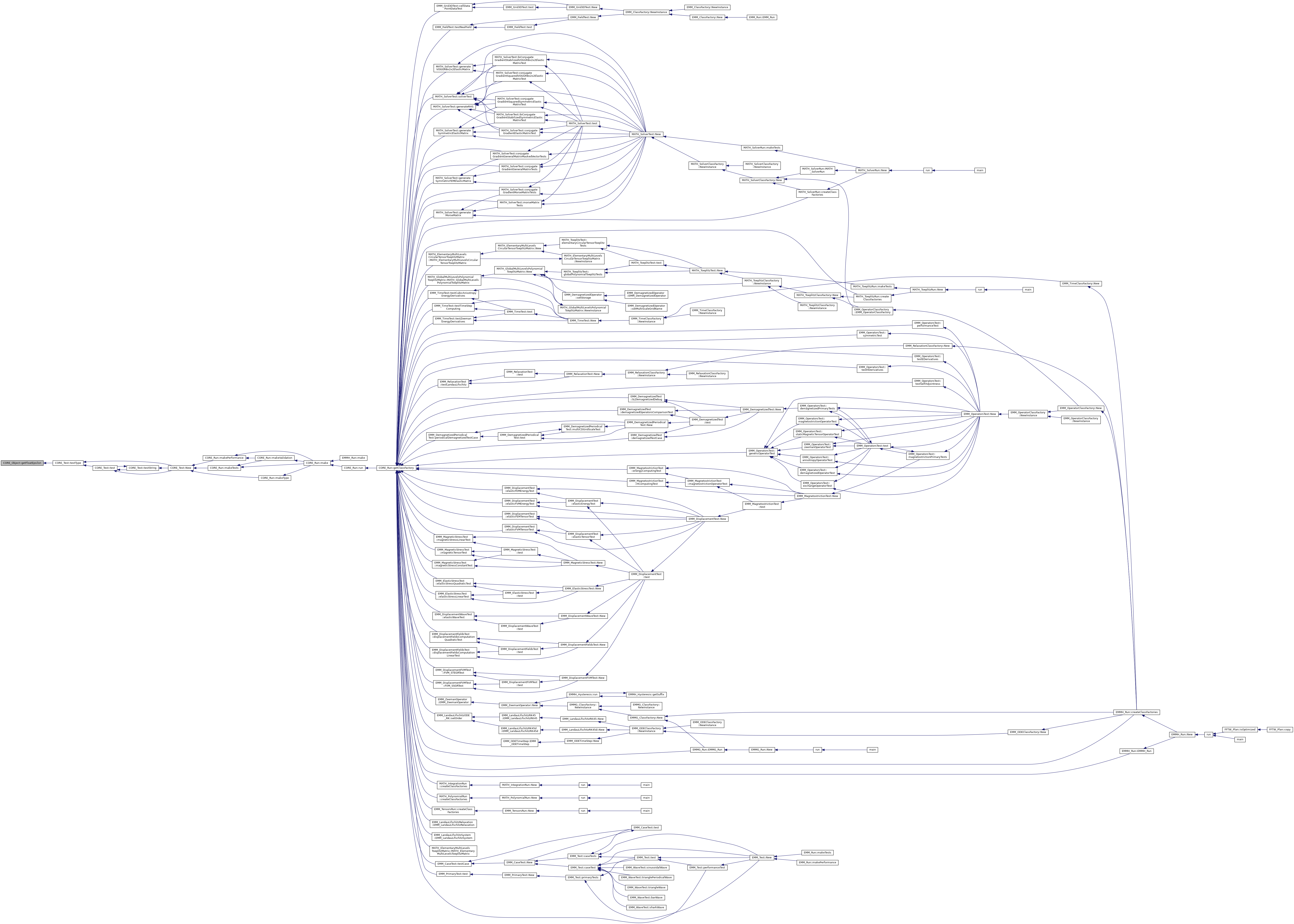
◆ getFloatInfinity()
|
inlinestaticinherited |
get the infinity value for tFloat type
- Returns
- the intinity value for tFloat type
◆ getIdentityString()
|
inlineinherited |
return the identity string of the object of the form className_at_address
- Returns
- the identity string of the object
References CORE_Object::getClassName(), CORE_Object::pointer2String(), and tString.
Referenced by MATH_GaussLegendreIntegration::copy(), EMM_MultiScaleGrid::initialize(), CORE_Object::isInstanceOf(), CORE_Object::printObjectsInMemory(), MATH_Matrix::toString(), EMMG_SLPeriodicMultiScale::toString(), EMM_Stepper::toString(), EMM_AnisotropyDirectionsField::toString(), EMM_BlockMassMatrix::toString(), CORE_Object::toString(), EMM_Tensors::toString(), EMM_MultiScaleGrid::toString(), EMM_MatterField::toString(), toString(), and EMM_LandauLifschitzSystem::toString().

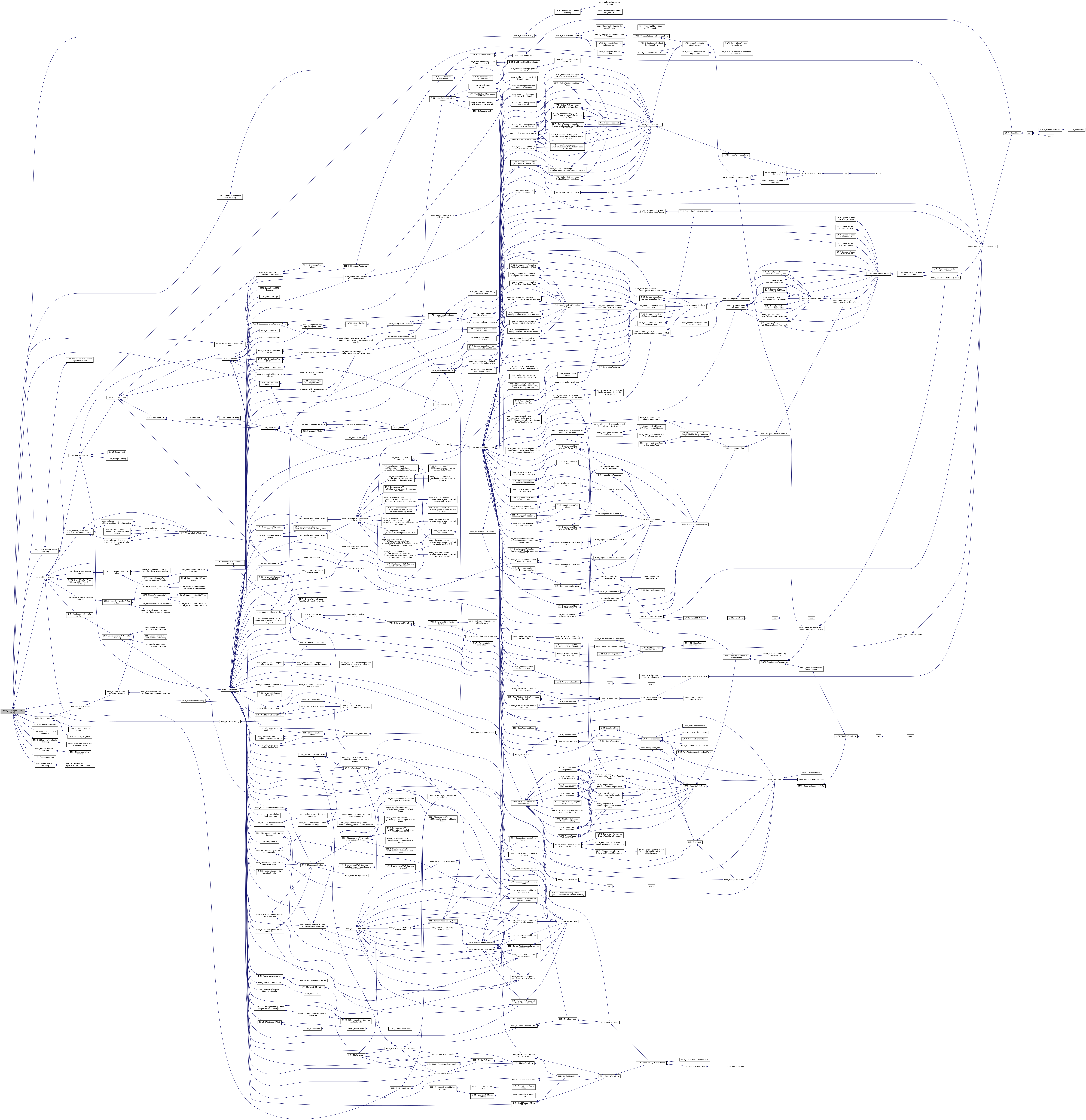
◆ getInfinity()
|
inlinestaticinherited |
get the infinity for T type
- Returns
- the infinity value for T type
◆ getLDoubleEpsilon()
|
inlinestaticinherited |
get the epsilon value for tLDouble type
- Returns
- the epsilon value for tLDouble type
Referenced by CORE_Test::testType().

◆ getLDoubleInfinity()
|
inlinestaticinherited |
get the infinity value for tDouble type
- Returns
- the infinity value for tDouble type
◆ getMagnetizedElementsNumber()
|
inline |
get the number of magnetized elements
- Returns
- the number of magnetized cells less or equal to the number of elements
References mMagnetizedElementsNumber.
Referenced by EMM_LandauLifschitzSystem::computeMeanField(), and EMM_LandauLifschitzSystem::computeMeanMagnetizationField().

◆ getMaxChar()
|
inlinestaticinherited |
get the max value for tChar type
- Returns
- the max value for tChar type
Referenced by CORE_Test::testType().

◆ getMaxDouble()
|
inlinestaticinherited |
get the max value for tDouble type
- Returns
- the max value for tDouble type
Referenced by CORE_Test::testType().
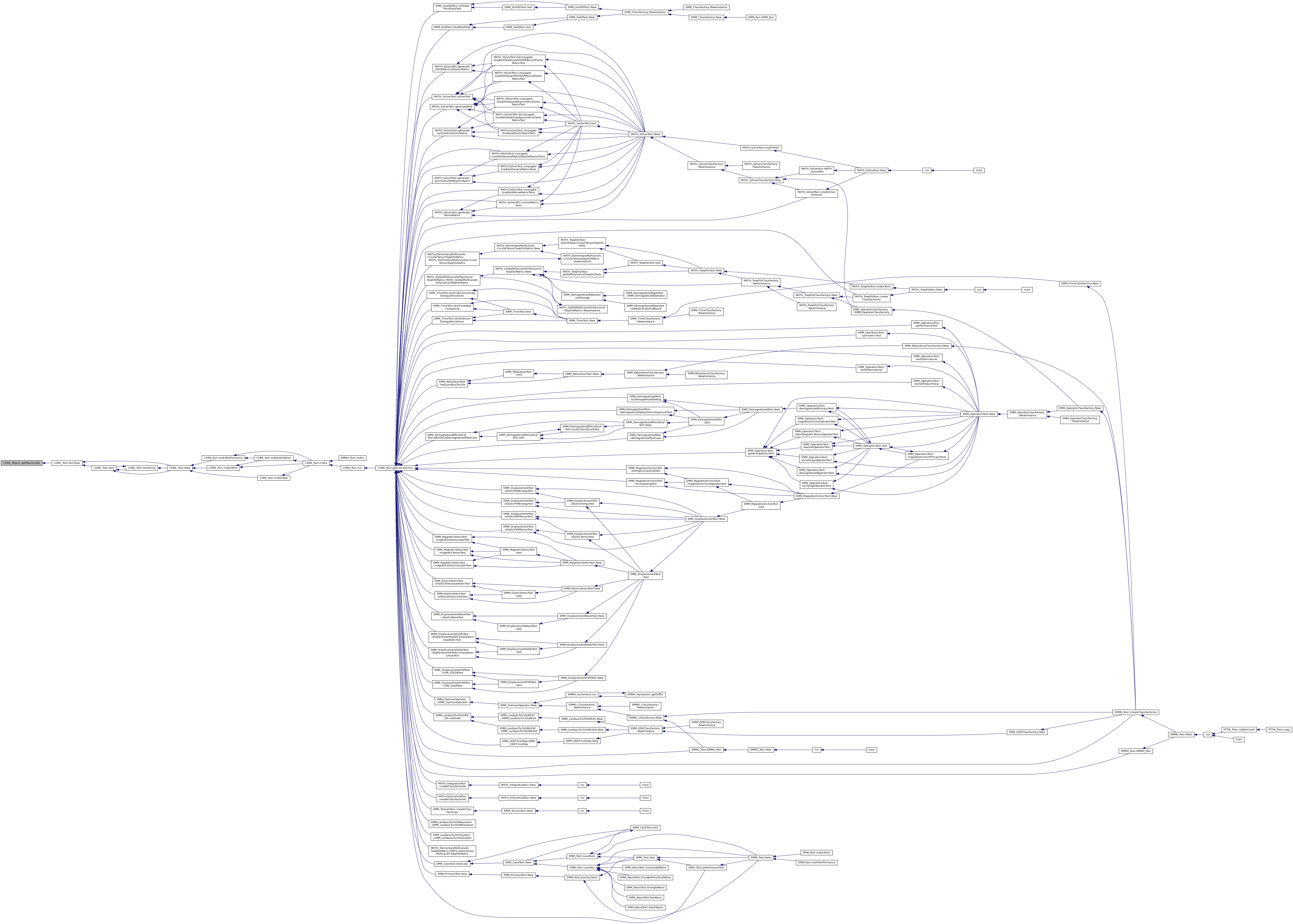
◆ getMaxElementSize()
|
inline |
get the max length of the cell
References mLmax.
◆ getMaxFlag()
|
inlinestaticinherited |
get the max value for the tFlag type
- Returns
- the max value for the tFlag type
Referenced by CORE_Test::testType().

◆ getMaxFloat()
|
inlinestaticinherited |
get the max value for tFloat type
- Returns
- the max value for tFloat type
Referenced by CORE_Test::testType().
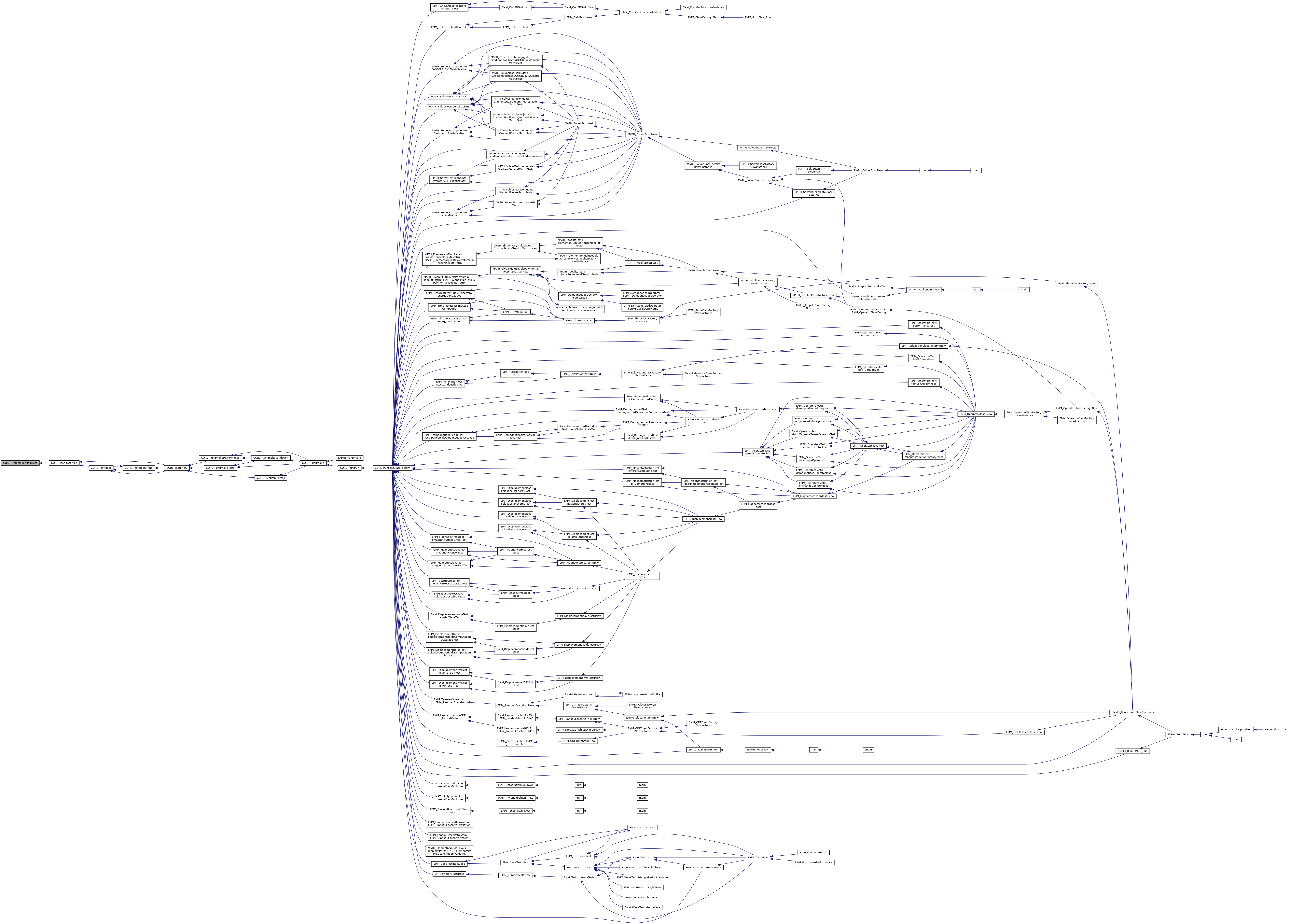
◆ getMaxIndex()
|
inlinestaticinherited |
get the max value for the array/vector indexing type
- Returns
- the max value for the array/vector indexing type
Referenced by CORE_Test::testType().
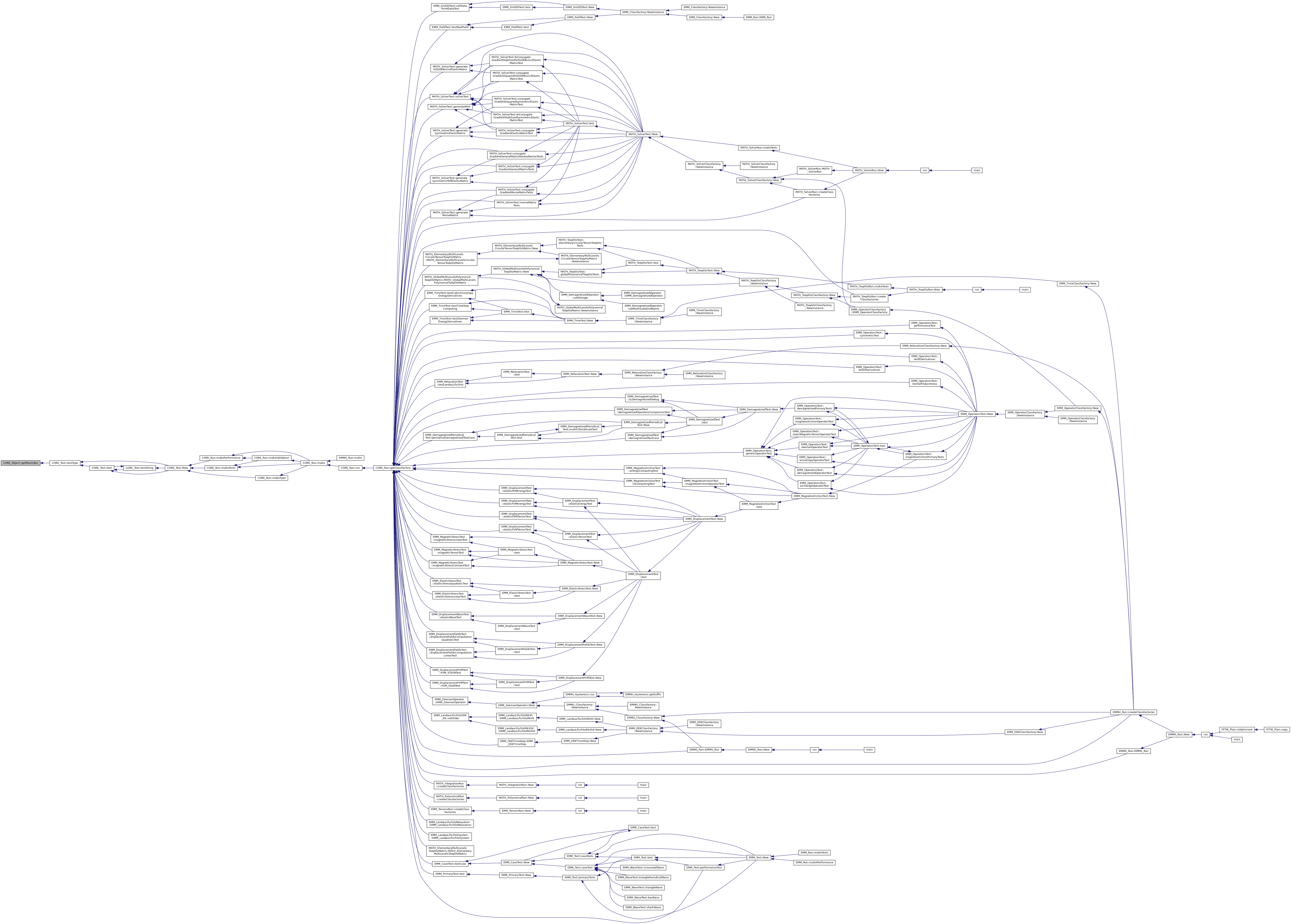
◆ getMaxInt()
|
inlinestaticinherited |
get the max value for tInt type
- Returns
- the max value for tInt type
Referenced by MATSGN_FFT::fastFourierTransform3D_FFTW(), and CORE_Test::testType().

◆ getMaxInteger()
|
inlinestaticinherited |
get the max value for the integer type
- Returns
- the max value for the integer type
Referenced by CORE_Test::testType().
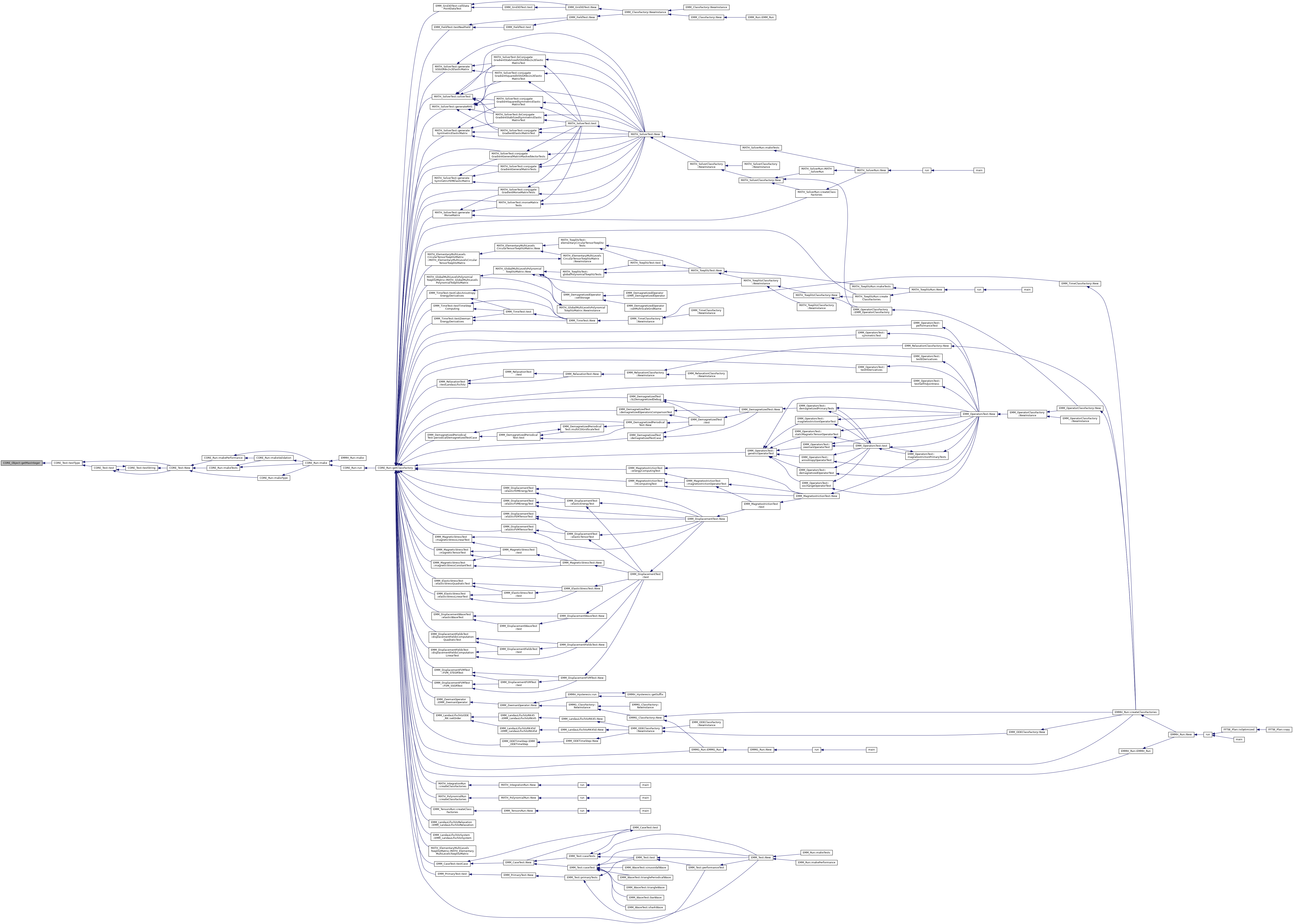
◆ getMaxLDouble()
|
inlinestaticinherited |
get the max value for tLDouble type
- Returns
- the max value for tLDouble type
Referenced by CORE_Test::testType().
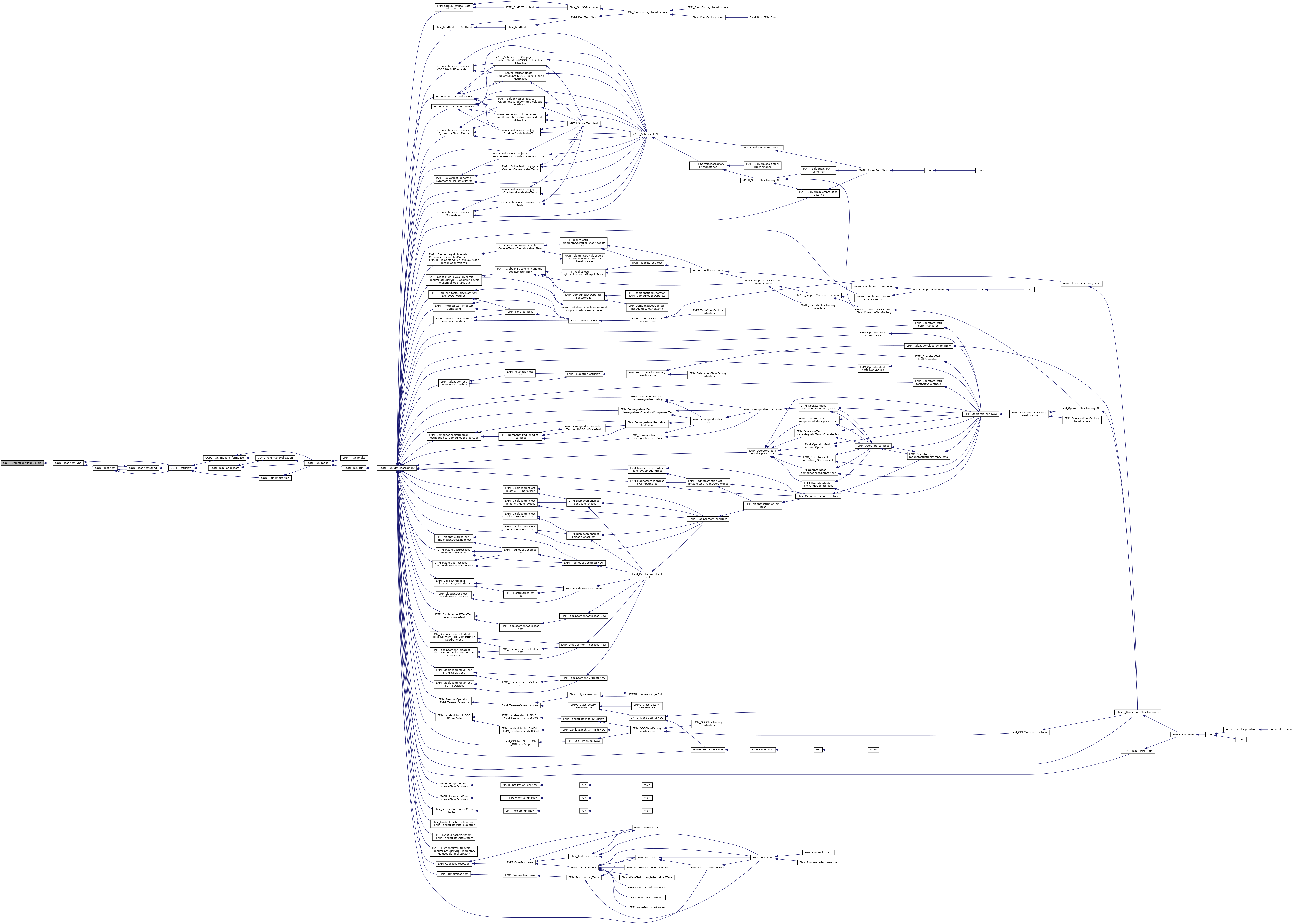
◆ getMaxLInt()
|
inlinestaticinherited |
get the max value for tLInt type
- Returns
- the max value for tLInt type
Referenced by CORE_Test::testType().

◆ getMaxLLInt()
|
inlinestaticinherited |
get the max value for tULInt type
- Returns
- the max value for tULInt type
Referenced by CORE_Test::testType().
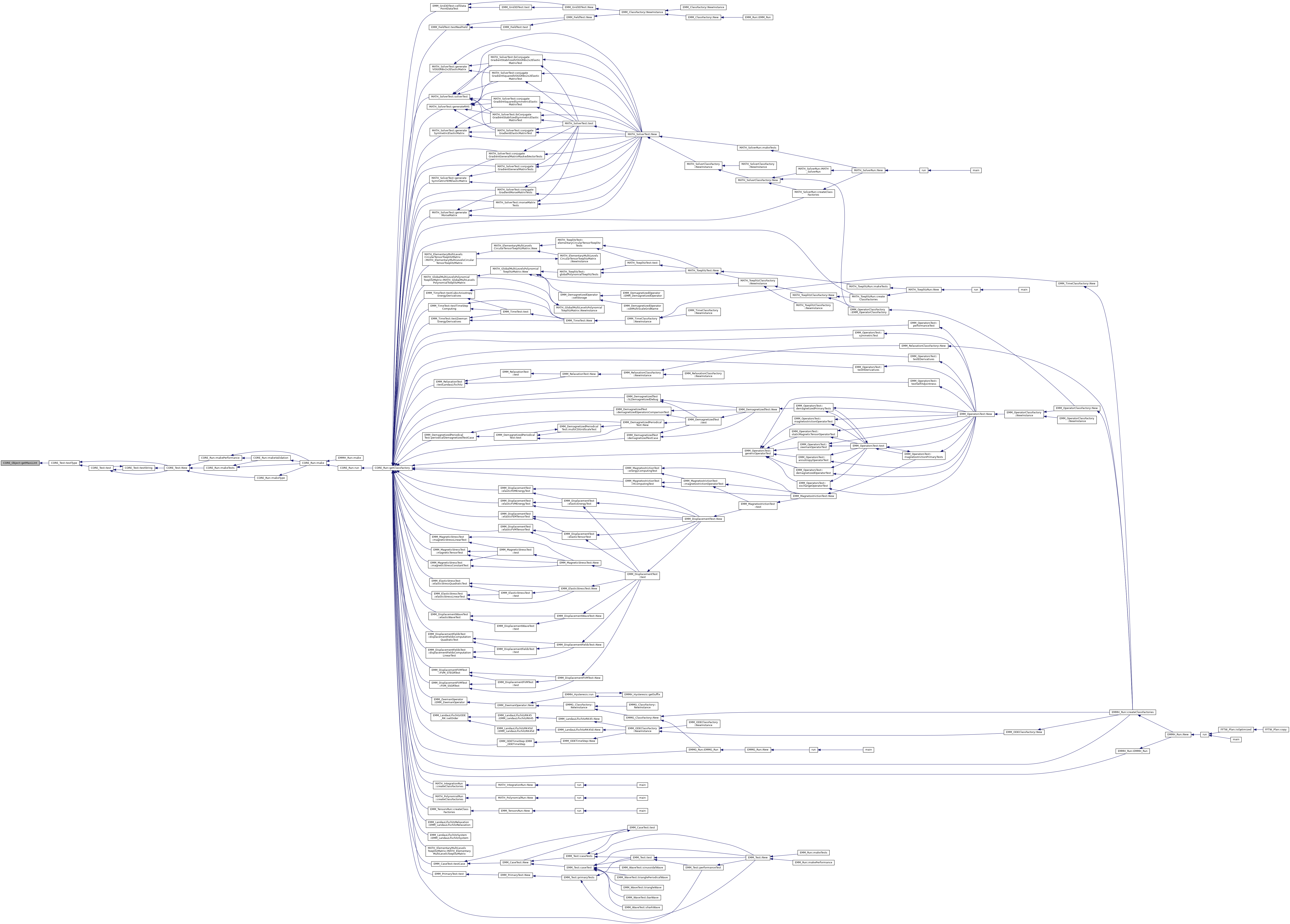
◆ getMaxReal()
|
inlinestaticinherited |
get the max value for the real type
- Returns
- he max value for the real type
Referenced by EMM_MatterField::adimensionize(), and CORE_Test::testType().

◆ getMaxSInt()
|
inlinestaticinherited |
get the max value for tSInt type
- Returns
- the max value for tSInt type
Referenced by CORE_Test::testType().
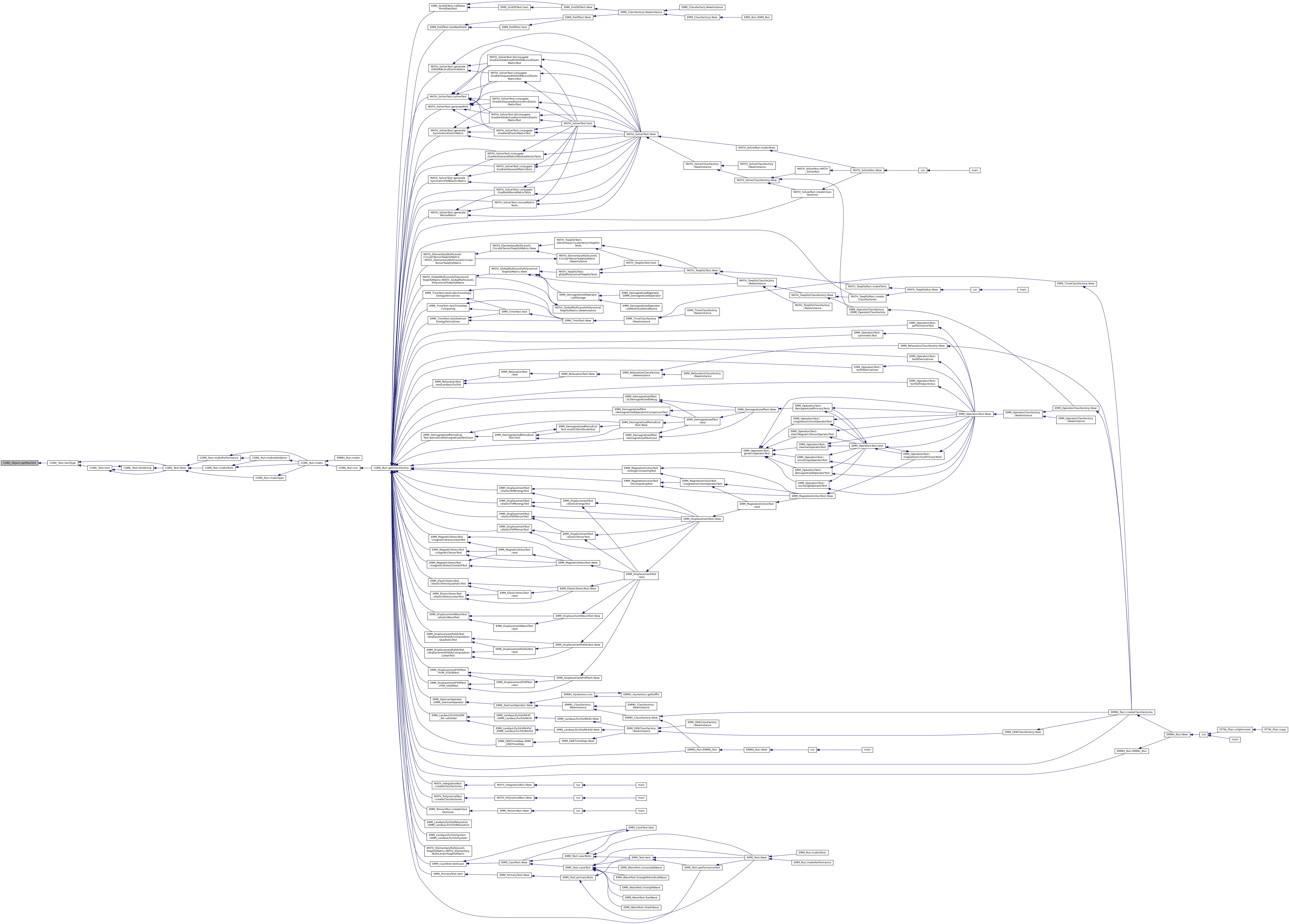
◆ getMaxStepSize()
|
inline |
◆ getMaxUChar()
|
inlinestaticinherited |
get the max value for tUChar type
- Returns
- the max value for tUChar type
Referenced by CORE_Test::testType().
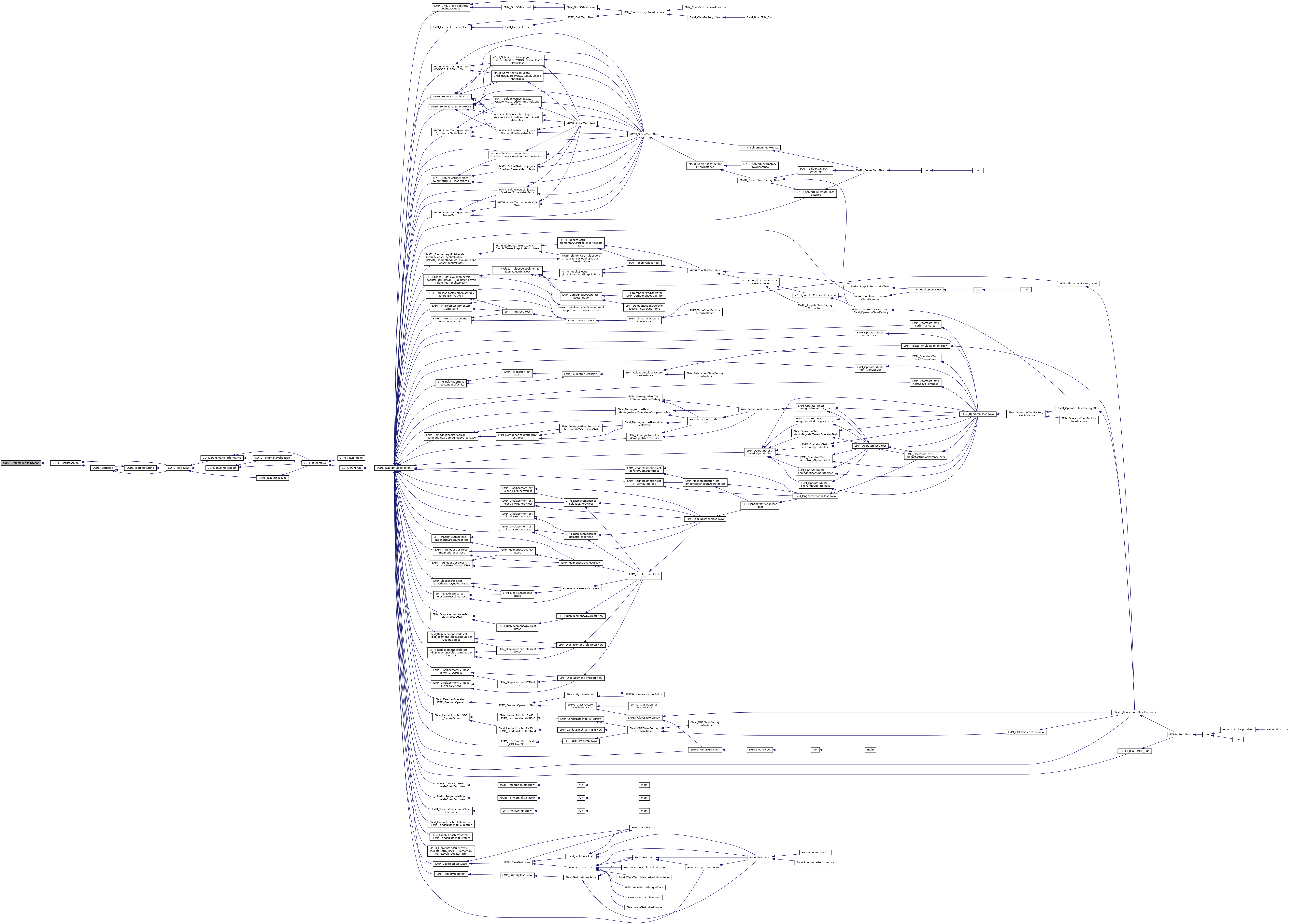
◆ getMaxUIndex()
|
inlinestaticinherited |
get the max value for difference the array/vector indexing type
- Returns
- the max value for difference the array/vector indexing type
Referenced by CORE_Vector< T >::addAfterIndices(), CORE_Vector< T >::search(), CORE_Test::testType(), CORE_Integer::toHexString(), and CORE_Integer::toString().
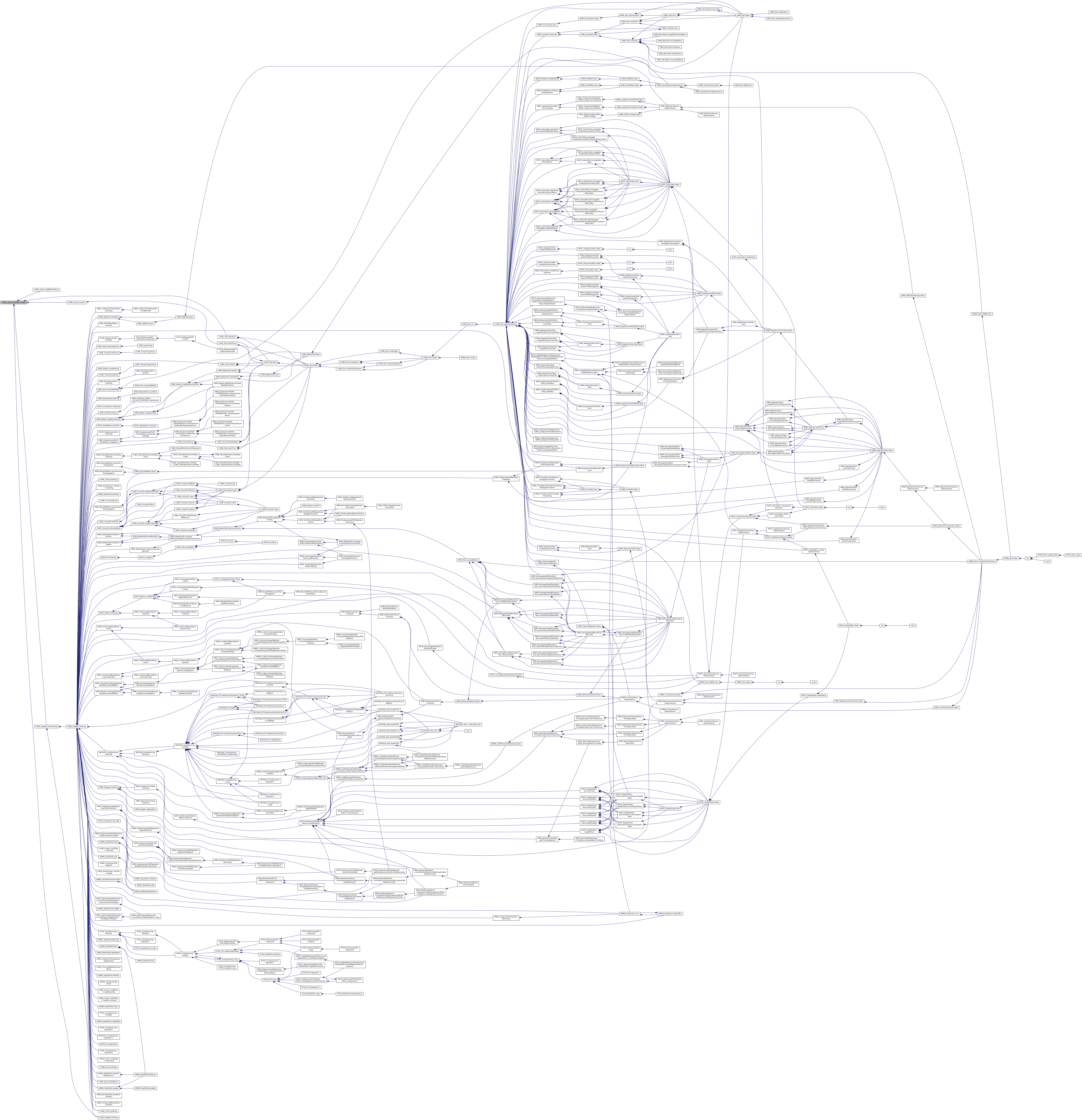
◆ getMaxUInt()
|
inlinestaticinherited |
get the max value for tUInt type
- Returns
- the max value for tUInt type
Referenced by EMM_Array< tCellFlag >::loadFromFile(), EMM_RealField::loadFromFile(), and CORE_Test::testType().

◆ getMaxUInteger()
|
inlinestaticinherited |
get the max value for the unsigned integer type
- Returns
- the max value for the unsigned integer type
Referenced by MATH_Pn::computeExtrenums(), EMM_MultiScaleGrid::computeLevelsNumber(), EMM_Input::restoreBackup(), MATH_P0::solve(), and CORE_Test::testType().

◆ getMaxULInt()
|
inlinestaticinherited |
get the max value for tULInt type
- Returns
- the max value for tULInt type
Referenced by CORE_Test::testType().
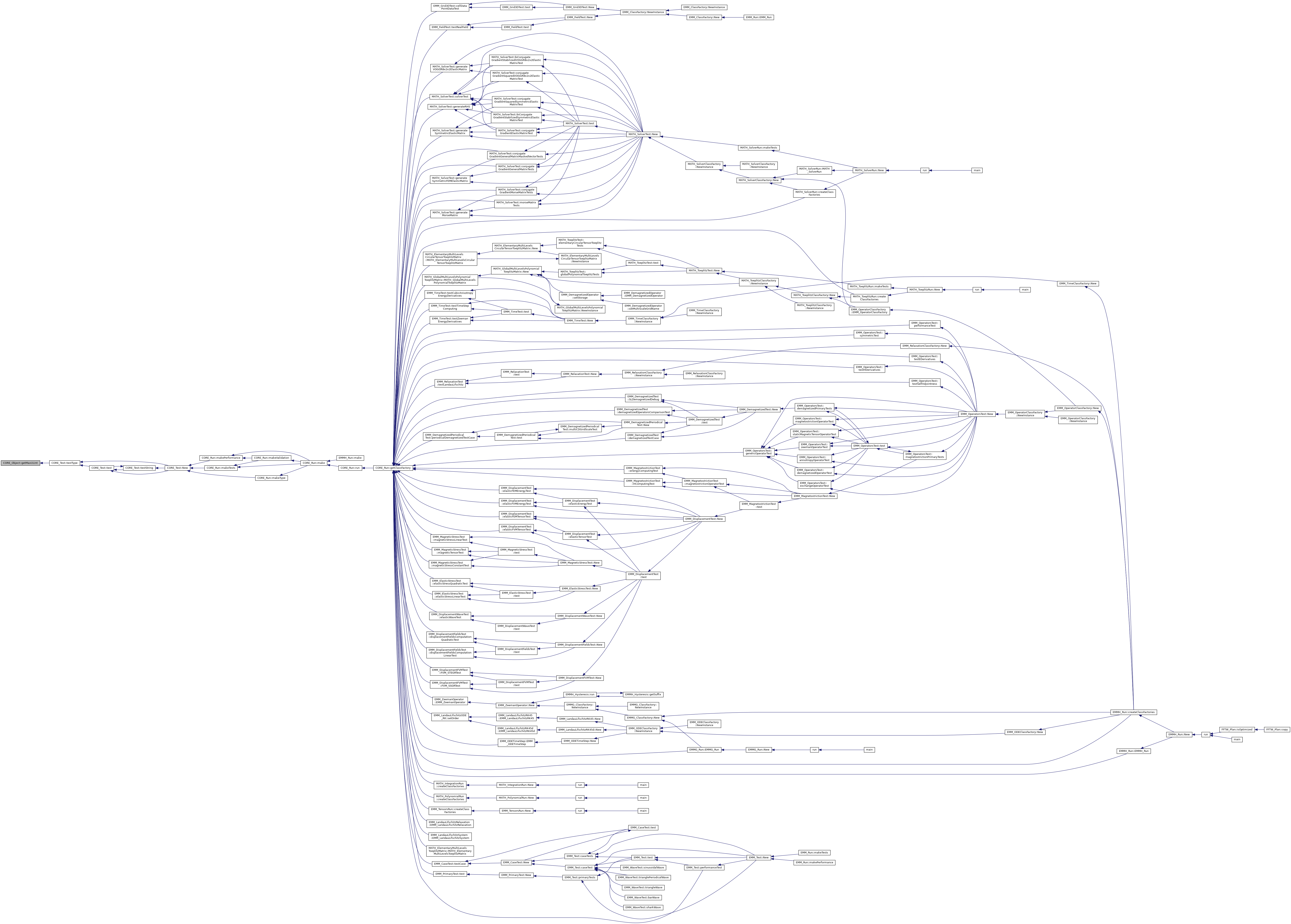
◆ getMaxULLInt()
|
inlinestaticinherited |
get the max value for tULLInt type
- Returns
- the max value for tULLInt type
Referenced by CORE_Test::testType().
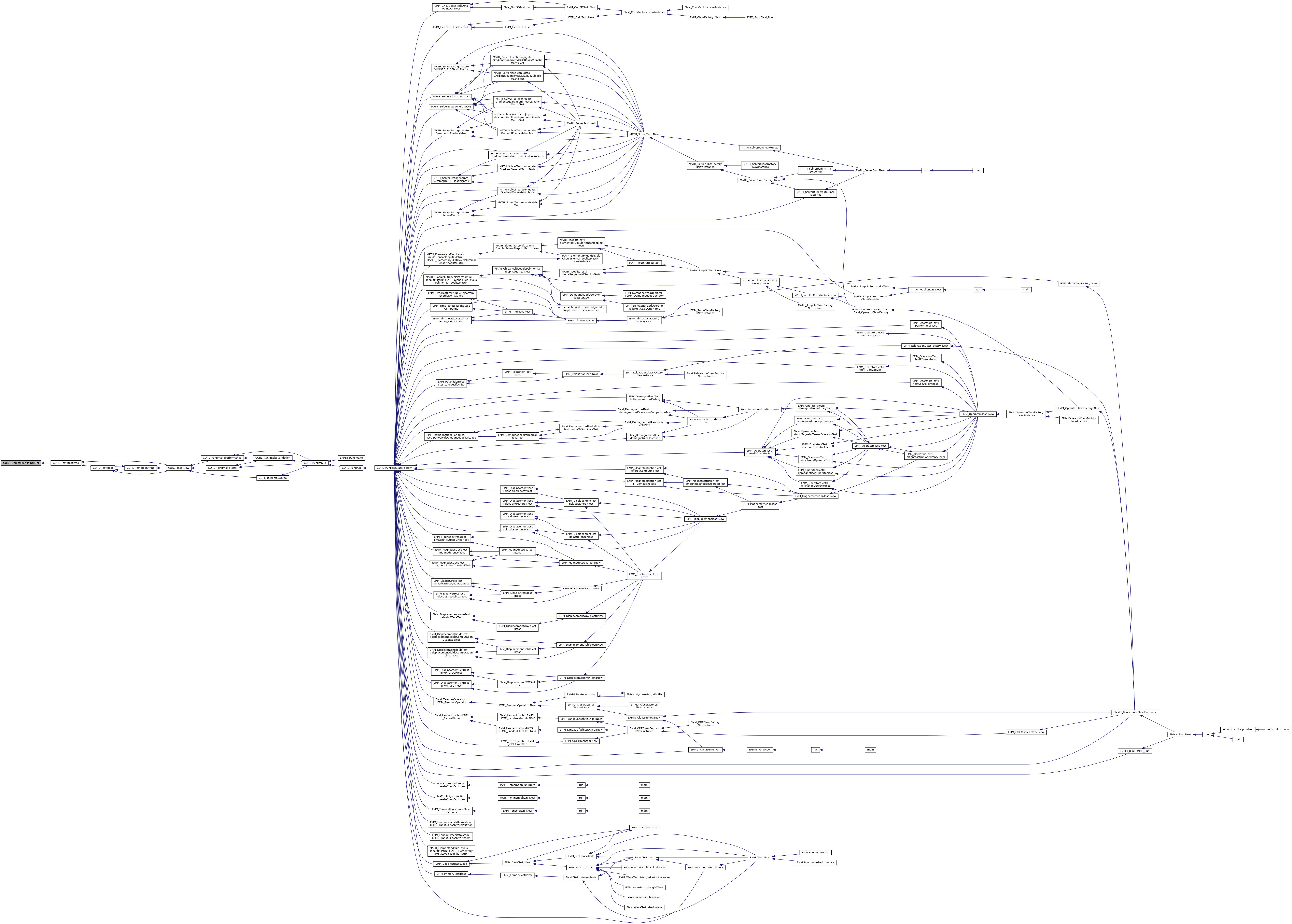
◆ getMaxUSInt()
|
inlinestaticinherited |
get the max value for tUSInt type
- Returns
- the max value for tUSInt type
Referenced by CORE_Test::testType().

◆ getMinChar()
|
inlinestaticinherited |
get the min value for tChar type
- Returns
- the min value for tChar type
Referenced by CORE_Test::testType().
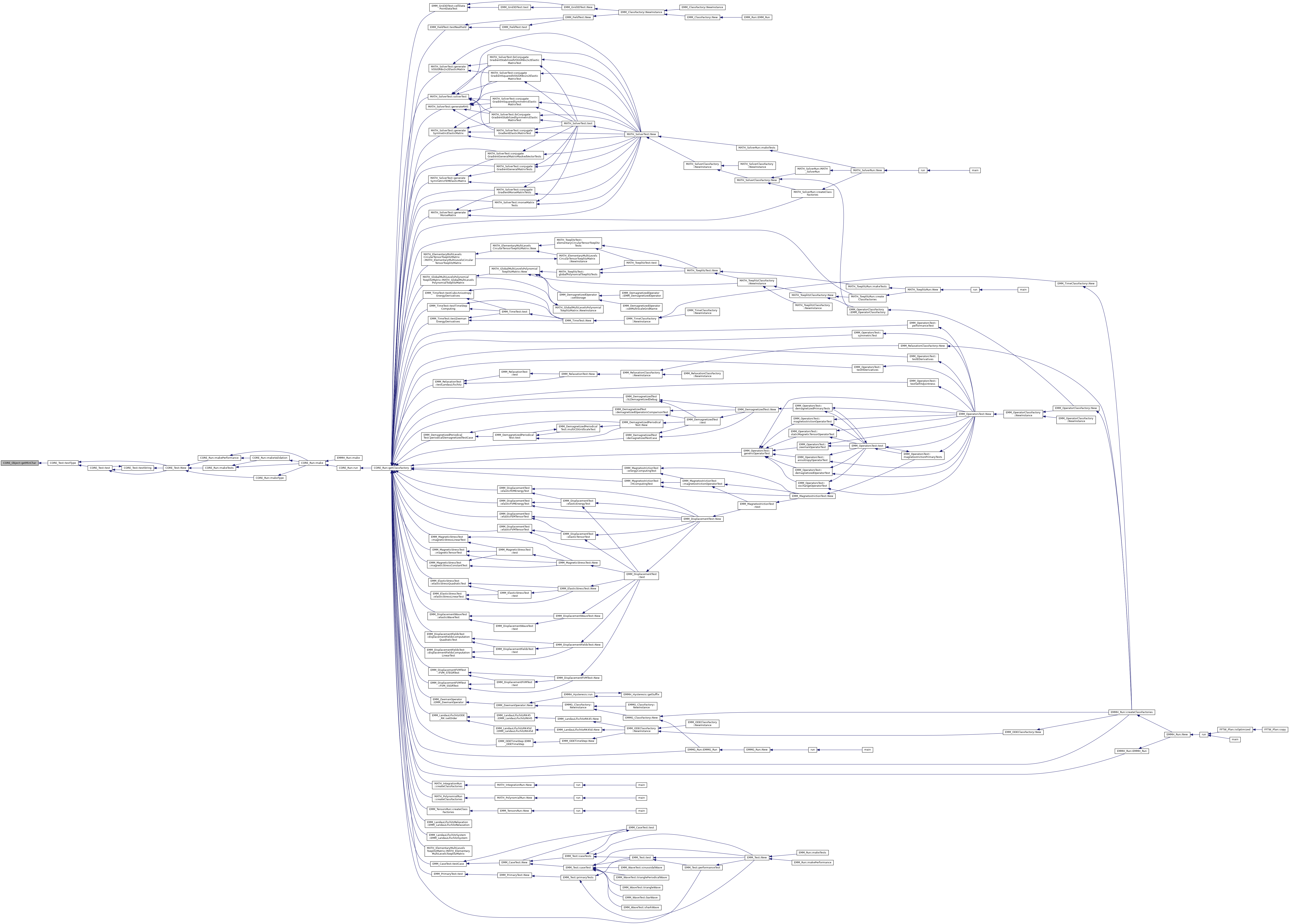
◆ getMinDouble()
|
inlinestaticinherited |
get the min value for tDouble type
- Returns
- the min value for tDouble type
Referenced by CORE_Test::testType().

◆ getMinElementSize()
|
inline |
get the min length of the cell
References mLmin.
◆ getMinFlag()
|
inlinestaticinherited |
get the min value for the tFlag type
- Returns
- the min value for the tFlag type
Referenced by CORE_Test::testType().
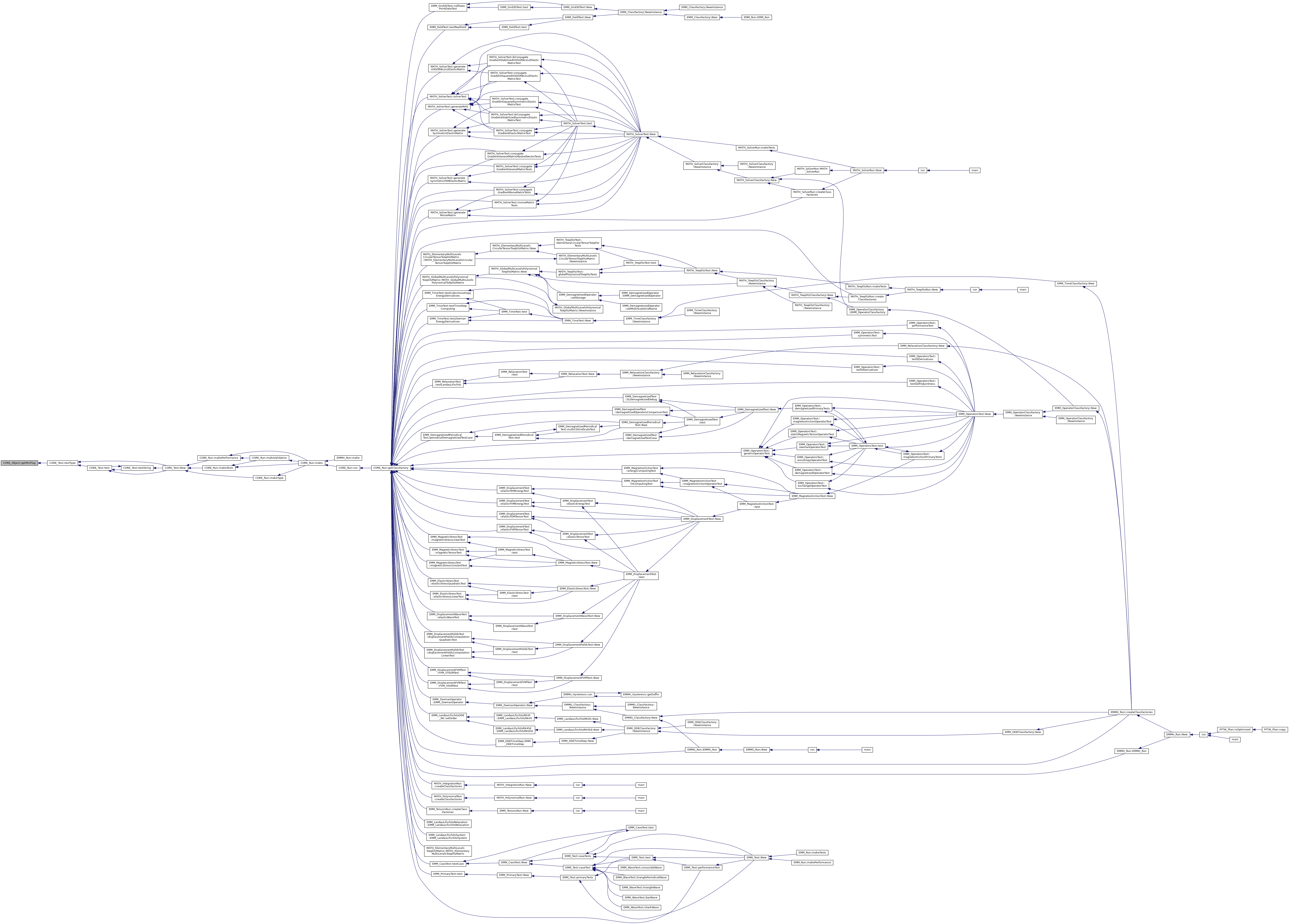
◆ getMinFloat()
|
inlinestaticinherited |
get the min value for tFloat type
- Returns
- the min value for tFloat type
Referenced by CORE_Test::testType().
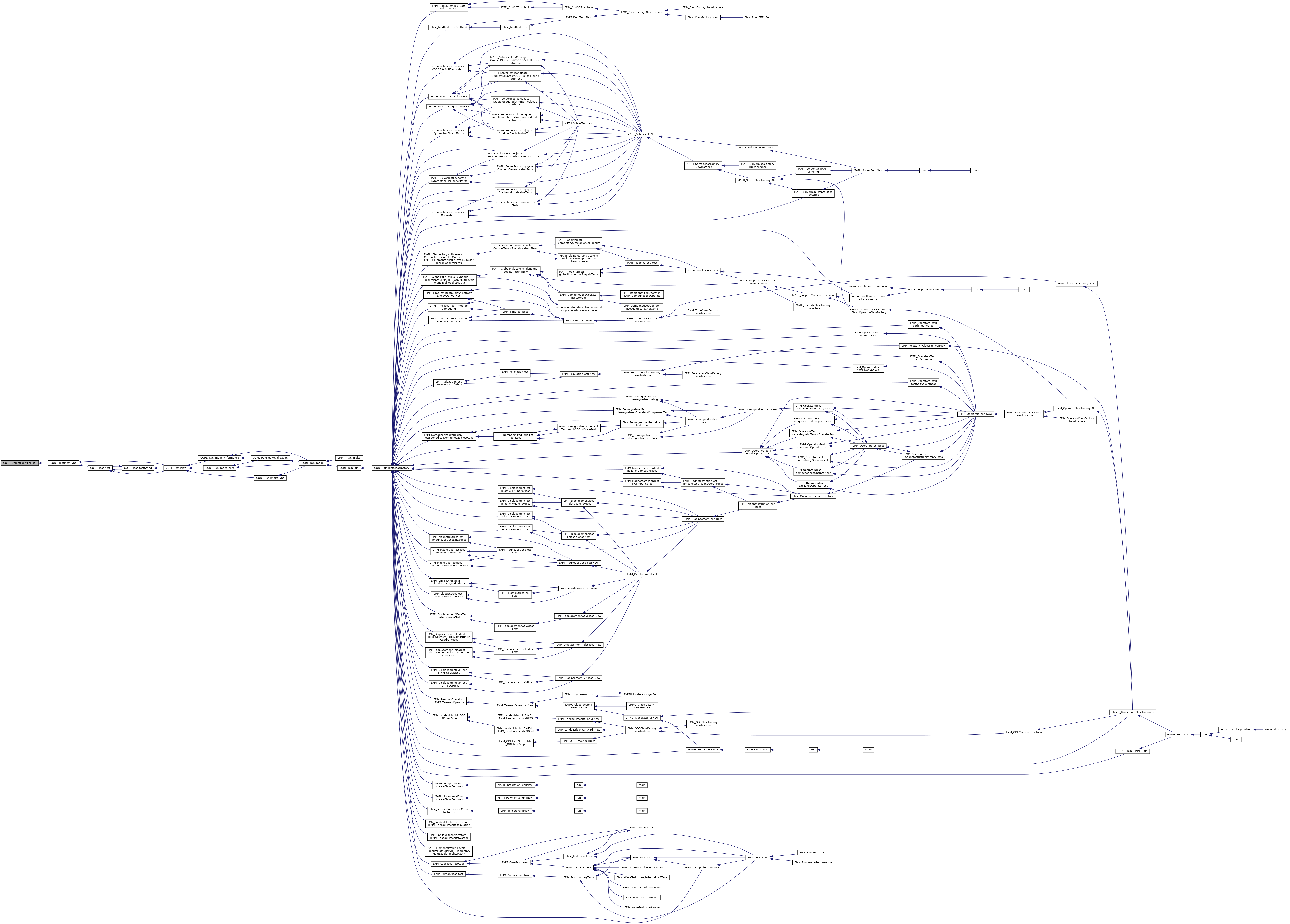
◆ getMinIndex()
|
inlinestaticinherited |
get the min value for the array/vector indexing type
- Returns
- the min value for the array/vector indexing type
Referenced by CORE_Test::testType().
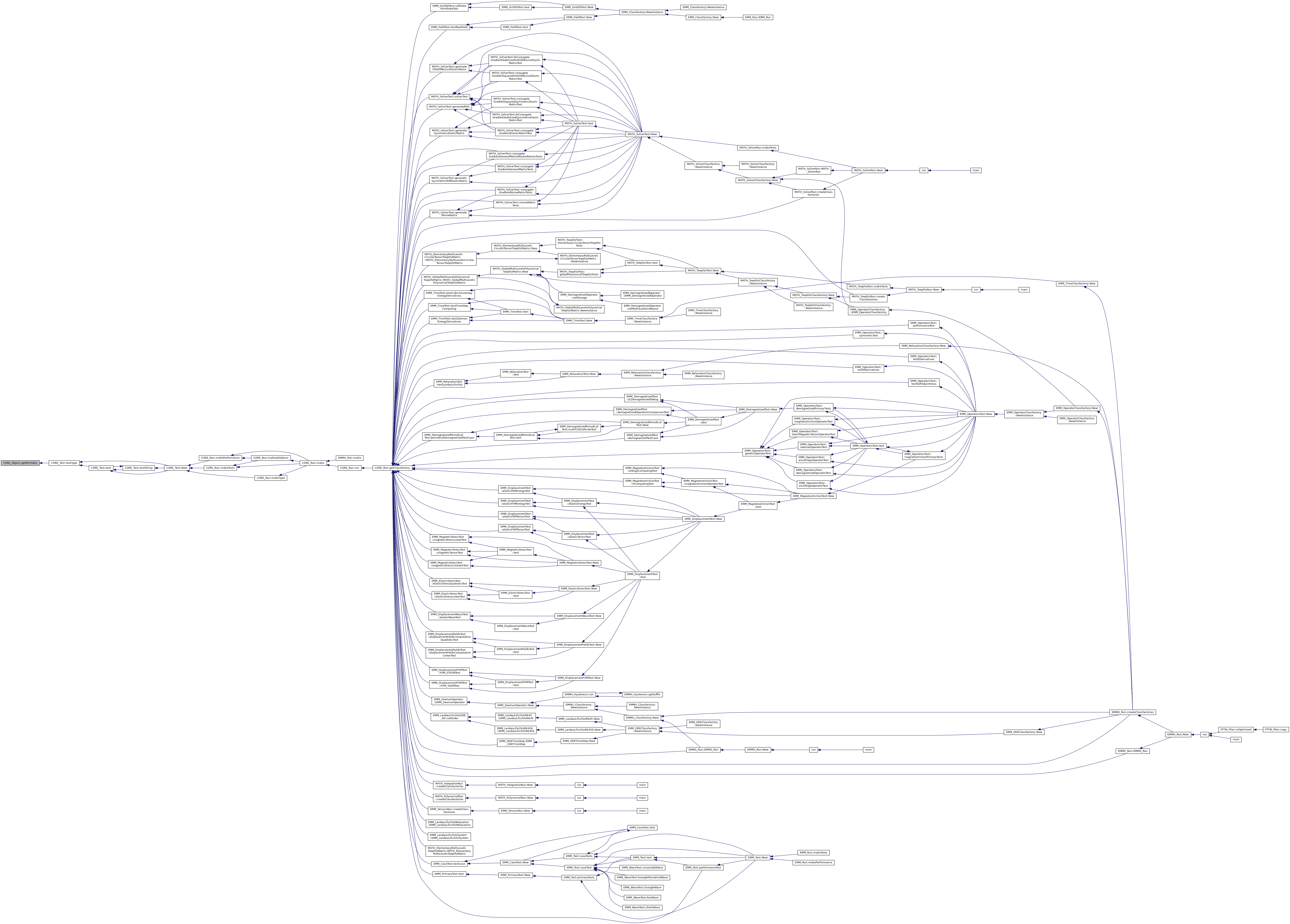
◆ getMinInt()
|
inlinestaticinherited |
get the min value for tInt type
- Returns
- the min value for tInt type
Referenced by CORE_Test::testType().
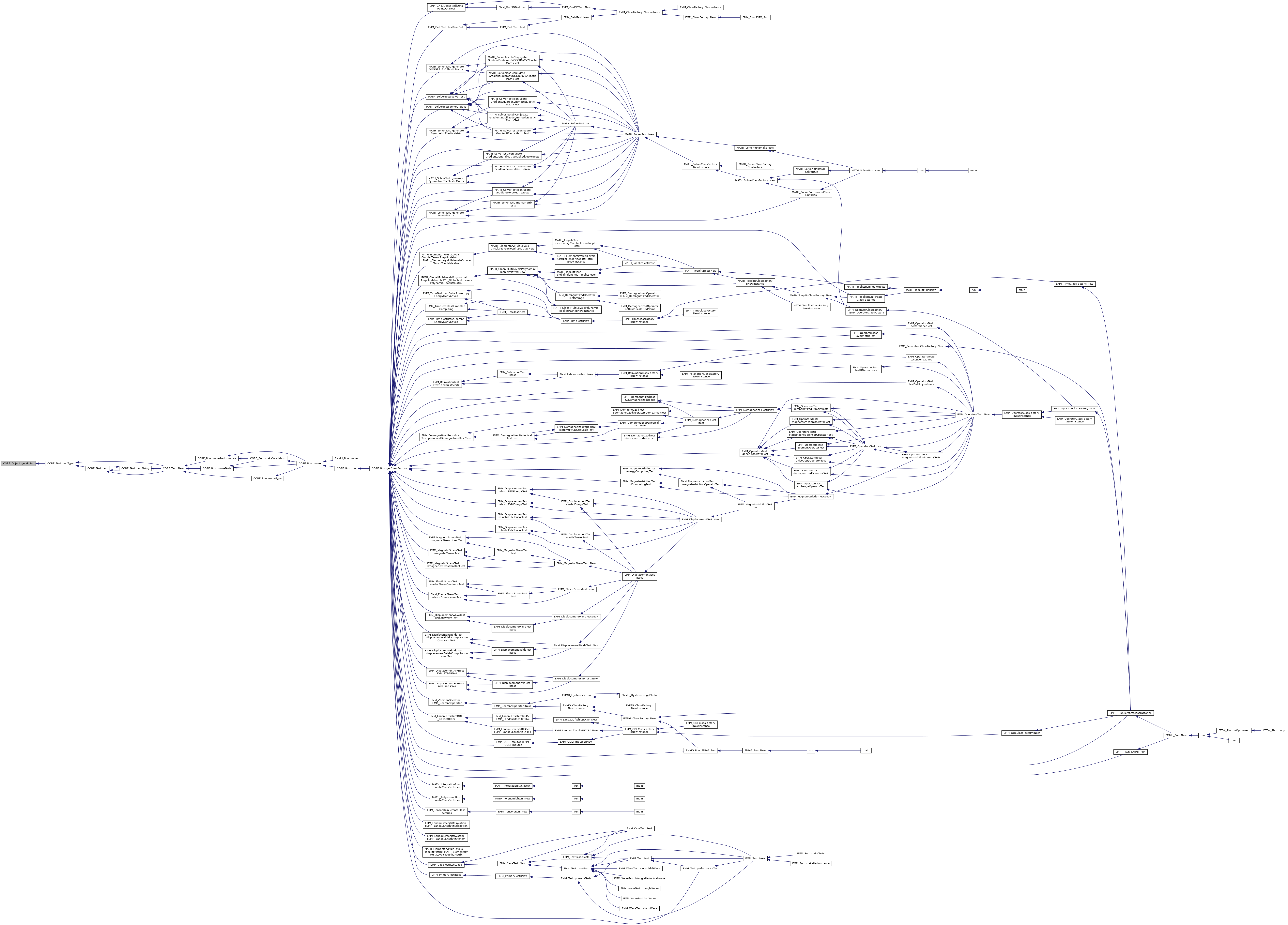
◆ getMinInteger()
|
inlinestaticinherited |
get the min value for the integer type
- Returns
- the minin value for the integer type
Referenced by CORE_Test::testType().

◆ getMinLDouble()
|
inlinestaticinherited |
get the min value for tLDouble type
- Returns
- the min value for tLDouble type
Referenced by CORE_Test::testType().

◆ getMinLInt()
|
inlinestaticinherited |
get the min value for tLInt type
- Returns
- the min value for tLInt type
Referenced by CORE_Test::testType().
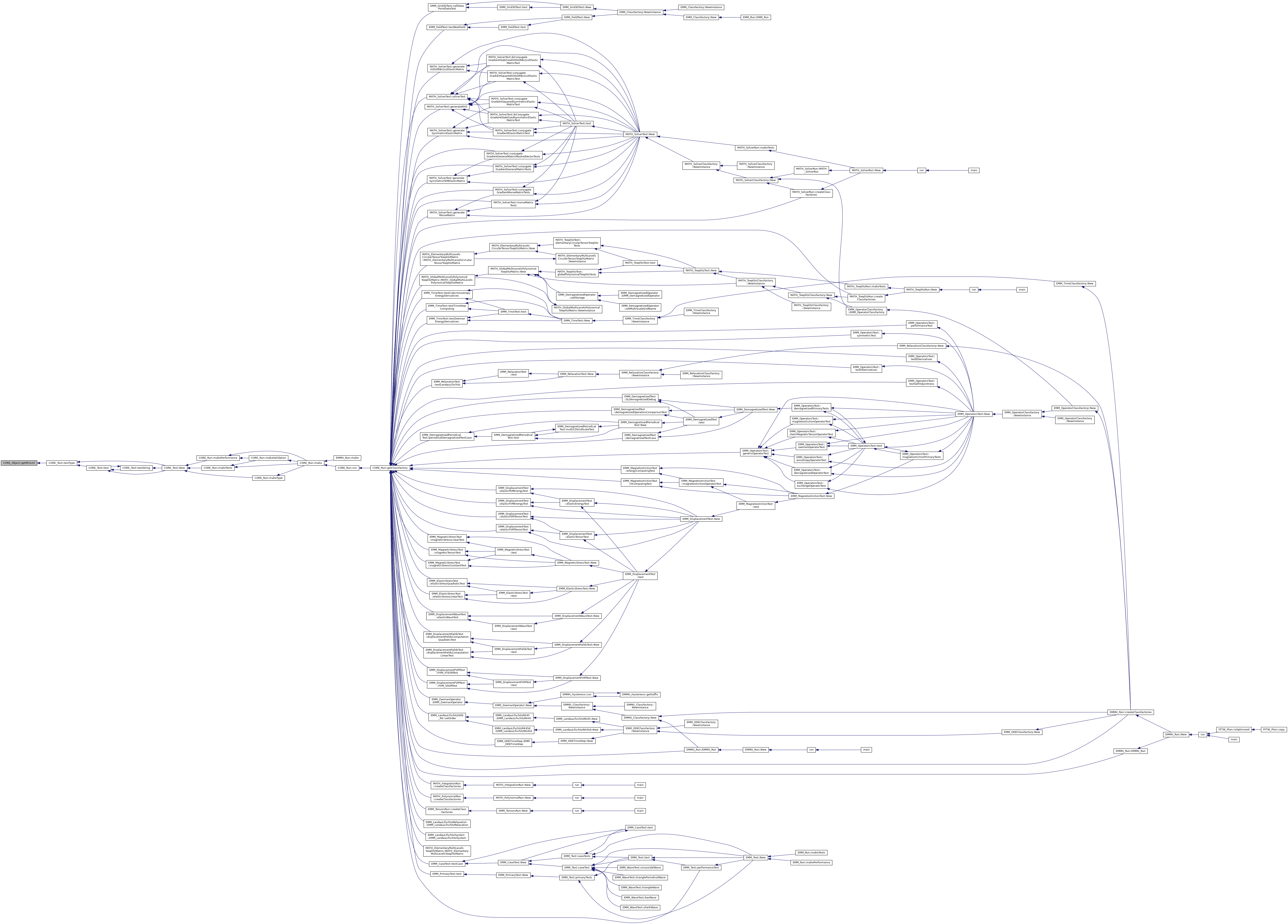
◆ getMinLLInt()
|
inlinestaticinherited |
get the min value for tLLInt type
- Returns
- the min value for tLLInt type
Referenced by CORE_Test::testType().

◆ getMinReal()
|
inlinestaticinherited |
get the min value for the real type
- Returns
- the min value for the real type
Referenced by CORE_Test::testType().
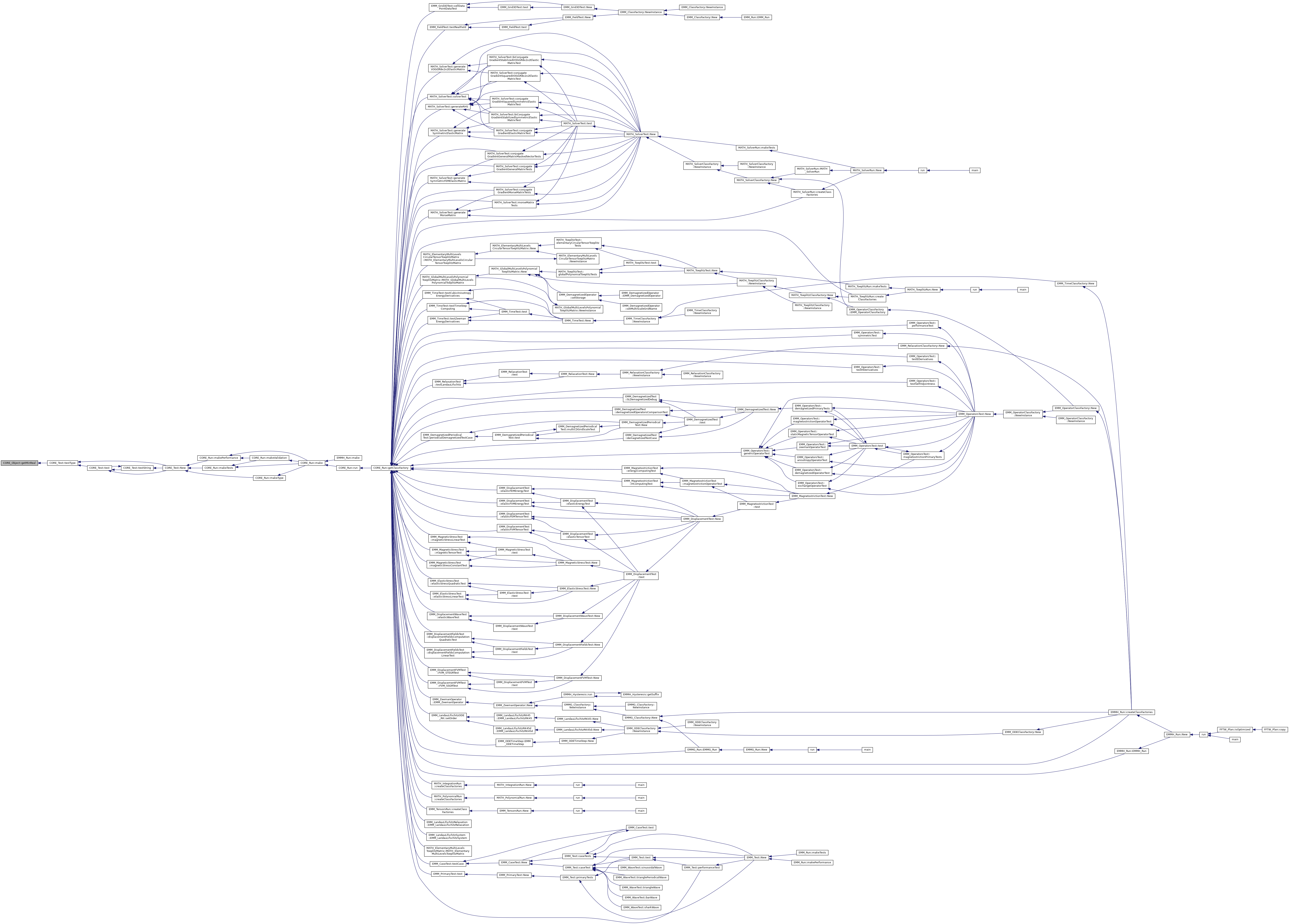
◆ getMinSInt()
|
inlinestaticinherited |
get the min value for tSInt type
- Returns
- the min value for tSInt type
Referenced by CORE_Test::testType().
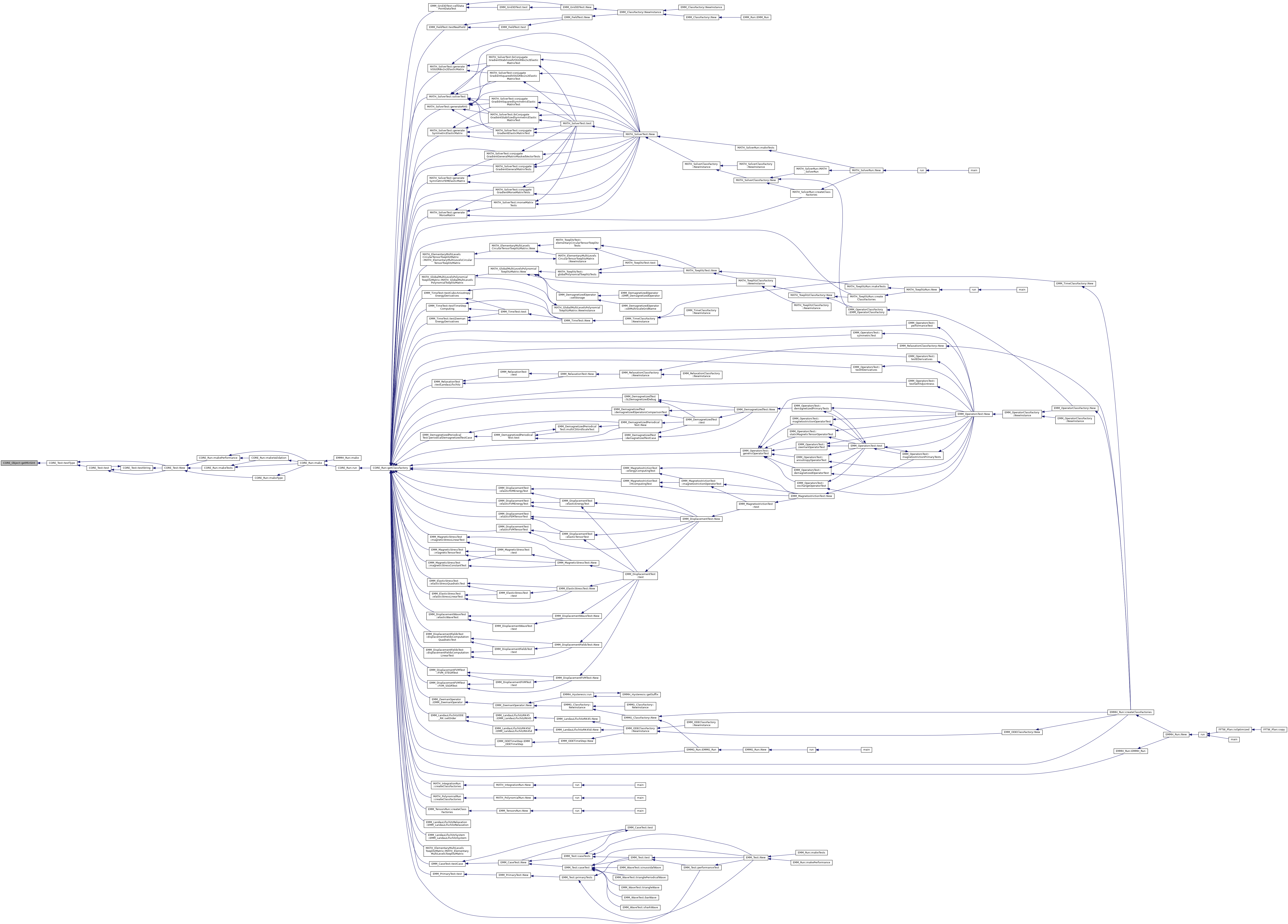
◆ getMinStepSize()
|
inline |
◆ getMinUChar()
|
inlinestaticinherited |
get the min value for tUChar type
- Returns
- the min value for tUChar type
Referenced by CORE_Test::testType().
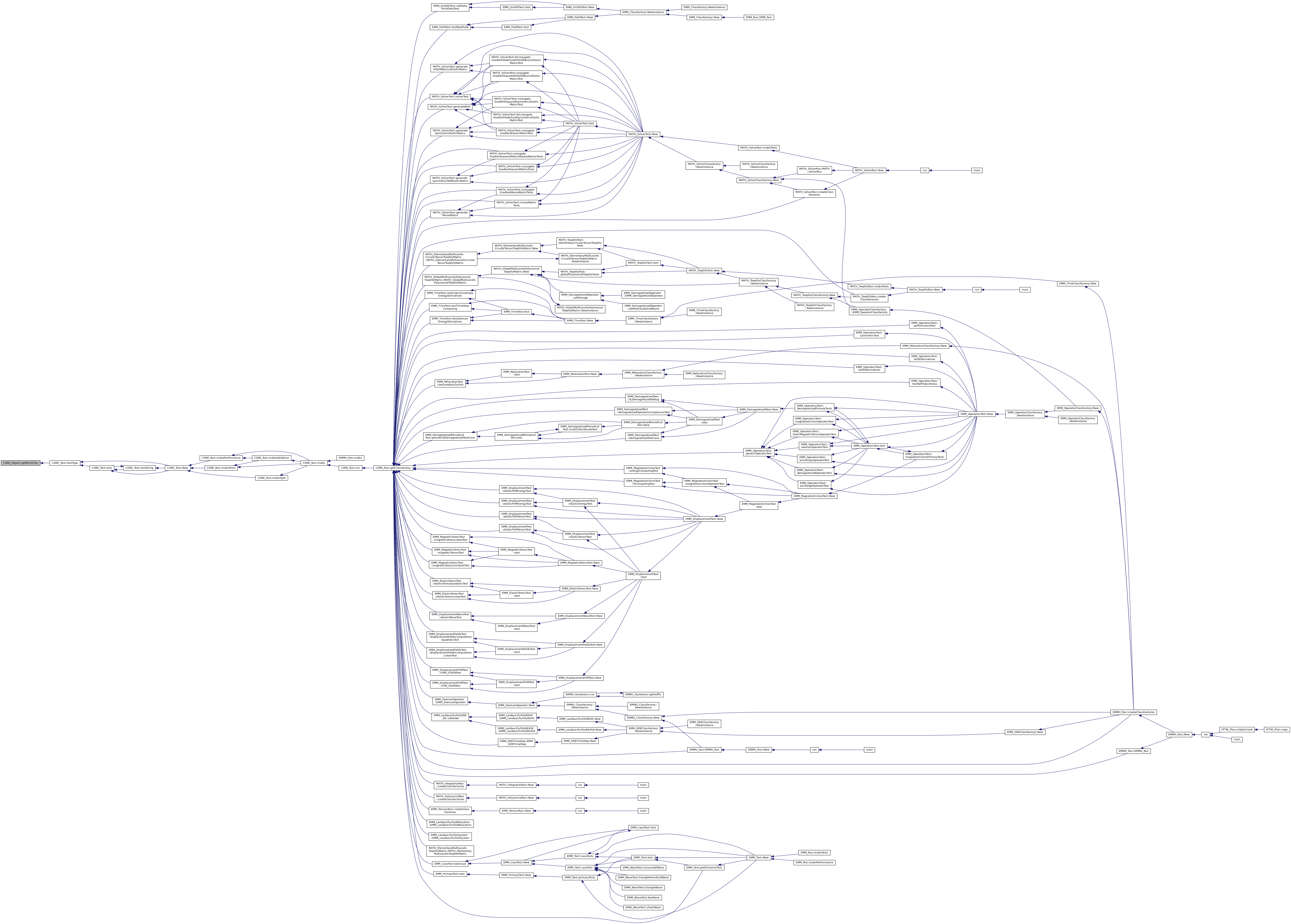
◆ getMinUIndex()
|
inlinestaticinherited |
get the min value for difference the array/vector indexing type
- Returns
- the min value for difference the array/vector indexing type
Referenced by CORE_Test::testType().
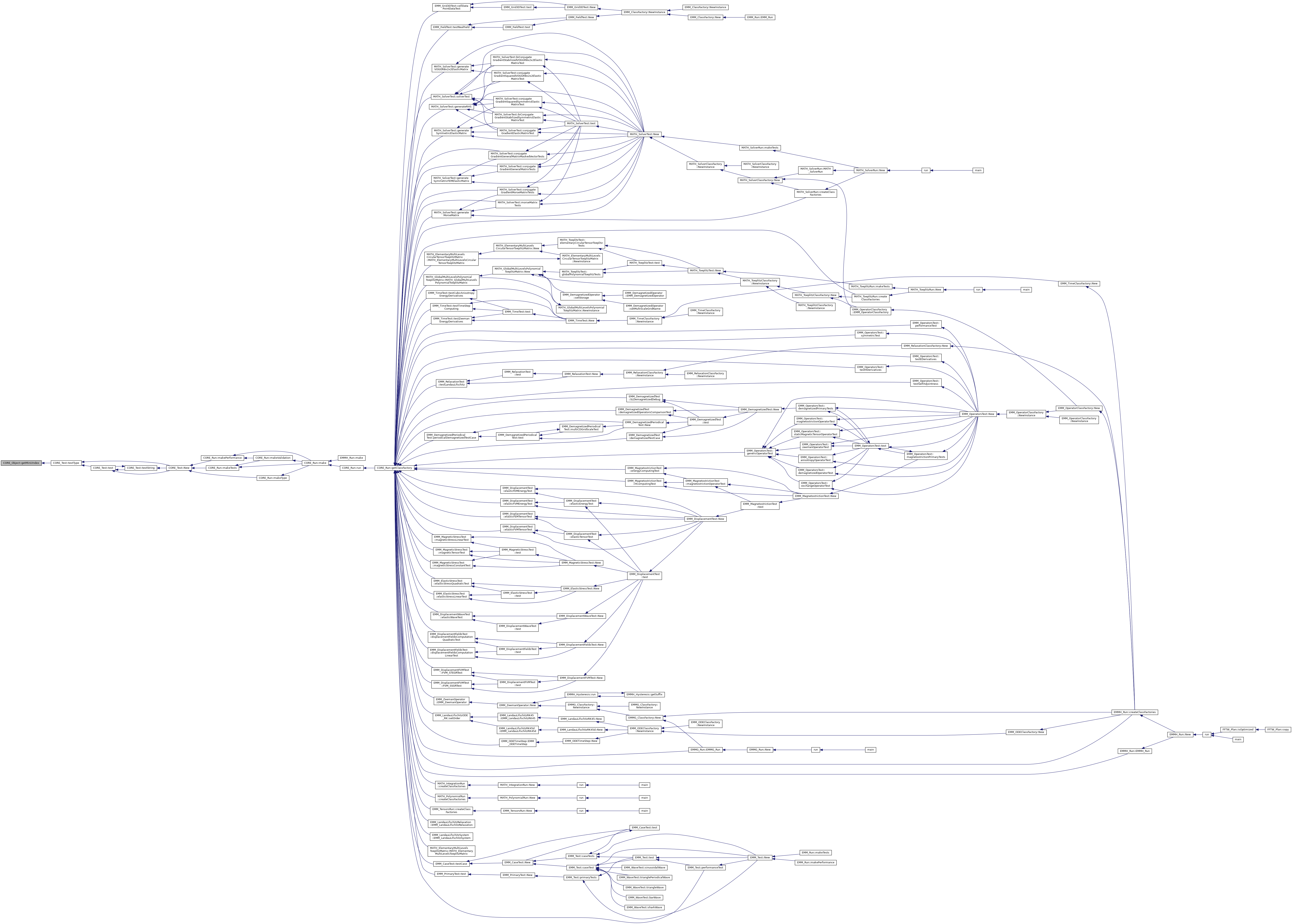
◆ getMinUInt()
|
inlinestaticinherited |
get the min value for tUInt type
- Returns
- the min value for tUInt type
Referenced by CORE_Test::testType().
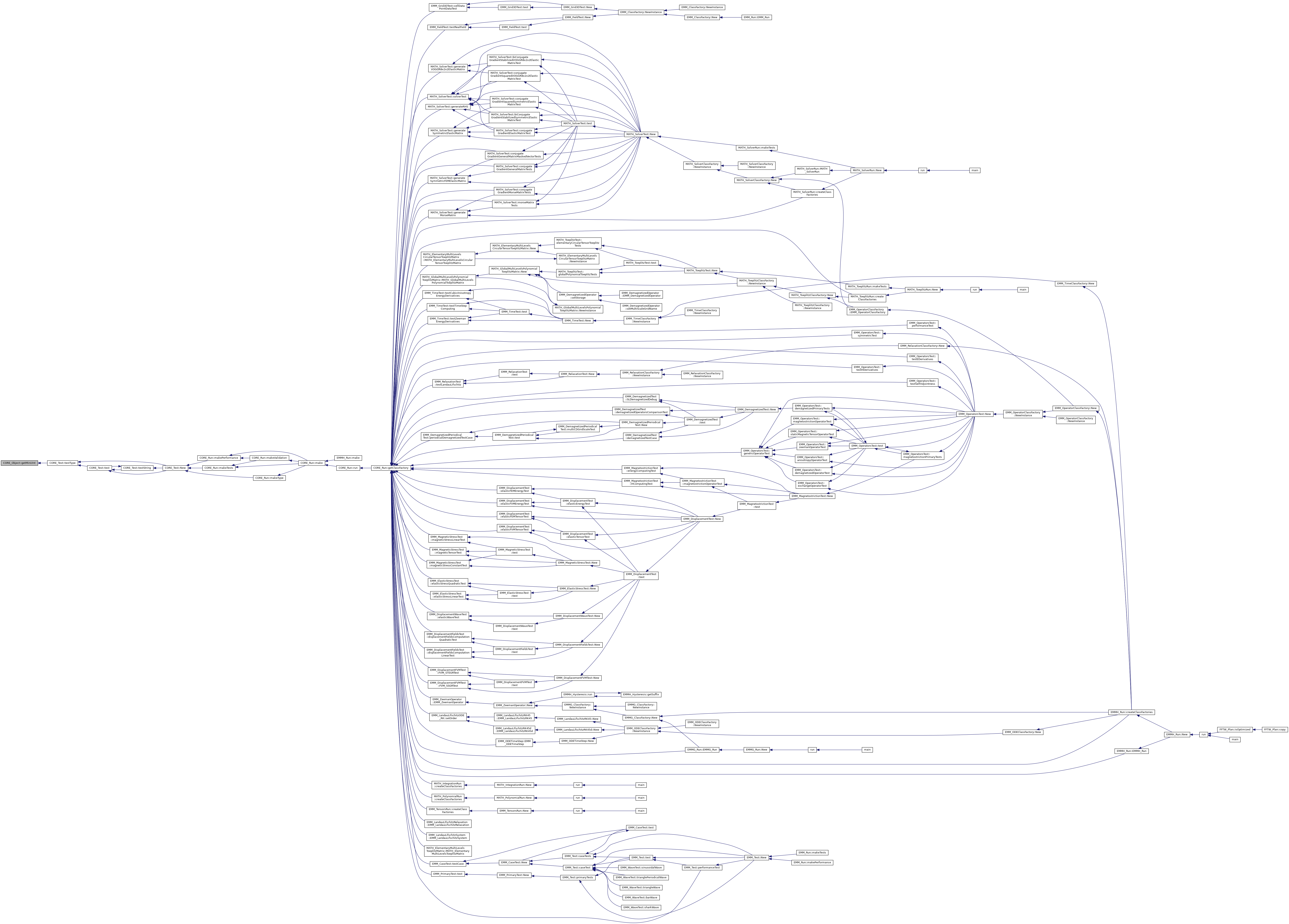
◆ getMinUInteger()
|
inlinestaticinherited |
get the min value for the unsigned integer type
- Returns
- the min value for the unsigned integer type
Referenced by CORE_Test::testType().

◆ getMinULInt()
|
inlinestaticinherited |
get the min value for tULInt type
- Returns
- the min value for tULInt type
Referenced by CORE_Test::testType().

◆ getMinULLInt()
|
inlinestaticinherited |
get the min value for tULLInt type
- Returns
- the min value for tULLInt type
Referenced by CORE_Test::testType().
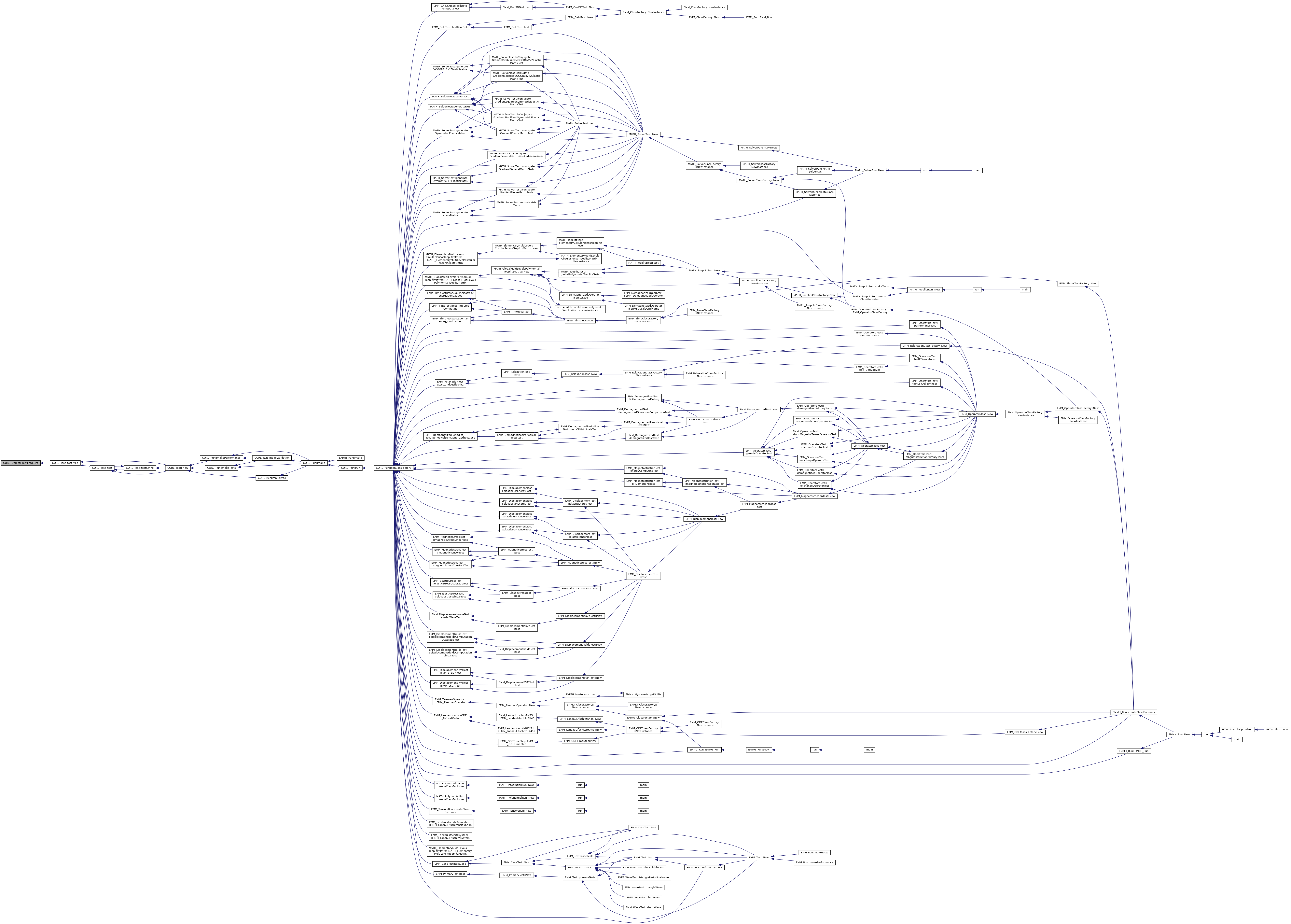
◆ getMinUSInt()
|
inlinestaticinherited |
get the min value for tUSInt type
- Returns
- the min value for tUSInt type
Referenced by CORE_Test::testType().
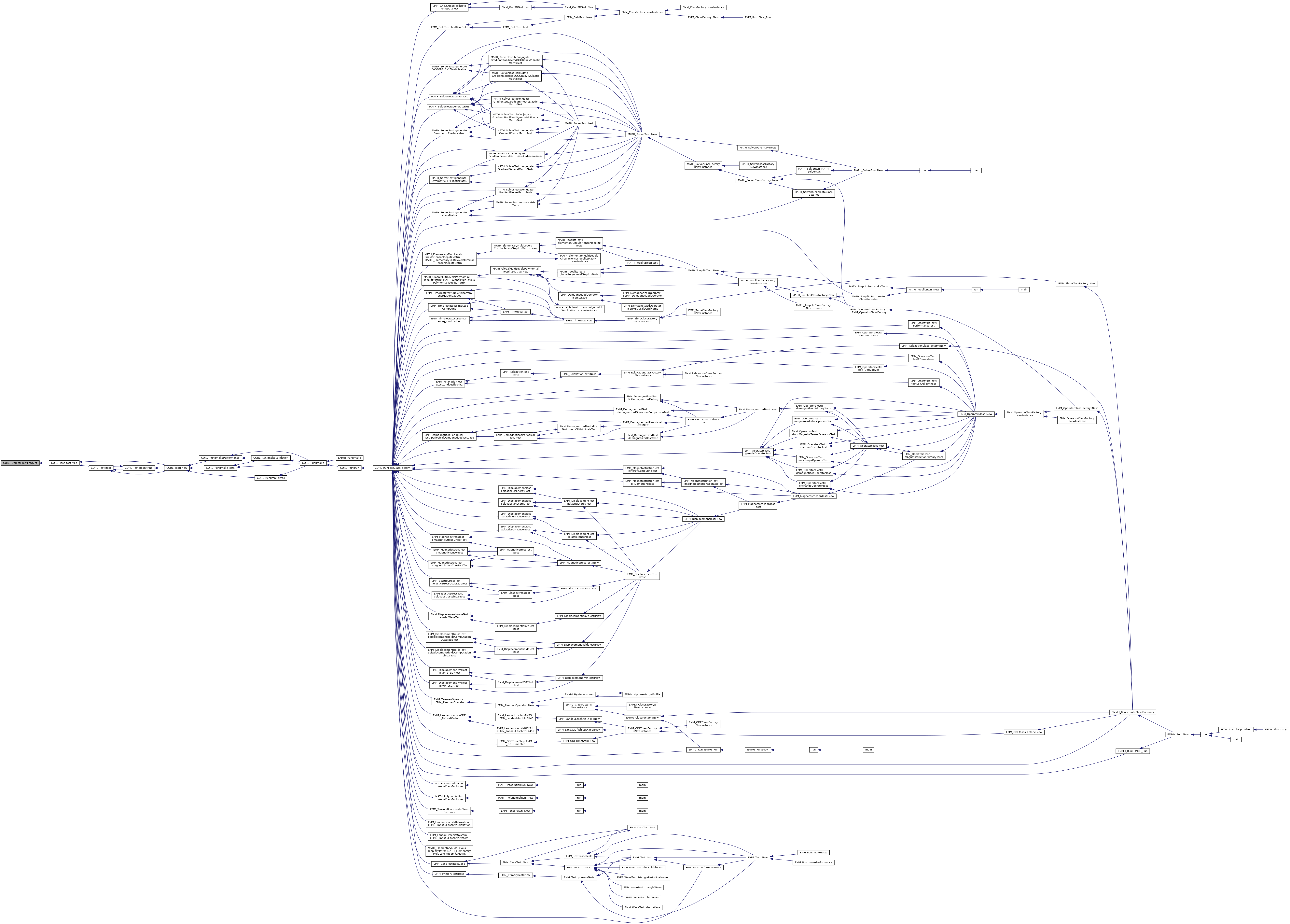
◆ getNeighborElement() [1/2]
return the index of the element which is next to the element iElement with iFace in common
- Parameters
-
index : index of the element in [0,getElementsNumber()[ iFace : index of the face into iElement element in [0,FACES_NUMBER_PER_ELEMENT[
- Returns
- the index of the element next to iElement element with iface face in common
- UNMAGNETIZED_ELEMENT if not element
Note that the periodicity of the domain is taken into account
References mIsDirectionPeriodic, and mNeighborsIndicators.
Referenced by buildMagnetizedNeighborsIndices(), buildNeighborsIndices(), and hasNeighborToFace().

◆ getNeighborElement() [2/2]
| tUIndex EMM_Grid3D::getNeighborElement | ( | const tUIndex & | iCell, |
| const tCellFlag & | N, | ||
| const tBoolean | isPeriodic[3], | ||
| const tUCInt & | f | ||
| ) | const |
return the index of the element which is next to the element iElement with iFace in common
- Parameters
-
iCell index of the element in [0,getElementsNumber()[ N faces indicator of the cell isPeriodic periodicity of the mesh f index of the face in [0,6[
- Returns
- the index of the element next to iElement element with iface face in common
- UNMAGNETIZED_ELEMENT if not element
References iand, mBoundElement, mNextElementTranslation, mPeriodicElementTranslation, mSegmentsNumber, tCellFlag, tUCInt, tUIndex, TWO_POWER_FACES, and UNMAGNETIZED_ELEMENT.
◆ getNeighborIndicator()
get the neighbor indicator of the element at index
- Parameters
-
index index of the element
- Returns
![$ neighbors[l]=\sum_{f=0}^{f=FACES_NUMBER_PER_ELEMENT} v_f 2^f, $](form_1615.png)
References buildMagnetizedNeighborsIndices(), buildNeighborsIndices(), isFaceOnDirichletBoundary(), isFaceOnNeumannBoundary(), tBoolean, tCellFlag, tLimitCondition, tUCInt, and tUInteger.
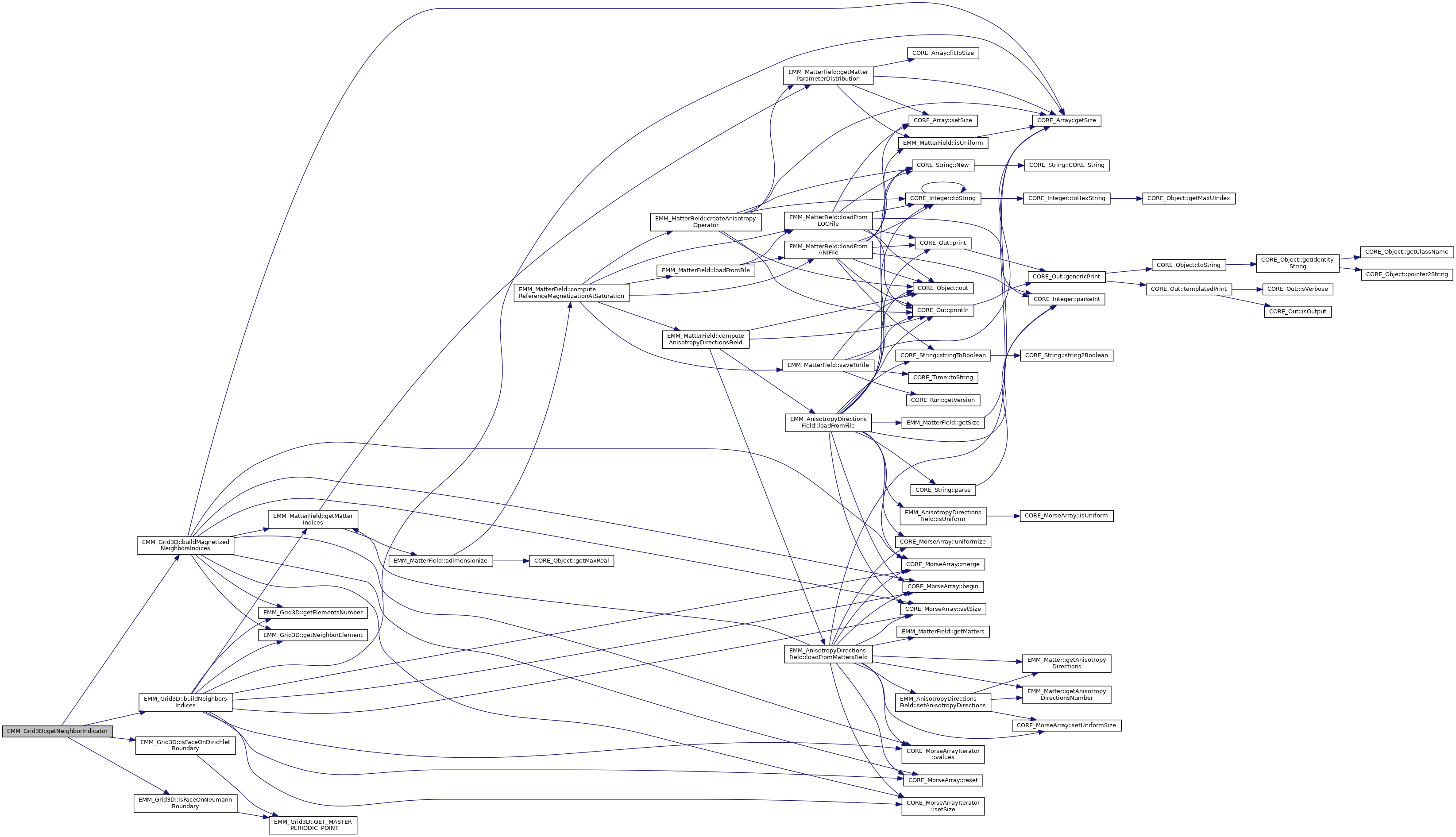
◆ getNeighborsIndicators() [1/2]
|
inline |
get the neighbors indicator for each element for reading
- Returns
- the neighbors indictators
![$ neighborsIndicators[l]=\sum_{f=0}^{f=FACES_NUMBER_PER_ELEMENT} v_f 2^f, $](form_1627.png) where in a parallepiped mesh
where in a parallepiped mesh- v_f=1 if element has neighbor with face f, 0 otherwise for all f in [0,FACES_NUMBER_PER_ELEMENT[
- v_FACES_NUMBER_PER_ELEMENT=1 is the element is magnetized, 0 otherwise
References CORE_Array< T >::get().
Referenced by EMM_LinearAnisotropyOperator::buildAnisotropyMatrix(), EMM_AnisotropyOperator::buildAnisotropyMatrix(), EMM_DisplacementFEMOperator::buildDataOnNeumannBoundaryFaces(), buildMagnetizedElements(), EMM_Test::createBox(), EMM_Test::createCube(), loadFromGEOStream(), EMM_Output::saveVTI(), toString(), EMMG_RealField::unmagnetized(), updateLimitConditionOnPoints(), and updateMagnetizedElementsNumber().


◆ getNeighborsIndicators() [2/2]
|
inline |
get the neighbor elements for writing
- Returns
- the neighbors indictators
![$ neighborsIndicators[l]=\sum_{f=0}^{f=FACES_NUMBER_PER_ELEMENT} v_f 2^f, $](form_1627.png) where in a parallepiped mesh
where in a parallepiped mesh- v_f=1 if element has neighbor with face f, 0 otherwise for all f in [0,FACES_NUMBER_PER_ELEMENT[
- v_FACES_NUMBER_PER_ELEMENT=1 is the element is magnetized, 0 otherwise
References CORE_Array< T >::get().

◆ getNeighborsIndicatorsByReference()
|
inline |
get the neighbor elements for reading
- Returns
- the neighbors
![$ neighbors[l]=\sum_{f=0}^{f=FACES_NUMBER_PER_ELEMENT} v_f 2^f, $](form_1615.png) where in a parallepiped mesh
where in a parallepiped mesh- v_f=1 if element has neighbor with face f, 0 otherwise for all f in [0,FACES_NUMBER_PER_ELEMENT[
- v_FACES_NUMBER_PER_ELEMENT=1 is the element is magnetized, 0 otherwise
References mNeighborsIndicators.
Referenced by EMM_MassMatrix::discretize().

◆ getOut()
|
inlinestaticinherited |
◆ getPeriodicIndicator() [1/2]
|
inline |
get the periodic indicator by face  with
with  if face f is periodic
if face f is periodic
- Returns

Referenced by EMM_DisplacementFEMOperator::buildDataOnNeumannBoundaryFaces(), EMM_DisplacementFVM_Interpolator::cellMean(), EMM_DisplacementFVM_VOGGROperator::computeGradUAtCellByOstrogradskiGreenIntegration(), EMM_DisplacementFVM_SSGROperator::computeGradUAtFaceByStokesIntegration(), EMM_DisplacementFVM_Interpolator::edgeMean(), EMM_DisplacementFVM_Interpolator::faceMean(), EMM_DisplacementFVM_Interpolator::interpolateUAtFace(), EMM_DisplacementFVM_Interpolator::interpolateUAtVertex(), EMM_DisplacementOperator::resetToInitialState(), EMM_DisplacementFVMOperator::setBoundaryFaceTypes(), and updateLimitConditionOnPoints().

◆ getPeriodicIndicator() [2/2]
get the periodic indicator by face  with
with  if face f is periodic
if face f is periodic
- Returns

◆ getPointerAddress()
|
inlineinherited |
return the identity string of the object
- Returns
- the identity string of the object
References CORE_Object::pointer2String().

◆ getRealEpsilon()
|
inlinestaticinherited |
get the eps which is the difference between 1 and the least value greater than 1 that is representable.
- Returns
- the eps which is the difference between 1 and the least value greater than 1 that is representable.
Referenced by MATH_P4::solveP4De(), and CORE_Test::testType().
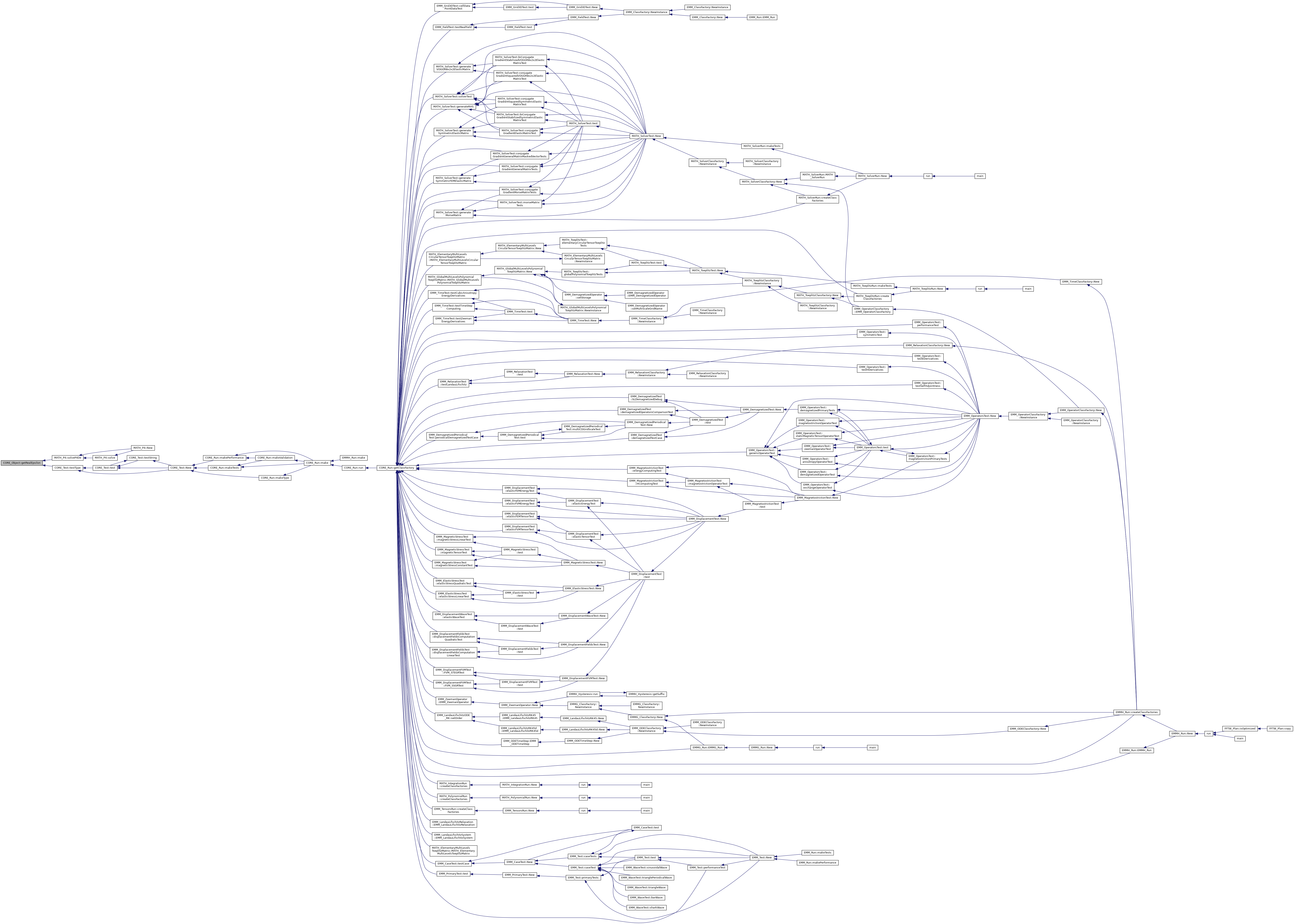
◆ getRealInfinity()
|
inlinestaticinherited |
get the infinity value
- Returns
- the inifinity value for the real type
Referenced by BrentFunction::BrentFunction(), EMM_OperatorsTest::compareDiscretizedData(), EMM_IterativeTimeStep::EMM_IterativeTimeStep(), EMM_SLElementaryDemagnetizedMatrix::Kxy(), NRFunction::NRFunction(), EMM_PolynomialInterpolationTimeStep::optimizeTimeFunction(), and CORE_Test::testType().
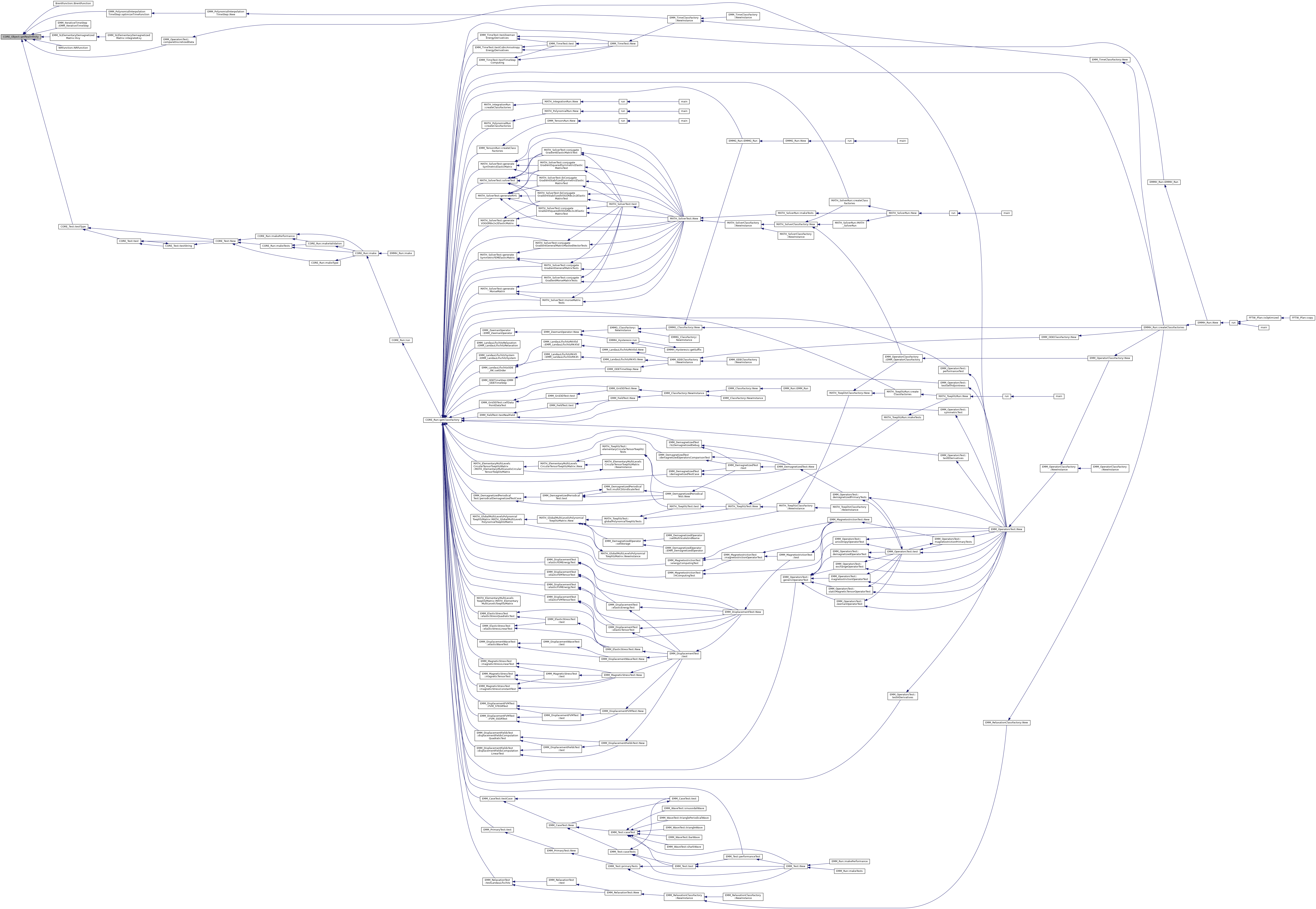
◆ getReferenceLength()
|
inline |
get the reference length
References mL.
Referenced by toString().

◆ getSegmentsNumber() [1/3]
get the segments number in all directions
- Parameters
-
nx : the number of segment in the x direction ny : the number of segment in the y direction nz : the number of segment in the z direction
Referenced by EMM_DisplacementFEMOperator::buildDataOnNeumannBoundaryFaces(), EMMG_RealField::cellDataToPointData(), EMMG_SLPeriodicMultiScale::coarseMinusFine(), EMM_DemagnetizedOperator::discretize(), EMM_MassMatrix::discretize(), EMM_DisplacementFVMOperator::discretize(), EMMG_SLDemagnetizedOperator::discretize(), EMMG_RealField::pointDataToCellData(), EMM_DisplacementOperator::resetToInitialState(), EMM_Output::saveVTI(), and EMM_DisplacementFVMOperator::setBoundaryFaceTypes().

◆ getSegmentsNumber() [2/3]
|
inline |
get the segments number in all directions
- Returns
- the array of the segments number
References mSegmentsNumber.
Referenced by updateLimitConditionOnPoints().

◆ getSegmentsNumber() [3/3]
get the segments number in direction d
- Parameters
-
d the direction in [0,3[
- Returns
- the number of segment in the directon d
◆ getSegmentsSize()
|
inline |
◆ getSharedPointer() [1/2]
|
inlineinherited |
get the shared pointer of this class into p
- Parameters
-
p : shared pointer of the class This
Referenced by CORE_Map< Key, Value >::getSharedPointer(), CORE_ArrayList< tString >::getSharedPointer(), EMM_Array< tCellFlag >::getSharedPointer(), CORE_Array< tCellFlag >::getSharedPointer(), CORE_MorseArray< tUChar >::getSharedPointer(), CORE_Vector< T >::getSharedPointer(), and CORE_Object::printObjectsInMemory().
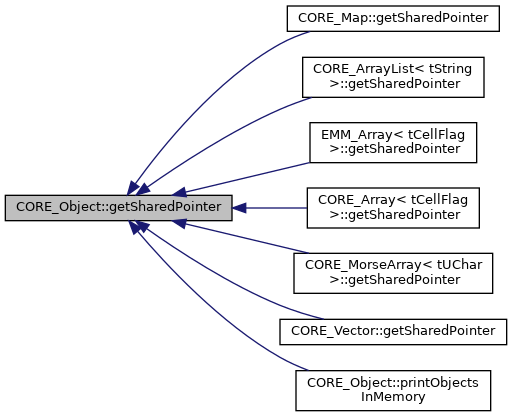
◆ getSharedPointer() [2/2]
|
inlineinherited |
get the shared pointer of this class into p
- Parameters
-
p : shared pointer of the class This
◆ getStepSize()
get the step size in the direction d
- Returns
- the step size of the mesh in direction d
◆ getStepsSize()
|
inline |
◆ getThread()
|
inlinestaticinherited |
get the profilier
- Returns
- the profiler
Referenced by MATH_MaskVector::add(), MATH_Vector::add(), EMM_DisplacementFEMOperator::addBoundaryElasticStress(), EMM_DisplacementFEMOperator::buildDataOnNeumannBoundaryFaces(), EMM_DisplacementFVMOperator::computeCineticEnergy(), EMM_DisplacementFVMOperator::computeElasticStress(), EMM_DisplacementFEMOperator::computeElasticStress(), EMM_DisplacementFVMOperator::computeElasticTensor(), EMM_DisplacementFEMOperator::computeElasticTensor(), EMM_StaticMagneticTensorOperator::computeEnergy(), EMM_CubicAnisotropyOperator::computeEnergy(), EMM_MagnetostrictionOperator::computeEnergy(), EMM_DisplacementOperator::computeEnergy(), EMM_AnisotropyOperator::computeEnergyWithMagneticExcitation(), EMM_DisplacementFVMOperator::computeEquilibriumMatrixDiagonalConditioner(), EMM_DisplacementFEMOperator::computeEquilibriumMatrixDiagonalConditioner(), EMM_FullExchangeOperator::computeMagneticExcitationField(), EMM_StaticMagnetostrictionOperator::computeMagneticExcitationField(), EMM_LinearAnisotropyOperator::computeMagneticExcitationField(), EMM_StaticMagneticTensorOperator::computeMagneticExcitationField(), EMM_CubicAnisotropyOperator::computeMagneticExcitationField(), EMM_MinimalExchangeOperator::computeMagneticExcitationField(), EMM_AnisotropyOperator::computeMagneticExcitationField(), EMM_MagnetostrictionOperator::computeMagneticExcitationField(), EMM_CubicAnisotropyOperator::computeMagneticExcitationFieldGradient(), EMM_AnisotropyOperator::computeMagneticExcitationFieldGradient(), EMM_DisplacementFVMOperator::computeMagneticStress(), EMM_DisplacementFEMOperator::computeMagneticStress(), EMM_OptimalTimeStep::computeOptimalTimeStep(), EMM_DisplacementFEMOperator::computeStressConstraintEnergy(), EMM_FullExchangeOperator::discretize(), EMM_MinimalExchangeOperator::discretize(), EMM_CondensedMassMatrix::discretize(), EMM_LinearAnisotropyOperator::discretize(), EMM_AnisotropyOperator::discretize(), EMM_DemagnetizedOperator::discretize(), EMMG_SLDemagnetizedOperator::discretize(), EMM_LandauLifschitzSystem::discretize(), MATH_Vector::divide(), MATH_MaskVector::dot(), MATH_Vector::dot(), EMM_4SymmetricTensors::doubleDot(), EMM_4Tensors::doubleDotCrossDoubleDotScalar(), EMM_4Tensors::doubleDotCrossProduct(), EMM_4Tensors::doubleDotCrossSquaredScalar(), EMM_4Tensors::doubleDotProduct(), MATH_Vector::init(), MATH_MaskVector::init(), EMM_LandauLifschitzODE_RK::integrateMagnetizationFieldAtTime(), EMM_DisplacementFVM_Interpolator::interpolateUAtVertices(), EMMG_SLDemagnetizedOperator::localAssembly(), EMM_DisplacementOperator::nullProjectionOnDirichletBoundary(), EMM_DisplacementOperator::periodicProjection(), EMM_2PackedSymmetricTensors::product(), EMM_CanonicalMassMatrix::product(), MATH_FullMatrix::product(), EMM_CondensedMassMatrix::product(), EMM_BlockMassMatrix::product(), MATH_MorseMatrix::product(), EMMG_SLDemagnetizedOperator::product(), EMM_DisplacementOperator::projectionOnDirichletBoundary(), EMM_LandauLifschitzSystem::resetOperatorsToInitialState(), EMM_DisplacementFVMOperator::setBoundaryFaceTypes(), FFTW_MultiDFTs::setFFT(), FFTW_MultiLevelsDFT::setFFT(), FFTW_MultiLevelsDFT::setLevels(), FFTW_MultiDFTs::setPlan(), FFTW_MultiLevelsDFT::setPlan(), EMM_CondensedMassMatrix::solve(), EMM_LandauLifschitzODE::solveODE(), EMM_4SymmetricTensors::squaredDoubleDot(), EMM_4Tensors::squaredDoubleDotCrossScalar(), EMM_4Tensors::squaredDoubleDotScalar(), EMM_CanonicalMassMatrix::symmetricDot(), EMM_CondensedMassMatrix::symmetricDot(), EMM_BlockMassMatrix::symmetricDot(), FFTW_Test::test(), MATH_SolverTest::test(), EMM_ODETest::testODE(), and updateLimitConditionOnPoints().

◆ getTypeName()
|
inlinestaticinherited |
◆ getVerticesNumber()
|
inline |
get the vertices number of the grid
- Returns
- the number of vertices of the grind
Referenced by EMM_DisplacementFEMOperator::buildDataOnNeumannBoundaryFaces(), EMMG_RealField::cellDataToPointData(), EMM_MassMatrix::discretize(), EMM_DisplacementFEMOperator::discretize(), EMM_DisplacementOperator::discretize(), EMMG_RealField::pointDataToCellData(), EMM_DisplacementOperator::resetToInitialState(), and updateLimitConditionOnPoints().

◆ hasNeighborToFace()
|
inline |
return true if the element at index iElement have a magnetized neighbor with common face iFace in [0,FACES_NUMBEr_PER_ELEMENT[ false otherwise
- Parameters
-
iElement index of the element iFace index of the local face in [0,FACES_NUMBER_PER_ELEMENT[
- Returns
- true if the element at index iElement have a magnetized neighbor with common face iFace in [0,FACES_NUMBER_PER_ELEMENT[ false otherwise throw an error if iface >= FACES_NUMBER_PER_ELEMENT
References getNeighborElement(), iand, isPeriodic(), tBoolean, tCellFlag, tUCInt, and tUIndex.

◆ is32Architecture()
|
inlinestaticinherited |
return true if the machine is a 32 bits machine
- Returns
- true is the computing is done in a 32 bits machine
References CORE_Object::pointer2String(), CORE_Object::printObjectsInMemory(), and tString.
Referenced by CORE_Test::testType().


◆ is64Architecture()
|
inlinestaticinherited |
return true if the machine is a 64 bits machine
- Returns
- true is the computing is done in a 64 bits machine
Referenced by EMM_VTK::getVTKType(), and CORE_Test::testType().
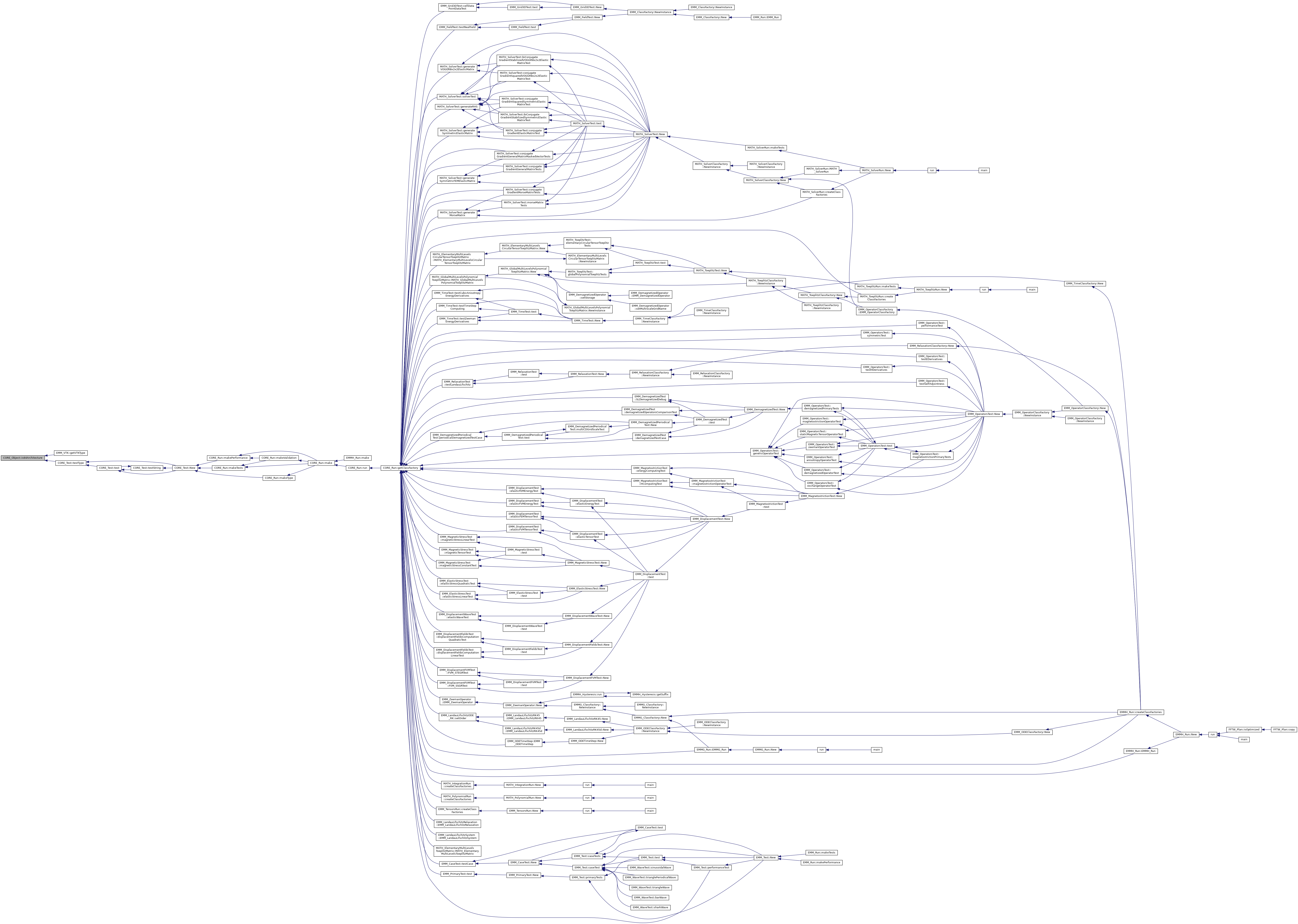
◆ IS_ELEMENT_MAGNETIZED()
test if the element woth neighbor indicator v is magnetized
- Parameters
-
[in] v neighbor indicator of the element in FACES_NUMBER_PER_ELEMENT+1 bits:  where in a parallepiped mesh
where in a parallepiped mesh- v_f=1 if element has neighbor with face f, 0 otherwise for all f in [0,FACES_NUMBER_PER_ELEMENT[
- v_FACES_NUMBER_PER_ELEMENT=1 is the element is magnetized, 0 otherwise
- Returns
- true if the neighbor indicator indicator is magnetized
Referenced by EMM_LinearAnisotropyOperator::buildAnisotropyMatrix(), EMM_AnisotropyOperator::buildAnisotropyMatrix(), EMM_DisplacementFEMOperator::buildDataOnNeumannBoundaryFaces(), EMM_DisplacementFEMOperator::computeElasticStress(), EMM_DisplacementFEMOperator::computeElasticTensor(), EMM_DisplacementFEMOperator::computeEquilibriumMatrixDiagonalConditioner(), EMM_DisplacementFEMOperator::computeMagneticStress(), EMM_DisplacementFEMOperator::computeStressConstraintEnergy(), EMM_CondensedMassMatrix::discretize(), EMM_CanonicalMassMatrix::product(), EMM_BlockMassMatrix::product(), EMM_CanonicalMassMatrix::symmetricDot(), EMM_BlockMassMatrix::symmetricDot(), EMM_Grid3DTest::testContainers(), EMMG_RealField::unmagnetized(), and updateLimitConditionOnPoints().
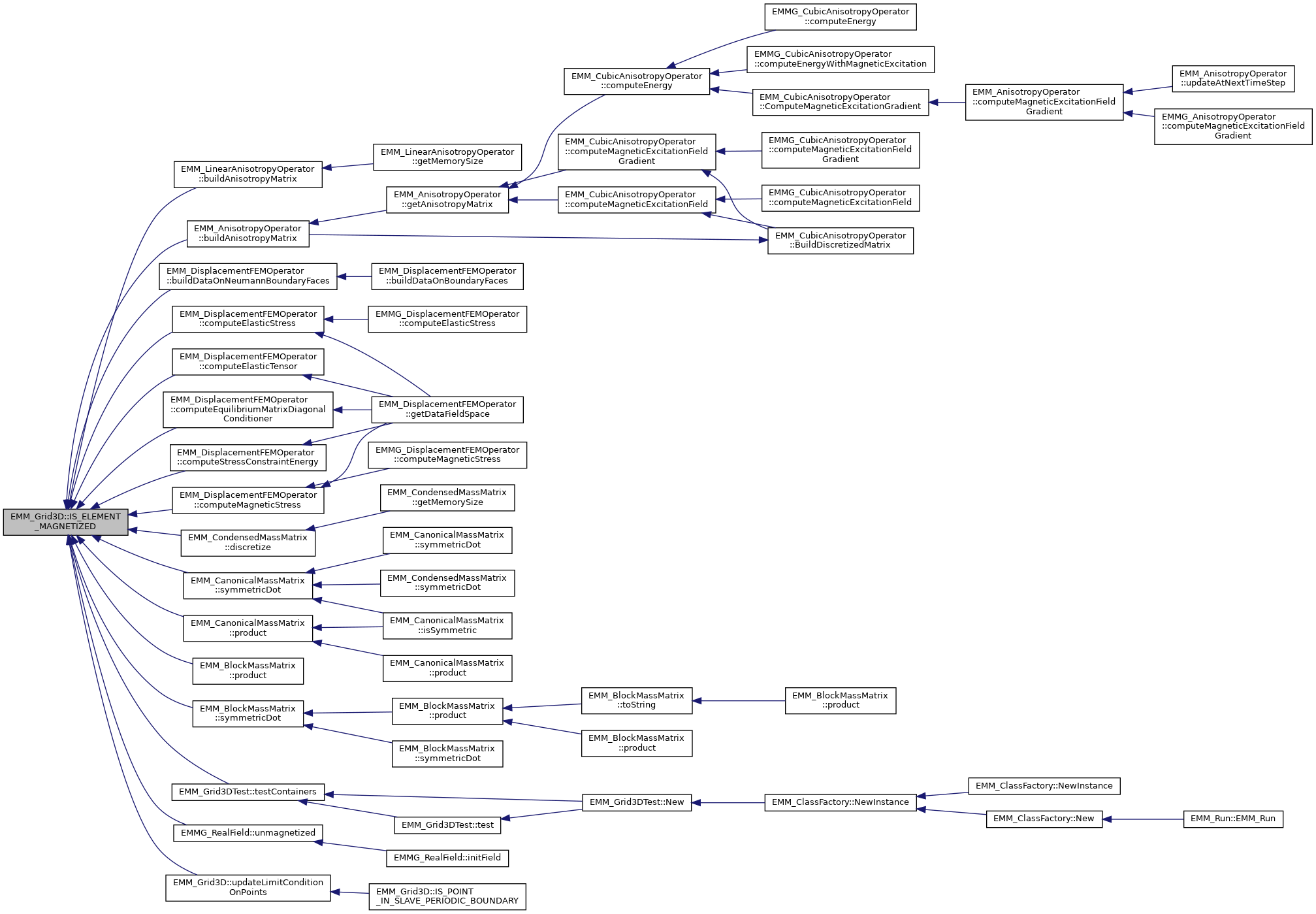
◆ IS_POINT_IN_BOUNDARY() [1/2]
|
inlinestatic |
test if the local point is in magnetized boundary.
- Parameters
-
x local coordinates of 3d-point in x[k] in {0,1} N neighbors value of the element:  where in a parallepiped mesh
where in a parallepiped mesh- v_f=0 for indicating if the paralleliped element has neighbor element with face f
- v_FACES_NUMBER_PER_ELEMENT for indicating if the element is magnetized
periodicity periodicity on direction P
- Returns
- true if the point is on periodic boundary
- X must be in face f => Xf=1
- cell has no neighbor next to face f => Nf=0
- face f must not be periodic => Pf=0
Referenced by EMM_Grid3DTest::testContainers(), and updateLimitConditionOnPoints().

◆ IS_POINT_IN_BOUNDARY() [2/2]
|
inlinestatic |
test if the local point is in magnetized boundary
- Parameters
-
X : byte integer  where
where  if the point belongs to face f
if the point belongs to face f N neighbors value of the element  where
where  for indicating if the has neighbor element with face f.
for indicating if the has neighbor element with face f. P periodicity indicator :  where where
where where  for indicating if the face f is periodic
for indicating if the face f is periodic
Th point is in boundary face if and only if all the following assertions are fullfilled:
- X must be in face f => Xf=1
- cell has no neighbor next to face f => Nf=0
- face f must not be periodic => Pf=0
◆ IS_POINT_IN_PERIODIC_BOUNDARY() [1/2]
|
inlinestatic |
test if the local point is in a periodical boundary
- Parameters
-
x : byte integer  where
where  if the point belongs to face f
if the point belongs to face f N neighbors value of the element  where
where  for indicating if the has neighbor element with face f.
for indicating if the has neighbor element with face f. periodicity periodicity indicator :  where where
where where  for indicating if the face f is periodic
for indicating if the face f is periodic
- x must be in face f => x_f=1
- cell has no neighbor next to face f => N_f=0
- face f must be periodic => Periodicity_f=1
◆ IS_POINT_IN_PERIODIC_BOUNDARY() [2/2]
|
inlinestatic |
test if the local point is in periodical boundary
- Parameters
-
X : byte integer  where
where  if the point belongs to face f
if the point belongs to face f N neighbors value of the element  where
where  for indicating if the has neighbor element with face f.
for indicating if the has neighbor element with face f. P periodicity indicator :  where where
where where  for indicating if the face f is periodic
for indicating if the face f is periodic
- X must be in face f => Xf=1
- cell has no neighbor next to face f => Nf=0
- face f must be periodic => Pf=1
◆ IS_POINT_IN_SLAVE_PERIODIC_BOUNDARY() [1/2]
|
inlinestatic |
test if the local point is in slave periodical boundary
- Parameters
-
x : byte integer  where
where  if the point belongs to face f
if the point belongs to face f N : neighbors value of the element  where
where  for indicating if the has neighbor element with face f.
for indicating if the has neighbor element with face f. periodicity : periodicity indicator :  where where
where where  for indicating if the face f is periodic
for indicating if the face f is periodic
- x must be in face f => x_f=1
- cell has no neighbor next to face f => N_f=0
- face f must be periodic => periodicity_f=1
- face f must in 010101=2+8+32=42
◆ IS_POINT_IN_SLAVE_PERIODIC_BOUNDARY() [2/2]
|
inlinestatic |
test if the local point is in slave periodical boundary
- Parameters
-
X : byte integer  where
where  if the point belongs to face f
if the point belongs to face f N neighbors value of the element  where
where  for indicating if the has neighbor element with face f.
for indicating if the has neighbor element with face f. P periodicity indicator :  where where
where where  for indicating if the face f is periodic
for indicating if the face f is periodic
- X must be in face f => X_f=1
- cell has no neighbor next to face f => N_f=0
- face f must be periodic => P_f=1
- face f must in 010101=2+8+32=42
References loadFooterFromGEOStream(), loadFromFile(), loadFromGEOFile(), loadFromGEOStream(), loadHeaderFromGEOStream(), saveToFile(), saveToGEOFile(), tBoolean, toString(), tString, tUInteger, and updateLimitConditionOnPoints().
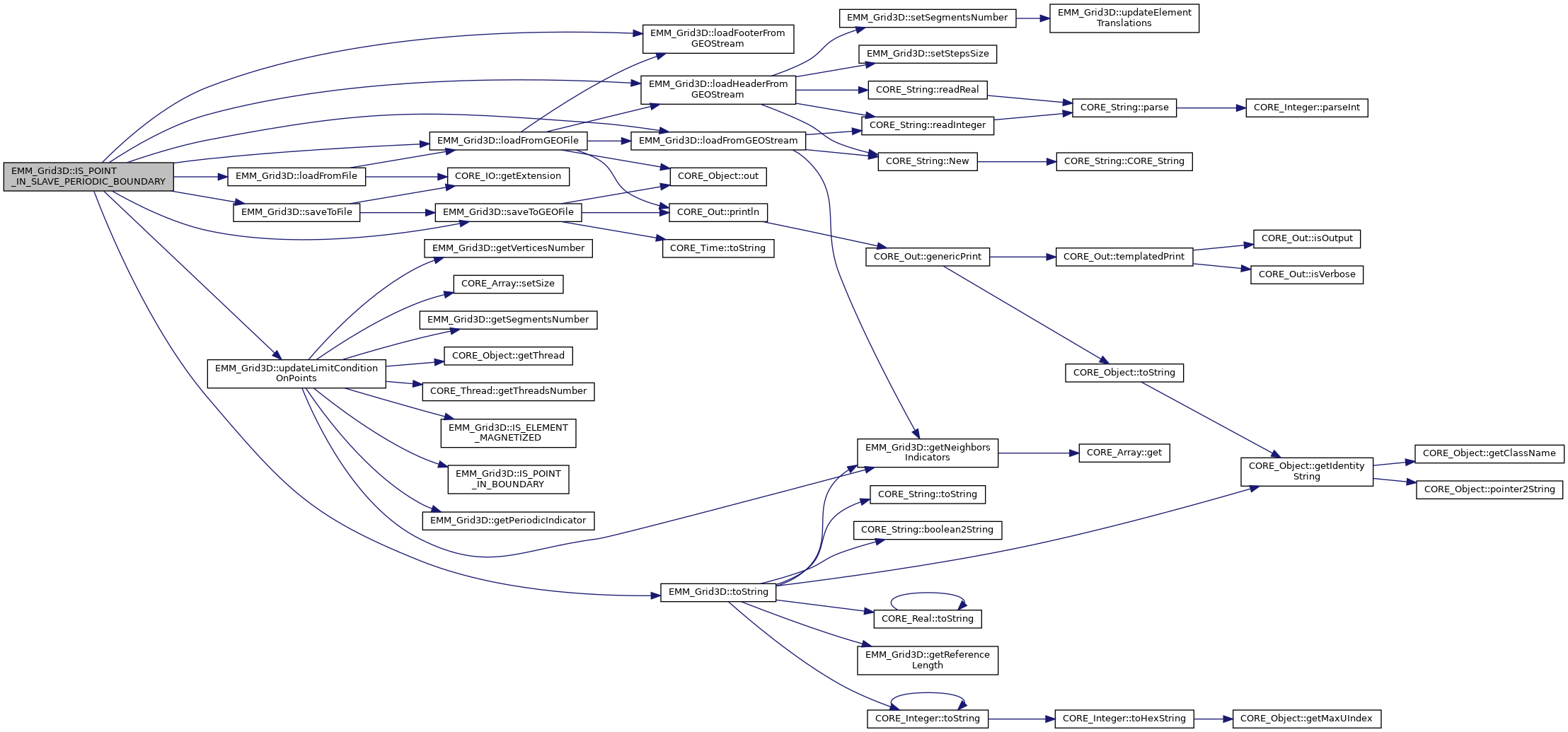
◆ isCubicVolume()
|
inline |
return true if the element is cubic
- Returns
- true if the adimensionized segment sizes are the same in all directions
References mAdimensionizedSegmentsSize, tBoolean, tReal, and tUSInt.
Referenced by EMM_Operator::discretize().

◆ isDirectionPeriodic() [1/2]
|
inline |
get if the mesh is periodic
- Returns
- the periodicty in all directions
References mIsDirectionPeriodic.
Referenced by EMMG_RealField::cellDataToPointData(), EMM_MassMatrix::discretize(), and EMM_DisplacementFVMOperator::discretize().

◆ isDirectionPeriodic() [2/2]
get if the mesh is periodic on direction d
- Parameters
-
d the direction of the mesh in [0,3[
- Returns
- true if the mech is periodic in the direction d
References ASSERT_IN.
◆ isElementMagnetized()
- Returns
- true if the element at index is magnetized
- Parameters
-
[in] index index of the element
- Returns
- true if the element is in the magnetized
Referenced by EMMG_RealField::cellDataToPointData(), and EMMG_RealField::pointDataToCellData().

◆ isFaceOnDirichletBoundary()
|
static |
return tue if the face f of the magnetized cell (xCell,yCell,zCell) is on Dirichlet boundary
- Parameters
-
[in] periodicity :: periodicity 2 bits flag : xxyyzz for periodicity along x y z (=1 for periodic, =0 otherwise) [in] xCell : index of the segment of the cell in the x-direction in [0,Nx[ [in] yCell : index of the segment of the cell in the y-direction in [0,Ny[ [in] zCell : index of the segment of the cell in the z-direction in [0,Nz[ [in] f : index of the face in [0,6[ [in] nPx : number of points in the direction x equals to Nx+1 [in] nPy : number of points in the direction y equals to Ny+1 [in] nPz : number of points in the direction z equals to Nz+1 [in] dirichletPoints : points considered as dirichlet one.
A face is on dirichet boundary if all the points are dirichlet one. if a point is a slave periodical point, the limit condition is the one of its master point
References DIRICHLET_LIMIT_CONDITION, ELEMENT_POINTS, FACE_POINTS, GET_MASTER_PERIODIC_POINT(), null, POINTS_NUMBER_PER_FACE, SLAVE_LIMIT_CONDITION, tBoolean, tFlag, tLimitCondition, tUCInt, tUIndex, and tUInteger.
Referenced by getNeighborIndicator(), and EMM_DisplacementFVMOperator::setBoundaryFaceTypes().


◆ isFaceOnNeumannBoundary()
|
static |
return tue if the face f of the magnetized cell (xCell,yCell,zCell) is on Neumann boundary
- Parameters
-
[in] periodicity : periodicity 2 bits flag : xxyyzz for periodicity along x y z (=1 for periodic, =0 otherwise) [in] xCell : index of the segment of the cell in the x-direction in [0,Nx[ [in] yCell : index of the segment of the cell in the y-direction in [0,Ny[ [in] zCell : index of the segment of the cell in the z-direction in [0,Nz[ [in] f : index of the face in [0,6[ [in] nPx : number of points in the direction x equals to Nx+1 [in] nPy : number of points in the direction y equals to Ny+1 [in] nPz : number of points in the direction z equals to Nz+1 [in] dirichletPoints : points considered as dirichlet one.
A face is on Neumann boundary if one point is a Neumann one. if a point is a slave periodical point, the limit condition is the one of its master point
References ELEMENT_POINTS, FACE_POINTS, GET_MASTER_PERIODIC_POINT(), NEUMANN_LIMIT_CONDITION, null, POINTS_NUMBER_PER_FACE, SLAVE_LIMIT_CONDITION, tBoolean, tFlag, tLimitCondition, tUCInt, tUIndex, and tUInteger.
Referenced by EMM_DisplacementFEMOperator::computeStressConstraintEnergy(), and getNeighborIndicator().


◆ isInMagnetizedDomainInterior()
- Returns
- true if the element at index has all neighbors in magnetized domaon
- Parameters
-
index index of the element
- Returns
- true if the element is in the interior of magnetized domain
References buildMagnetizedElements().

◆ isInstanceOf() [1/2]
|
inlineinherited |
test if the clas T is an instance of this class
- Returns
- true if the object is an instance of T
References null.
Referenced by MATH_ToeplitzTest::toeplitzTest().

◆ isInstanceOf() [2/2]
test if the object is an instance of className
- Parameters
-
name name of the class
- Returns
- true if the object is an instance of class Name
References CORE_Object::getIdentityString().

◆ isMemoryChecked()
|
inlinestaticinherited |
get if the memory checking is used
- Returns
- true: if the memory checking is used.
References CORE_Object::getClassName(), CORE_Object::mIsMemoryTesting, and tString.
Referenced by main().


◆ isPeriodic()
|
inline |
get if the mesh is periodic in one direction
References mIsPeriodic.
Referenced by EMM_DemagnetizedOperator::discretize(), EMMG_SLDemagnetizedOperator::discretize(), and hasNeighborToFace().

◆ loadFooterFromGEOStream()
|
private |
load header from geo stream
- Parameters
-
[in,out] f in/out stream [out] nReadLines number of lines read [out] nReadProperties number of properties read
- Returns
- true f succeeds. throw an exception if error
Referenced by IS_POINT_IN_SLAVE_PERIODIC_BOUNDARY(), and loadFromGEOFile().

◆ loadFromFile()
load from a file
- Parameters
-
[in] fileName : name of the file to load the geometry
- Returns
- true if the extension of the file name is recognized
References CORE_IO::getExtension(), loadFromGEOFile(), and tString.
Referenced by IS_POINT_IN_SLAVE_PERIODIC_BOUNDARY().


◆ loadFromGEOFile()
load from a geo file
- Parameters
-
[in] fileName : name of the geo file to load the geometry
- Returns
- true if the reading succeeds
References loadFooterFromGEOStream(), loadFromGEOStream(), loadHeaderFromGEOStream(), CORE_Object::out(), CORE_Out::println(), tBoolean, and tUInteger.
Referenced by IS_POINT_IN_SLAVE_PERIODIC_BOUNDARY(), and loadFromFile().


◆ loadFromGEOStream()
load the neighbors from geo stream
- Parameters
-
[in,out] f inout stream [out] nReadLines number of lines read
- Returns
- true if the good number of data is read
References getNeighborsIndicators(), mNeighborsIndicators, CORE_String::New(), CORE_String::readInteger(), tCellFlag, tString, tUIndex, and tUInteger.
Referenced by IS_POINT_IN_SLAVE_PERIODIC_BOUNDARY(), and loadFromGEOFile().


◆ loadHeaderFromGEOStream()
|
private |
load header from geo stream
- Parameters
-
[in,out] f inout stream [out] nReadLines number of lines read [out] nReadProperties number of properties read
- Returns
- true f succeeds. throw an exception if error
References mMagnetizedElementsNumber, CORE_String::New(), CORE_String::readInteger(), CORE_String::readReal(), setSegmentsNumber(), setStepsSize(), tBoolean, tDimension, tInteger, tReal, tString, and tUInteger.
Referenced by IS_POINT_IN_SLAVE_PERIODIC_BOUNDARY(), and loadFromGEOFile().


◆ New()
|
inlinestatic |
create a Grid3D object
- Returns
- a shared pointer to a grid 3D
References EMM_Grid3D(), updateElementTranslations(), and updateMagnetizedElementsNumber().
Referenced by EMM_Test::createBox(), EMM_Test::createCube(), EMM_ClassFactory::NewInstance(), EMM_Grid3DTest::testSegment(), and EMM_Grid3DTest::testThinSheet().

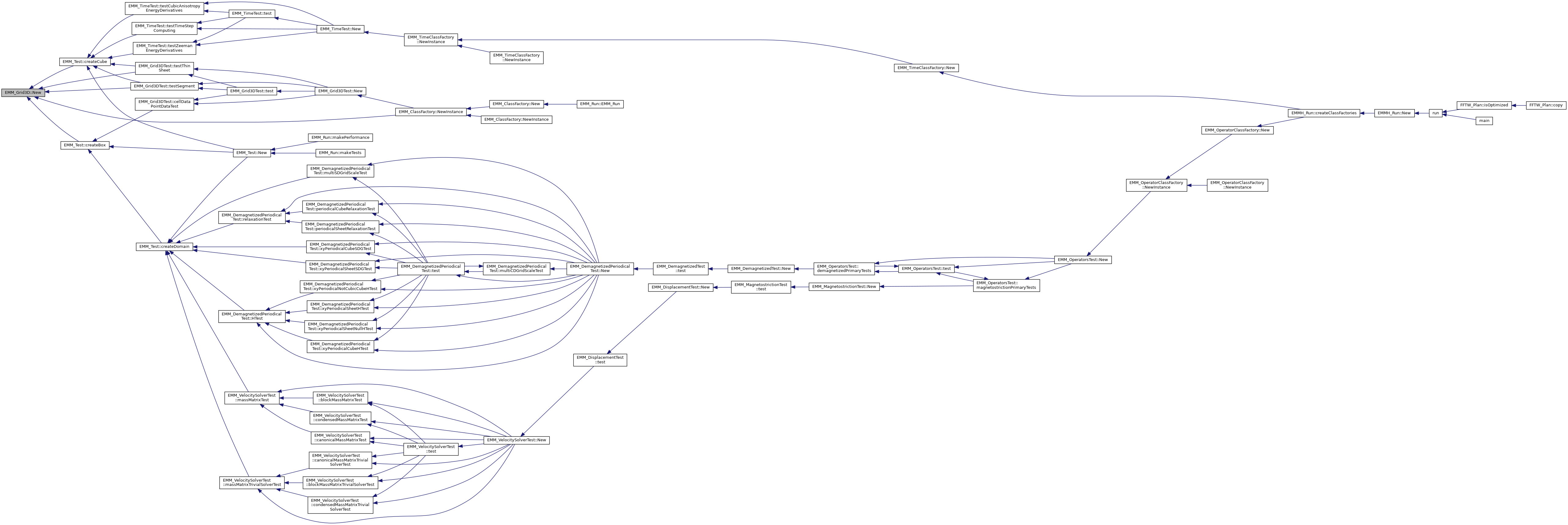
◆ out()
|
inlinestaticinherited |
get the output
- Returns
- the output stream
Referenced by EMM_Matter::adimensionize(), EMM_DisplacementFVMOperator::backup(), EMM_DisplacementOperator::backup(), MATH_ElementaryMultiLevelsToeplitzMatrix::buildSpectralVectorProjector(), EMM_Test::caseTest(), EMM_Test::caseTests(), EMM_MatterField::computeAnisotropyDirectionsField(), EMM_OptimalTimeStep::computeOptimalTimeStep(), MATH_MultiLevelsToeplitzMatrix::copy(), CORE_Exception::CORE_Exception(), EMM_MatterField::createAnisotropyOperator(), CORE_Run::createIO(), EMM_ElementaryTest::defaultBackupTest(), EMM_ElementaryTest::defaultTest(), MATH_MultiLevelsFFTToeplitzMatrix::diagonalize(), EMM_DisplacementFVMOperator::discretize(), EMM_MagnetostrictionOperator::discretize(), EMM_DisplacementFEMOperator::discretize(), EMM_4SymmetricTensors::doubleDot(), EMM_4Tensors::doubleDotCrossDoubleDotScalar(), EMM_TensorsTest::doubleDotCrossDoubleDotScalarTests(), EMM_4Tensors::doubleDotCrossProduct(), EMM_TensorsTest::doubleDotCrossProductTests(), EMM_4Tensors::doubleDotCrossSquaredScalar(), EMM_TensorsTest::doubleDotCrossSquaredScalarTests(), EMM_4Tensors::doubleDotProduct(), EMM_TensorsTest::doubleDotProductTests(), EMM_DisplacementWaveTest::elasticWaveTest(), EMM_Test::elementaryTests(), FFTW_Test::fftwTutorial(), MATH_IntegrationTest::gaussLegendreTest(), EMM_MagnetostrictionTest::HComputingTest(), EMM_DemagnetizedPeriodicalTest::HTest(), EMMH_HysteresisTest::hysteresisDefaultCycleTest(), EMM_TensorsTest::initializationTests(), EMM_MultiScaleGrid::initialize(), EMM_MultiScaleSDGrid::initialize(), EMM_MatterField::loadFromANIFile(), EMM_AnisotropyDirectionsField::loadFromFile(), EMM_Matter::loadFromFile(), loadFromGEOFile(), EMM_MatterField::loadFromLOCFile(), EMM_Array< tCellFlag >::loadFromStream(), EMM_Matter::loadFromStream(), EMM_Matter::loadMattersFromFile(), EMM_Run::loadSystemFromOptions(), EMM_ElementaryTest::magnetostrictionBackupTest(), CORE_Run::make(), EMMH_Run::makeHysteresis(), EMM_Run::makeRun(), CORE_Run::makeType(), EMM_ElementaryTest::optionsTest(), MATH_PolynomialTest::P4Tests(), EMM_Test::primaryTests(), EMM_LandauLifschitzSystem::printLog(), CORE_Run::printOptions(), EMM_2PackedSymmetricTensors::product(), EMMG_SLDemagnetizedOperator::projectionOnSpectralSpace(), CORE_Run::readOptionsFromCommandLine(), CORE_Test::readVectorTest(), EMM_DemagnetizedPeriodicalTest::relaxationTest(), EMM_DisplacementFVMOperator::restore(), EMM_DisplacementOperator::restore(), EMM_Input::restoreBackup(), EMMH_Hysteresis::run(), EMM_Output::save(), EMM_AnisotropyDirectionsField::saveToFile(), EMM_MatterField::saveToFile(), saveToGEOFile(), CORE_IOTest::searchTest(), EMMH_Hysteresis::setInitialMagnetizationField(), MATH_MultiLevelsToeplitzMatrix::setLevels(), EMM_4SymmetricTensors::squaredDoubleDot(), EMM_4Tensors::squaredDoubleDotCrossScalar(), EMM_TensorsTest::squaredDoubleDotCrossScalarTests(), EMM_4Tensors::squaredDoubleDotScalar(), EMM_TensorsTest::squaredDoubleDotScalarTests(), EMM_TensorsTest::squaredDoubleDotTests(), EMM_MatterTest::testAdimensionize(), EMM_MatterTest::testANIFile(), CORE_Test::testComplex(), CORE_Test::testDateWeek(), FFTW_Test::testDFT(), EMM_MatterTest::testIO(), EMM_ODETest::testODE(), CORE_Test::testOut(), CORE_Test::testReal(), EMM_FieldTest::testRealArray(), EMM_Grid3DTest::testSegment(), EMM_Grid3DTest::testThinSheet(), CORE_Test::testTime(), CORE_Test::testType(), MATH_FullMatrix::toString(), EMM_DemagnetizedPeriodicalTest::xyPeriodicalCubeSDGTest(), and EMM_DemagnetizedPeriodicalTest::xyPeriodicalSheetSDGTest().

◆ pointer2String()
|
staticinherited |
return the string representation of a pointer
- Parameters
-
obj : oject to get the string pointer
- Returns
- the string pointer of the object
References tString.
Referenced by CORE_Object::CORE_Object(), CORE_Object::getIdentityString(), CORE_Object::getPointerAddress(), CORE_Object::is32Architecture(), and CORE_Object::~CORE_Object().

◆ printObjectsInMemory() [1/2]
|
staticinherited |
print object in memory
- Parameters
-
f : output to print the objects in memory
References CORE_Object::getIdentityString(), CORE_Object::getSharedPointer(), CORE_Object::mIsMemoryTesting, CORE_Object::mObjects, and tInteger.

◆ printObjectsInMemory() [2/2]
|
inlinestaticinherited |
print object in memory in the standart output
Referenced by CORE_Object::is32Architecture(), and main().
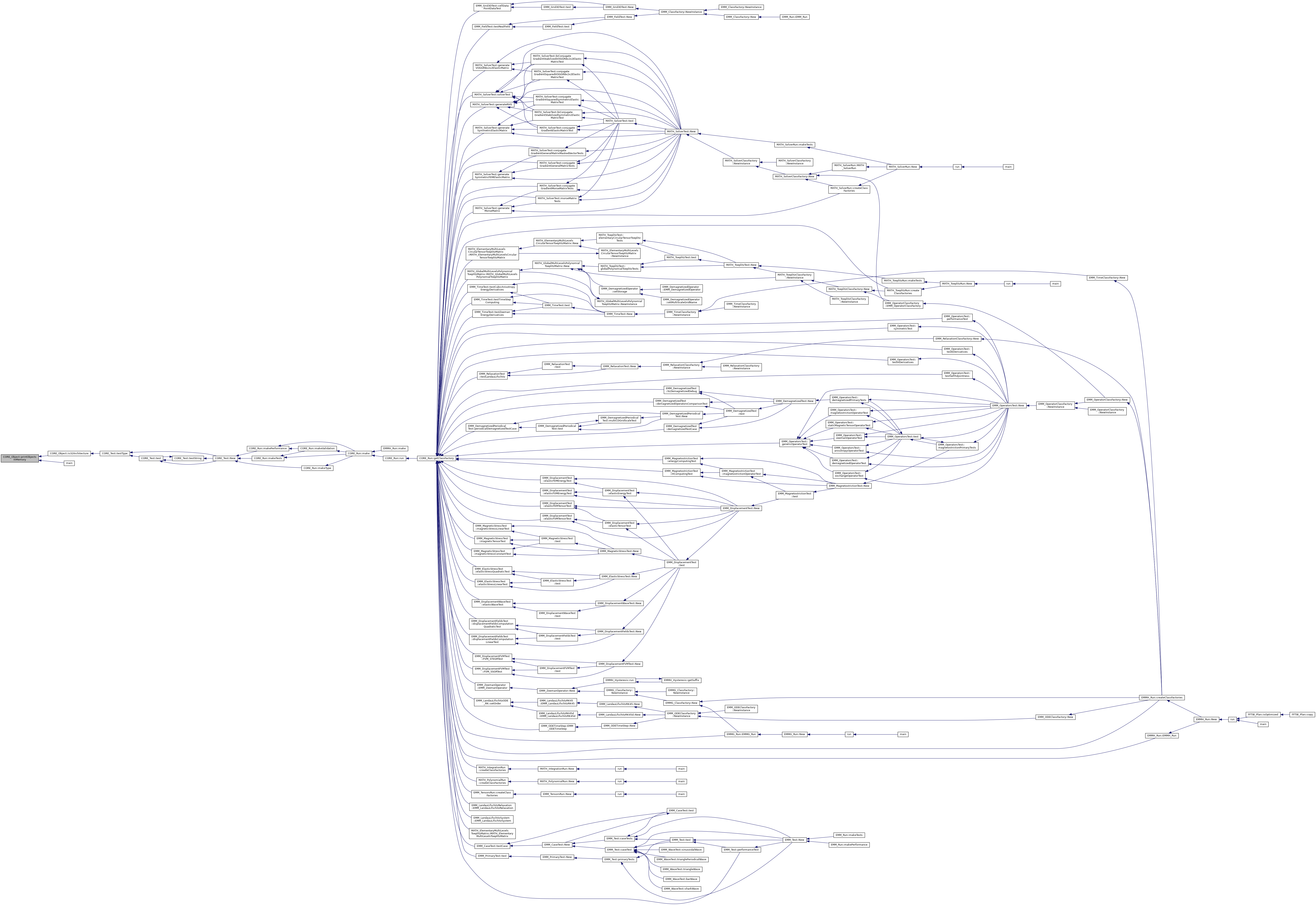
◆ resetOut()
|
inlinestaticinherited |
◆ resetThread()
|
inlinestaticinherited |
◆ saveToFile()
save to a file
- Parameters
-
[in] fileName : name of the file to save the geometry
- Returns
- true if the extension of the file name is recognized
References CORE_IO::getExtension(), saveToGEOFile(), and tString.
Referenced by IS_POINT_IN_SLAVE_PERIODIC_BOUNDARY().


◆ saveToGEOFile()
save to a geo file
- Parameters
-
[in] fileName : name of the geo file to save the geometry
- Returns
- true if the writing succeeds
References mElementsNumber, mMagnetizedElementsNumber, mNeighborsIndicators, mSegmentsNumber, mSegmentsSize, CORE_Object::out(), CORE_Out::println(), tBoolean, tChar, tIndex, CORE_Time::toString(), and tUSInt.
Referenced by IS_POINT_IN_SLAVE_PERIODIC_BOUNDARY(), and saveToFile().


◆ setIsDirectionPeriodic()
set if the mesh is periodic on all directions
References tUSInt.
◆ setIsMemoryChecked()
|
inlinestaticinherited |
set if the memory checking is used
- Parameters
-
v : true to check memory
Referenced by main().

◆ setIsPeriodic()
|
inline |
set if the mesh is periodic on all directions
References tUSInt.
◆ setOut()
|
inlinestaticinherited |
◆ setSegmentsNumber()
|
inline |
set the segments number in all directions
- Parameters
-
nx : the number of segment in the x direction ny : the number of segment in the y direction nz : the number of segment in the z direction
References updateElementTranslations().
Referenced by EMM_Test::createBox(), EMM_Test::createCube(), and loadHeaderFromGEOStream().


◆ setStepSize()
|
inline |
set the step size in the direction x,y,z when it's the same for the 3 directions
- Parameters
-
l : the common step size for the 3 direction
References setStepsSize().

◆ setStepsSize()
set the step size in the direction x,y,z : length of segment in each direction
- Parameters
-
lx : the step size in the x direction ly : the step size in the y direction lz : the step size in the z direction
Referenced by EMM_Test::createBox(), EMM_Test::createCube(), loadHeaderFromGEOStream(), and setStepSize().

◆ setThis()
|
inlineprotectedinherited |
set this weak shared pointer called toDoAfterThis setting method
- Parameters
-
p : shared pointer of the class This
References CORE_Object::toDoAfterThisSetting().

◆ setThread()
|
inlinestaticinherited |
set the thread
- Parameters
-
thread the shared pointer to the thread
References null.
Referenced by EMM_Run::EMM_Run(), EMM_TensorsRun::EMM_TensorsRun(), and MATH_SolverRun::MATH_SolverRun().

◆ SP_OBJECT()
|
private |
◆ toDoAfterThisSetting()
|
inlineprotectedvirtualinherited |
method called after the setting of the shared pointer this method can only be called once.
Reimplemented from CORE_Object.
Reimplemented in EMM_DisplacementOperator, EMM_DisplacementFVMOperator, EMM_GaussLegendreRelaxation, and EMM_GradGaussLegendreRelaxation.
Referenced by EMM_GaussLegendreRelaxation::toDoAfterThisSetting(), and EMM_DisplacementOperator::toDoAfterThisSetting().

◆ toString()
|
virtual |
turn the mesh into string
- Returns
- the string representation of the mesh
Reimplemented from CORE_Object.
References CORE_String::boolean2String(), CORE_Object::getIdentityString(), getNeighborsIndicators(), getReferenceLength(), mAdimensionizedSegmentsSize, mIsDirectionPeriodic, mNeighborsIndicators, mSegmentsNumber, mSegmentsSize, tCellFlag, CORE_Real::toString(), CORE_Integer::toString(), CORE_String::toString(), tString, tUIndex, and tUSInt.
Referenced by IS_POINT_IN_SLAVE_PERIODIC_BOUNDARY().
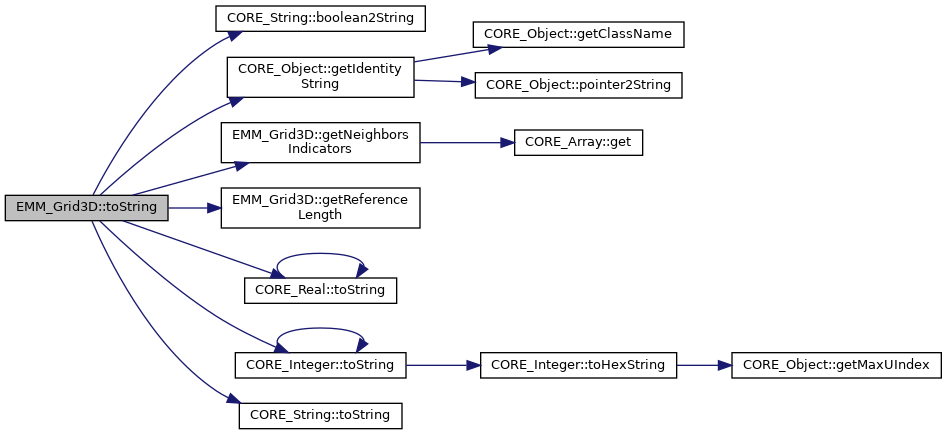

◆ updateElementTranslations()
|
private |
update the values of private arrays depending on the discretization of the domain :
- the index in [0,mSegmentsNumber[k][ of the 2 bound elements at each direction within mBoundElement array of size 6
- the index translation in each direction to have the previous or next element mNextElementTranslation array of size 6
- the index translation in each direction to have the periodic element mPeriodicElementTranslation array of size 6
References mBoundElement, mNextElementTranslation, mPeriodicElementTranslation, mSegmentsNumber, and tUInteger.
Referenced by EMM_Grid3D(), New(), and setSegmentsNumber().

◆ updateLimitConditionOnPoints()
| void EMM_Grid3D::updateLimitConditionOnPoints | ( | EMM_LimitConditionArray & | lc | ) | const |
update the limit condition of each point.
- Parameters
-
[in,out] lc limit condition points array
- In input: the limit conidtion is 1 for dirichlet point 0 for all others points.
- In output: the limit condition for each points of the mesh by order of priority:
- NO_LIMIT_CONDITION for all interior points or not magnetized point
- SLAVE_LIMIT_CONDITION for all point on periodic slave boundary
- DIRICHLET_LIMIT_CONDITION for all points on Dirichlet boundary
- NEUMANN_LIMIT_CONDITION for all points on Neumann boundary
Note that a point on master priodic face may be a dirichlet one to impose dirichlet condition on periodical faces
References DIRICHLET_LIMIT_CONDITION, ELEMENT_POINTS, getNeighborsIndicators(), getPeriodicIndicator(), getSegmentsNumber(), CORE_Object::getThread(), CORE_Thread::getThreadsNumber(), getVerticesNumber(), IS_ELEMENT_MAGNETIZED(), IS_POINT_IN_BOUNDARY(), NEUMANN_LIMIT_CONDITION, NO_LIMIT_CONDITION, null, OMP_GET_THREAD_ID, OMP_PARALLEL_PRIVATE_SHARED_DEFAULT, POINTS_NUMBER_PER_ELEMENT, CORE_Array< T >::setSize(), SLAVE_LIMIT_CONDITION, tBoolean, tCellFlag, tInteger, tLimitCondition, tUCInt, tUIndex, tUInteger, and tUSInt.
Referenced by IS_POINT_IN_SLAVE_PERIODIC_BOUNDARY().
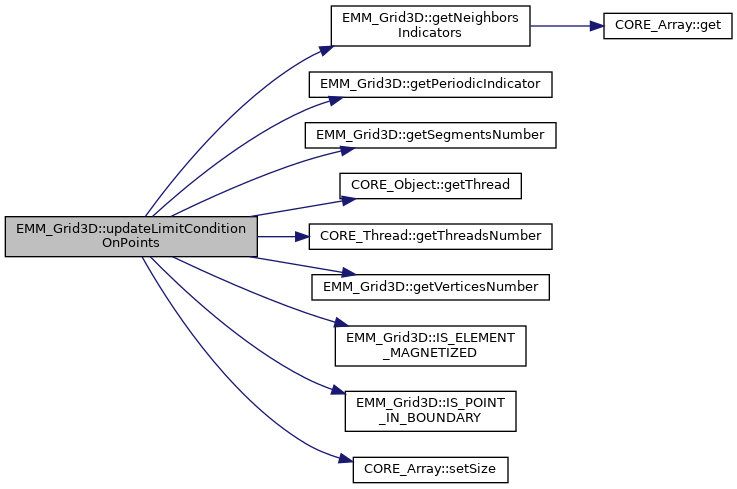

◆ updateMagnetizedElementsNumber()
| void EMM_Grid3D::updateMagnetizedElementsNumber | ( | ) |
compute the magnetized elements number form neighbors array the number of magnetized elements is returned by the method getMagnetizedElementsNumber()
References getElementsNumber(), getNeighborsIndicators(), MAGNETIZED_ELEMENT_MIN_INDICATOR, mMagnetizedElementsNumber, tCellFlag, and tUIndex.
Referenced by EMM_Test::createBox(), EMM_Test::createCube(), and New().


Member Data Documentation
◆ DIRICHLET_LIMIT_CONDITION
|
static |
Referenced by EMM_DisplacementFVMOperator::buildDataOnDirichletBoundaryFaces(), EMM_DisplacementFEMOperator::computeElasticStress(), EMM_DisplacementFEMOperator::computeEquilibriumMatrixDiagonalConditioner(), EMM_DisplacementFVM_VOGGROperator::computeGradUAtCellByOstrogradskiGreenIntegration(), EMM_DisplacementFVM_SSGROperator::computeGradUAtFaceByStokesIntegration(), EMM_DisplacementFVM_Interpolator::interpolateUAtFace(), EMM_DisplacementFVM_Interpolator::interpolateUAtVertex(), isFaceOnDirichletBoundary(), EMM_DisplacementWaveTest::loadData(), EMM_DisplacementOperator::nullProjectionOnDirichletBoundary(), EMM_CanonicalMassMatrix::product(), EMM_CondensedMassMatrix::product(), EMM_BlockMassMatrix::product(), EMM_DisplacementOperator::projectionOnDirichletBoundary(), EMM_CondensedMassMatrix::solve(), and updateLimitConditionOnPoints().
◆ EDGE_POINTS
|
static |
points index of edge get the local index of the points in edge between face l & r (r>l, r,l in [0,6[ is EDGE_POINTS[2*(r+l*(l+1)/2)] and EDGE_POINTS[2*(r+l*(l+1)/2)+1]
Referenced by EMM_DisplacementFVM_STEGROperator::computeGradAlmostNullUAtFaceByTaylorExpansion(), EMM_DisplacementFVM_Interpolator::edgeMean(), and EMM_Grid3DTest::testEdges().
◆ ELEMENT
|
static |
◆ ELEMENT_POINTS
|
static |
points coordinate of elements get the local coodinates of the points in {0,1} : ELEMENT_POINTS[i*3] is the 3D coordinates of the locat point at index i
Referenced by EMM_DisplacementFEMOperator::buildDataOnNeumannBoundaryFaces(), EMM_DisplacementFVM_Interpolator::cellMean(), EMM_DisplacementFEMOperator::computeElasticStress(), EMM_DisplacementFEMOperator::computeElasticTensor(), EMM_DisplacementFEMOperator::computeEquilibriumMatrixDiagonalConditioner(), EMM_DisplacementFVM_SSGROperator::computeGradAlmostNullUAtFaceByStokesIntegration(), EMM_DisplacementFVM_STEGROperator::computeGradAlmostNullUAtFaceByTaylorExpansion(), EMM_DisplacementFVM_VOGGROperator::computeGradUAtCellByOstrogradskiGreenIntegration(), EMM_DisplacementFVM_SSGROperator::computeGradUAtFaceByStokesIntegration(), EMM_DisplacementFEMOperator::computeMagneticStress(), EMM_DisplacementFVM_Interpolator::computeNeighborCellsNumber(), EMM_DisplacementFEMOperator::computeStressConstraintEnergy(), EMM_CondensedMassMatrix::discretize(), EMM_DisplacementFVM_Interpolator::edgeMean(), EMM_DisplacementFVM_Interpolator::faceMean(), EMM_DisplacementFVM_Interpolator::interpolateUAtFace(), EMM_DisplacementFVM_Interpolator::interpolateUAtVertex(), isFaceOnDirichletBoundary(), isFaceOnNeumannBoundary(), EMM_CanonicalMassMatrix::product(), EMM_BlockMassMatrix::product(), EMM_CanonicalMassMatrix::symmetricDot(), EMM_BlockMassMatrix::symmetricDot(), and updateLimitConditionOnPoints().
◆ FACE_POINTS
|
static |
points index of elements get the local index of the points in face : FACE_POINTS[f*POINTS_NUMBER_PER_FACE+p] is the index of the p-th point in the face f in [0,POINTS_NUMBER_PER_ELEMENT[ f in [0,FACES_NUMBER_PER_ELEMENT
Referenced by EMM_DisplacementFEMOperator::buildDataOnNeumannBoundaryFaces(), EMM_DisplacementFVM_SSGROperator::computeGradAlmostNullUAtFaceByStokesIntegration(), EMM_DisplacementFVM_VOGGROperator::computeGradUAtCellByOstrogradskiGreenIntegration(), EMM_DisplacementFVM_SSGROperator::computeGradUAtFaceByStokesIntegration(), EMM_DisplacementFEMOperator::computeStressConstraintEnergy(), EMM_DisplacementFVM_Interpolator::faceMean(), EMM_DisplacementFVM_Interpolator::interpolateUAtFace(), isFaceOnDirichletBoundary(), isFaceOnNeumannBoundary(), and EMM_Grid3DTest::testEdges().
◆ FACES_NUMBER_PER_ELEMENT
|
static |
Referenced by buildMagnetizedNeighborsIndices(), buildNeighborsIndices(), and EMM_Grid3DTest::testEdges().
◆ Gamma
|
staticinherited |
◆ mAdimensionizedSegmentsSize
|
private |
adimensionized segments size
Referenced by EMM_Grid3D(), getAdimensionizedSegmentsSize(), isCubicVolume(), and toString().
◆ mAdimensionizedVolume
|
private |
the adimensionized volume
Referenced by EMM_Grid3D(), and getAdimensionizedVolume().
◆ MAGNETIZED_DOMAIN_INTERIOR_INDICATOR
|
static |
◆ MAGNETIZED_ELEMENT_MIN_INDICATOR
|
static |
Referenced by buildMagnetizedElements(), and updateMagnetizedElementsNumber().
◆ mBoundElement
|
private |
get the index in [0,mSegmentsNumber[k][ of the 2 bound elements at each direction
Referenced by getNeighborElement(), and updateElementTranslations().
◆ mElementsNumber
|
private |
number of elements
Referenced by EMM_Grid3D(), and saveToGEOFile().
◆ mIsDirectionPeriodic
|
private |
priodicity of direction the mesh
Referenced by EMM_Grid3D(), getNeighborElement(), isDirectionPeriodic(), and toString().
◆ mIsPeriodic
|
private |
true if the mesh is periodic in one direction
Referenced by EMM_Grid3D(), and isPeriodic().
◆ mL
|
private |
reference length
Referenced by adimensionize(), EMM_Grid3D(), and getReferenceLength().
◆ mLmax
|
private |
max size of the cell
Referenced by adimensionize(), EMM_Grid3D(), and getMaxElementSize().
◆ mLmin
|
private |
min size of the cell
Referenced by EMM_Grid3D(), and getMinElementSize().
◆ mMagnetizedElementsNumber
|
private |
number of magnetized element
Referenced by EMM_Grid3D(), getMagnetizedElementsNumber(), loadHeaderFromGEOStream(), saveToGEOFile(), and updateMagnetizedElementsNumber().
◆ mNeighborsIndicators
|
private |
mNeigbor indicator for each element
Referenced by buildMagnetizedElements(), EMM_Grid3D(), getNeighborElement(), getNeighborsIndicatorsByReference(), loadFromGEOStream(), saveToGEOFile(), and toString().
◆ mNextElementTranslation
|
private |
get the index translation in each direction to have the previous or next element
Referenced by getNeighborElement(), and updateElementTranslations().
◆ mPeriodicElementTranslation
|
private |
get the index translation in each direction to have the periodic element
Referenced by getNeighborElement(), and updateElementTranslations().
◆ mSegmentsNumber
|
private |
segments number
Referenced by EMM_Grid3D(), getNeighborElement(), getSegmentsNumber(), saveToGEOFile(), toString(), and updateElementTranslations().
◆ mSegmentsSize
|
private |
segments size
Referenced by EMM_Grid3D(), getSegmentsSize(), getStepsSize(), saveToGEOFile(), and toString().
◆ Mu0
|
staticinherited |
Referenced by EMM_MatterField::adimensionize(), EMM_MagnetostrictionOperator::adimensionize(), EMM_Matter::adimensionize(), EMM_CubicAnisotropyOperator::ComputeMagneticExcitation(), EMM_CubicAnisotropyOperator::computeMagneticExcitationField(), EMM_CubicAnisotropyOperator::computeMagneticExcitationFieldGradient(), EMM_CubicAnisotropyOperator::ComputeMagneticExcitationGradient(), EMM_Test::createMatters(), EMM_MatterField::getElasticTensorAdimensionizedParameter(), and EMM_MatterTest::testAdimensionize().
◆ mWorkIndex
|
mutableprivate |
◆ NEUMANN_LIMIT_CONDITION
|
static |
Referenced by EMM_DisplacementFVMOperator::buildDataOnNeumannBoundaryFaces(), EMM_DisplacementFEMOperator::buildDataOnNeumannBoundaryFaces(), isFaceOnNeumannBoundary(), EMM_DisplacementWaveTest::loadData(), EMM_VelocitySolverTest::massMatrixTest(), EMM_VelocitySolverTest::massMatrixTrivialSolverTest(), and updateLimitConditionOnPoints().
◆ NO_LIMIT_CONDITION
|
static |
Referenced by updateLimitConditionOnPoints().
◆ NULL_VALUE
|
staticinherited |
Referenced by EMM_DisplacementFVM_VOGGROperator::computeGradAlmostNullUAtCellByOstrogradskiGreenIntegration(), EMM_DisplacementFVM_VTEGROperator::computeGradAlmostNullUAtCellByTaylorExpansionWithNeumannInterpolation(), EMM_DisplacementFVM_SSGROperator::computeGradAlmostNullUAtFaceByStokesIntegration(), EMM_DisplacementFVM_VOGGROperator::computeGradAlmostNullUAtNextCellByOstrogradskiGreenIntegration(), EMM_DisplacementFVM_VTEGROperator::computeGradUAtCellByTaylorExpansionWithNeumannInterpolation(), EMM_DisplacementFVM_VGROperator::computeGradUAtFace(), EMM_DisplacementFVM_SSGROperator::computeGradUAtFaceByStokesIntegration(), EMM_DisplacementFVM_STEGROperator::computeGradUAtFaceByTaylorExpansion(), EMM_DisplacementFVM_Interpolator::interpolateUAtEdge(), and EMM_DisplacementFVM_Interpolator::interpolateUAtVertices().
◆ POINT
|
static |
Referenced by EMM_DisplacementFEMOperator::getDataFieldSpace(), and EMM_Output::saveVTI().
◆ POINTS_NUMBER_PER_ELEMENT
|
static |
Referenced by EMM_DisplacementFEMOperator::buildDataOnNeumannBoundaryFaces(), EMM_DisplacementFVM_Interpolator::cellMean(), EMM_DisplacementFEMOperator::computeElasticStress(), EMM_DisplacementFEMOperator::computeElasticTensor(), EMM_DisplacementFEMOperator::computeEquilibriumMatrixDiagonalConditioner(), EMM_DisplacementFEMOperator::computeMagneticStress(), EMM_DisplacementFVM_Interpolator::computeNeighborCellsNumber(), EMM_CondensedMassMatrix::discretize(), EMM_CanonicalMassMatrix::product(), EMM_BlockMassMatrix::product(), EMM_CanonicalMassMatrix::symmetricDot(), EMM_BlockMassMatrix::symmetricDot(), and updateLimitConditionOnPoints().
◆ POINTS_NUMBER_PER_FACE
|
static |
Referenced by EMM_DisplacementFEMOperator::buildDataOnNeumannBoundaryFaces(), EMM_DisplacementFVM_VOGGROperator::computeGradAlmostNullUAtCellByOstrogradskiGreenIntegration(), EMM_DisplacementFVM_SSGROperator::computeGradAlmostNullUAtFaceByStokesIntegration(), EMM_DisplacementFVM_VOGGROperator::computeGradAlmostNullUAtNextCellByOstrogradskiGreenIntegration(), EMM_DisplacementFVM_VOGGROperator::computeGradUAtCellByOstrogradskiGreenIntegration(), EMM_DisplacementFVM_SSGROperator::computeGradUAtFaceByStokesIntegration(), EMM_DisplacementFEMOperator::computeStressConstraintEnergy(), EMM_DisplacementFVM_Interpolator::faceMean(), EMM_DisplacementFVM_Interpolator::interpolateUAtFace(), isFaceOnDirichletBoundary(), isFaceOnNeumannBoundary(), and EMM_Grid3DTest::testEdges().
◆ SLAVE_LIMIT_CONDITION
|
static |
Referenced by EMM_DisplacementFEMOperator::buildDataOnNeumannBoundaryFaces(), EMM_DisplacementFVM_Interpolator::cellMean(), EMM_DisplacementFEMOperator::computeElasticStress(), EMM_DisplacementFEMOperator::computeEquilibriumMatrixDiagonalConditioner(), EMM_DisplacementFVM_VOGGROperator::computeGradUAtCellByOstrogradskiGreenIntegration(), EMM_DisplacementFVM_SSGROperator::computeGradUAtFaceByStokesIntegration(), EMM_DisplacementFVM_Interpolator::edgeMean(), EMM_DisplacementFVM_Interpolator::faceMean(), EMM_DisplacementFVM_Interpolator::interpolateUAtFace(), EMM_DisplacementFVM_Interpolator::interpolateUAtVertex(), isFaceOnDirichletBoundary(), isFaceOnNeumannBoundary(), EMM_DisplacementOperator::periodicProjection(), EMM_CanonicalMassMatrix::product(), EMM_CondensedMassMatrix::product(), EMM_BlockMassMatrix::product(), EMM_CondensedMassMatrix::solve(), and updateLimitConditionOnPoints().
◆ TWO_POWER_FACES
|
staticprivate |
Referenced by getNeighborElement().
◆ UNMAGNETIZED_ELEMENT
|
static |
return the index of the unmagnetized element
Referenced by buildMagnetizedNeighborsIndices(), EMM_FullExchangeOperator::buildMatrix(), EMM_DisplacementFVMOperator::computeElasticStress(), EMM_DisplacementFVMOperator::computeEquilibriumMatrixDiagonalConditioner(), EMM_DisplacementFVM_VTEGROperator::computeGradAlmostNullUAtCellByTaylorExpansionWithNeumannInterpolation(), EMM_DisplacementFVM_VGROperator::computeGradAlmostNullUAtFace(), EMM_DisplacementFVM_SSGROperator::computeGradAlmostNullUAtFaceByStokesIntegration(), EMM_DisplacementFVM_STEGROperator::computeGradAlmostNullUAtFaceByTaylorExpansion(), EMM_DisplacementFVM_VTEGROperator::computeGradAlmostNullUAtNextCellByTaylorExpansionWithNeumannInterpolation(), EMM_DisplacementFVM_VTEGROperator::computeGradUAtCellByTaylorExpansionWithNeumannInterpolation(), EMM_DisplacementFVM_VGROperator::computeGradUAtFace(), EMM_DisplacementFVM_SSGROperator::computeGradUAtFaceByStokesIntegration(), EMM_DisplacementFVM_STEGROperator::computeGradUAtFaceByTaylorExpansion(), EMM_MinimalExchangeOperator::computeMagneticExcitationField(), EMM_DisplacementFVMOperator::computeMagneticStress(), EMM_FullExchangeOperator::discretize(), getNeighborElement(), EMM_DisplacementFVM_Interpolator::interpolateUAtEdge(), EMM_DisplacementFVMOperator::setBoundaryFaceTypes(), EMM_Grid3DTest::testSegment(), and EMM_Grid3DTest::testThinSheet().
◆ X
|
staticinherited |
◆ Y
|
staticinherited |
Referenced by EMMG_SLSDXPeriodicMultiScale::computeMultiGridExcitationField(), EMMG_RealField::fitToSize(), EMM_MassMatrix::getElementVolume(), EMM_CanonicalMassMatrix::isSymmetric(), EMM_BlockMassMatrix::product(), EMM_CondensedMassMatrix::product(), EMM_RealField::setValue(), EMM_CanonicalMassMatrix::solve(), EMM_BlockMassMatrix::solve(), EMM_BlockMassMatrix::toString(), and EMMG_RealField::wedge().
◆ Z
|
staticinherited |
The documentation for this class was generated from the following files:


 1.8.13
1.8.13